The best times to visit England

Jul 5, 2023 • 5 min read

Get to know England through the year with this month-by-month guide to what's happening © SolStock / Getty Images
England might be small, but it packs a lot into its pint-sized shores.
Whether you're climbing the Lake District's uplifting fells or wandering along Dover's fabled White Cliffs, England delivers a bucolic feast for the senses. But the weather is never far from the conversation in England. The elements here are notoriously subject to change from hour to hour, though that rarely stops the people of this gregarious nation from getting out and having fun.
Here's a month-by-month breakdown of what's going on, from festivals and events to the all-important weather, to help you pick the best time for your visit.


June to August is the best time for good weather and festivals, but it's busy
The weather in England is at its best from June to August, with plenty of sunny days. The school holiday period starts late July, and many UK families make the most of the break from school to travel with their kids , so prices for accommodations are high, particularly in August. Parking can be tricky, especially in national parks , at beaches and seaside areas such as Cornwall and Devon , and popular cities such as Oxford , Bath and York . Public transportation in London can be sweltering on a hot day. This is festival season too, and there are some huge outdoor events across the country.
Explore the great outdoors in the spring and autumn months
There are fewer crowds in spring (March to May) and autumn (September to November), and the weather is often mild, making this a great time for hikes and cycle rides in national parks. Expect sun mixed with sudden rain showers from March to May, and some balmy autumn days from September to October. Seasonal sights start to open up in spring.
December to February is cold and the best time for indoor activities
It's normal for the weather to be wet and cold through the low season. It can be snowy too, especially up north, where the weather can affect transport schedules. Opening hours are often reduced from October to Easter, with some places shut for the entire winter, but major sights (especially in London) remain open all year. Make the best of the season at Christmas markets and inside cozy pubs with roaring fires.
Enjoy budget-friendly city breaks in January
After the frenetic festivities of Christmas and New Year’s Eve, the chilly first few weeks of the year can feel a bit of an anticlimax, but there are still events taking place. January is a good time of year to take advantage of cheap city breaks and low hotel prices. Key events: London New Year’s Day Parade , Chinese New Year (can fall in February).
February sees the return of the Six Nations
The countryside can be glorious under snow and sunshine, but it's more likely to be gray and gloomy. The Six Nations rugby tournament brings colorful flags and a jovial atmosphere to pubs across the country. Key events: Jorvik Viking Festival (York), Six Nations Rugby Championship , Dark Skies Festival .

England begins to bloom in March
Spring starts to show itself in March, with daffodils, bluebells, crocuses and primroses brightening up the month. Many hotels and inns offer special weekend rates to tempt people out from under their duvets. Key event: University Boat Race (London).
April brings iconic events and warmer weather
The weather is looking up, with warmer and drier days bringing out the spring blossom on the trees. Sights and attractions that are closed for the low season open up around the middle of the month and major events such as the Grand National horse races take place. Key events: Grand National (Aintree), London Marathon .
Beer gardens begin to fill up in May
With sunny spring days, the calendar starts to fill up with events. Two public holidays (the first and last Mondays of May) bring heavy road traffic , and pub beer gardens get very busy. Key events: Bath Festival , Stratford Literary Festival , FA Cup Final, Brighton Festival , Chelsea Flower Show (London), Glyndebourne (May to August, East Sussex), Keswick Mountain Festival .

England goes music-mad in June
Headlined by the legendary flag-waving Glastonbury, June sees the music-festival season kick off properly, and some big sporting events fill out the calendar. Key events: Derby Week (Epsom Downs), Isle of Wight Festival , Trooping the Colour (London), Royal Ascot , Glastonbury , Pride Month.
July brings festivals up and down the country
This is it: summer is in full swing, with weekly festivals and county shows. Schools break up at the end of the month, so there’s a holiday tingle in the air, dulled only by busy Friday-evening roads as people head out of town for weekends away. Key events: Wimbledon Lawn Tennis Championships , London Pride , Latitude Festival (Suffolk), Wireless (London), Womad (Wiltshire), Truck Festival (Oxfordshire), Camp Bestival (Dorset), Cowes Week regatta (runs into August).
August is for exploring the coast (and more festivals)
Schools and colleges are closed, parliament is in recess, the sun is shining and England is in a holiday mood, with many families heading for the coast. It's the start of the football (soccer) season, with packed stadiums through till May. Key events: Notting Hill Carnival (London), Reading and Leeds Festivals , Manchester Pride , Camp Bestival (Shropshire).

Enjoy the last days of summer in September
The first week of September feels more like August, but then schools open up again and motorway traffic returns to normal. The daylight hours start to get noticeably shorter, but it's still possible to find decent weather and even some warm days. Key events: Great North Run (Newcastle), Last Night of the Proms (London), Heritage Open Days .
Make the most of England’s fall colors in October
Leaves turn golden-brown, the weather begins to get colder, and days get shorter. Take advantage of cheaper hotel rates and enjoy the regal autumnal colors of the great outdoors. Key events: Falmouth Oyster Festival , Cheltenham Literature Festival , Whitby Goth Weekend , Halloween.
Ease the November chill at Bonfire Night
The weather’s often cold and damp in November – suitably somber for Remembrance Day (November 11) – while Guy Fawkes Night sparks up fun and fireworks in memory of a failed attempt to blow up parliament in 1605. Key events: Guy Fawkes Night (Bonfire Night) , Remembrance Day.
December brings bright lights and Christmas festivities
Schools break up around mid-December, and many towns and cities hold Christmas markets, ideal places to browse for Christmas presents with a mulled wine in hand. New Year’s Eve is the year’s biggest party, particularly in London and other large cities. Key events: Christmas markets, New Year celebrations.
This article was first published Mar 3, 2021 and updated Jul 5, 2023.
Explore related stories

Festivals & Events
Mar 11, 2024 • 5 min read
The long days of summer make it a peak season for London visitors but there is plenty to do all the year. Here's how to choose when you should visit.

Nov 29, 2023 • 6 min read

May 5, 2023 • 6 min read

Jan 2, 2023 • 12 min read

Aug 18, 2022 • 7 min read
Jul 28, 2022 • 7 min read

May 30, 2024 • 6 min read

May 14, 2024 • 7 min read

May 13, 2024 • 7 min read

Apr 25, 2024 • 5 min read
Best Time to Visit England (Monthly Guide By a Travel Pro!)
Explore the best times to visit England with a pro's monthly guide. Ideal for travelers seeking optimal weather, low crowds & affordable stays.

Have you been wanting to plan a trip to England, but are unsure of when to visit? England is filled with beautiful landscapes and history and is attracted by millions of travelers that are looking to travel over seas. With many cities and towns that have their unique activities you’ll be amazed by the number of attractions there are to explore.
The best time to visit England is during April and May, when temperatures stay between 50 and 60 degrees and when crowds are at their lowest. You’ll be able to find affordable accommodations with prices as low as $60 per night. During this time, you’ll be able to enjoy Shakespeare Season and amazing family-friendly art festivals.
When traveling to a destination such as this England, you’ll want to weigh the factors that help you know when to plan your vacation. Let’s dive into the best time to visit England.
Worst Time to Travel to England

Credit: Julius_Silver
When traveling to England, you’ll want to take into consideration the current season, climate conditions, and busiest time of year. The worst time to travel to England is during the summer in June, July, and August because warm temperatures, crowds, and high prices.
One reason you’ll want to avoid England during the summer months is because many places don’t have great cooling systems like we have here in the United States. Many of the buildings have older designs which means they just don’t have it. During this time you may find yourself paying extra to take a cab, and even those may not have cooling units.
Putting the weather aside, summer is the most expensive time to travel to England. This is busy tourist season so you’ll see rates increase. Your airfare, hotels, and even car rentals may cost you more.
When is the Cheapest Time to go to England?
If you’re planning a trip to England on a budget, you’ll want to know when the cheapest time to travel is. The cheapest time to go to England is during the off-season in September and October. England has different seasons that attract different types of visitors, so depending on the activities, some seasons will be more expensive than others.
If you’re looking for cheap flights, the best time for discounts is during the months of September and October. If you book mid-week , this will save you more money as opposed to flying in the beginning or end of the week. Make sure to avoid booking your flights from June to August when price are higher and around holidays.
You will also be able to save money on accommodations during the off-season as well. During the months of November and January , you can save up to twenty percent off. Prices will start to rise from March to early June so you’ll want to avoid visiting during these times. To save the most money, check for special packages that may be offered that include free meals and other attractions.
Related Read: UK: Travel Budget Calculator
What Time of Year is the Best Weather in England?
When planning your vacation to England, you’ll want to go when the weather is permitting and deals are at their lowest. Below, we discuss the weather by month so that you can choose the best time to visit for you and your family.
January: London Boat Show

Credit: Imordaf
Temperatures average between 36 and 44 degrees during January in England . January is considered the coldest month of the year in England with occasional snowfall. You can typically see around an inch of rain and an inch of snowfall total.
If you’re planning to travel during this time, you’ll want to pack warmer items such as gloves, boots, hat, scarf, pants, sweaters, and a warm coat. During this month, you can see the London Boat Show. The London boat show occurs in mid-January and is the largest boat show in Europe.
If you’re in town, you’ll also want to check out the Charles I Commemoration . This commemoration marks the execution of King Charles I in name of freedom and democracy. Many cavaliers march through London in a 17th century dress and say prayers at the Whitehall’s Banqueting House.
- London Boat Show
- Charles I Commemoration
- Manchester Beer & Cider Festival
Related Read: Top 6 Wild Swimming Spots near to Manchester, UK
February: Jorvik Festival

Credit: Morket
Temperatures average between 36 and 45 degrees during February in England . February is still considered a frosty month in England with cold temperatures. February is also the month with the least amount of sunshine out of the year.
If you’re planning to travel during this month, you’ll want to pack a warm coat, pants, boots, sweaters, gloves, a hat, and a scarf. During this month, England has the Jorvik Festival . The Jorvik Festival is a two week festival that celebrates historic cathedral city’s role as a Viking outpost.
Also during this month is the Chinese New Year. This is held in London as the Lion Dancers perform on the nearest Sunday to the Chinese New Year.
- Jorvik Festival
- Chinese New Year
- Orchid Festival
March: St. David’s Day Parade

Credit: Tama66
March temperatures average between 38 and 51 degrees during March in England . March is the first month of spring in England and temperatures start to rise slightly. During this month, there will only be around one inch of rain that falls.
If you’re traveling during this month, you’ll want to pack pants, t-shirts, sweaters, a coat, a jacket, and gloves for cold nights. During this time, England has the St. David’s Day Parade .
During this month, you can also go to the Crufts Dog Show in Birmingham. At this event, you can see pet lovers of all kinds dote over twenty thousand pets.
- St. David’s Day Parade
- Crufts Dog Show
- Words by the Water Festival
April: The Shakespeare Season

Credit: Niko_Shogol
Temperatures average between 41 and 57 degrees during April in England . April is considered a mild spring month in England where temperatures slightly increase from cool to moderate. April is the month with the least amount of rainfall, accumulating less than one inch.
If you’re planning to travel during this time, you’ll want to pack pants, t-shirts, sweaters, and a jacket. During this month, England has Shakespeare Season . The Shakespeare Season is located in Stratford and is an event where The Royal Shakespeare company presents works by the Bard.
If you’re looking for a festival to attend, you can try out the Beltane Fire Festival . This event is celebrated on the last evening of April and celebrates the onset of warmer, longer days in May. You’ll see elaborate costumes, bonfires, drums, and other performances.
- Shakespeare Season
- Beltane Fire Festival
- London Marathon
May: Brighton Festival

Credit: Sasint
Temperatures average between 46 and 62 degrees during May in England . May is considered the last month of spring and is a comfortable month. The days are enjoyable and there is only about one inch of rain for the entire month.
If you’re planning to travel during this month, you’ll want to pack pants, t-shirts, and a jacket. During this month, England has the Brighton Festival . The Brighton Festival is England’s largest art festival that features four hundred different cultural events.
If you and the family are Harry Potter fans, you can plan a Harry Potter day out. You can have an adventures at Warner Bros Studios in London where the films were made.
- Brighton Festival
- Harry Potter Day Out
June: City of London Festival

Credit: 12019
Temperatures average between 51 and 67 degrees during June in England . June is considered the first month of summer in England with a rise in temperatures. It is the month with the most rainfall seeing around almost two inches of rain.
If you’re planning to travel during this month, you can start to pack some lighter clothing items, but still bring a jacket for those cooler evenings. During this month, England has the City of London Festival . The City of London Festival is an annual arts festival that is held in venues throughout the city.
If you’re wanting to find a good hiking spot, you can hike the South Cornwall Coast. This is one of the most spectacular locations in England and can be completed on a 9 day adventure.
- City of London Festival
- Hike the South Cornwall Coast
July: Kenwood Lakeside Concerts

Credit: Profivideos
Temperatures average between 56 and 72 degrees during July in England . July is the warmest month out of the year in England, making this an agreeable summer month. In July, the rain falls for around 16 days dropping about an inch and a half of rain accumulation.
If you’re planning to travel during this time, you’ll want pack pants, shorts, t-shirts, a jacket, and good pair of walking shoes. During this month, England has their Kenwood Lakeside Concerts . These summer concerts are on the north side of Hampstead with fireworks and laser shows.
If you’re looking for another activity, you can attend the Early Music Festival. This music festival is located in Northern England and is devoted to classical music of the 18th century.
- Kenwood Lakeside Concerts
- Early Music Festival
- Tramlines Festival
Related Read: Ultimate Guide to Manchester NIGHTLIFE
August: Nottinghill Carnival

Credit: Medienservice
Temperatures average 56 to 71 degrees during August in England . August is the last month of summer and a pleasant month in England. This is the least humid month with relative humidity at 72%.
If you’re planning to travel during this time, you’ll want to pack pants, shorts, t-shirts, sun protection, and a light jacket. During this month, England has the Nottinghill Carnival . The Nottinghill Carnival is one of the largest street festivals in Europe that attracts more than a half a million people.
- Nottinghill Carnival
- Leeds Festival
- Boomtown Fair
September: The Ascot Festival

Credit: Clarence Alford
September averages 52 to 66 degrees during September in England . September is the first month of autumn with comfortable temperatures that are similar to August. Rain falls for around 9 days out of the month with accumulations a little over an inch.
If you’re planning to travel during this time, you’ll want to pack clothing for chilly temperatures that may include a jacket. During this month, England has the The Ascot Festival . The Ascot Festival is located in Ascot, Berkshire and is England’s greatest horse-racing weekend.
If you’re looking for another activity during this month you get attend the Jane Austen Festival. Fans of Jane Austen can head to the city of Bath for a ten day festival celebrating Jane Austen.
- The Ascot Festival
- Jane Austen Festival
- York Food and Drink Festival
October: Opening of Parliament

Credit: 627389
Temperatures average 48 to 59 degrees during October in England . October is another mild autumn month in England with comfortable temperatures. It rains for 11 days out of month with a little over one inch of rain accumulation.
If you’re planning to travel during this time, you’ll experience temperature drops so you’ll want to pack some warmer clothing. During this month, England has the Opening of Parliament . The Opening of Parliament is where the monarch opens Parliament in the House of Lords, and Queen Elizabeth rides from Buckingham Palace and Westminster.
If you want to experience another activity you can participate in Halloween in England. On the last day of October you can experience costume balls and themed events that are appropriate for all ages. You can also use this month to book spooky tours.
- Opening of Parliament
- BFI London Film Festival
- Falmouth Oyster Festival
Related Read: Best Time To Visit France
November: Guy Fawks Night

Credit: GLady
Temperatures average between 42 and 50 degrees during November in England . November is the last month of autumn and another cool month. Rain falls for a little over 12 days of the month with a little over an inch of rain accumulations.
If you’re traveling during this time, you’ll want to pack some warmer clothing like pants, a jacket, and sweaters for cooler temperatures. During this month, England has Guy Fawks Night . Guy Fawks Night is a British celebration that commemorates the anniversary of the “GunPowder Plot.”
If you’re looking for another activity to take part in, you can attend the EFG London Jazz Festival. This is an annual music festival that takes place at Southwark Center and attracts artists and emerging stars.
- Guy Fawks Night
- EFG London Jazz Festival
- Holiday Market
December: Best For Celebrating the Holidays

Credit: Monicore
Temperatures average between 38 and 46 degrees during December in England . December is the first month of winter and is a chilly month. Rain falls for 11 days out of the month with rain accumulations of a little over an inch.
If you’re planning to travel during this time, you’ll want to pack warmer clothing, especially your winter coat. During this month, England is best known for celebrating the holidays . England is magical during the holidays and has many activities for both Christmas and New Years.
- Celebrating the holidays
- Christmas at Kew
- Hogwarts in the Snow
What is the Best Time to Visit England With Family?

Credit: BitterMuir
Have you been thinking about wanting to travel to England, but are unsure if it’s a great place to bring the whole family? Not only is traveling to England with family possible but there are many activities and outdoor adventures you can take. The best time to visit England with family is in the spring, from late March to early June .
During this time, temperatures will be warm and dry and the beautiful spring flowers will be in bloom. The earlier you visit in the spring, the more likely you’ll be able to avoid crowds and enjoy famous landmarks even more. When traveling with family, you want to make sure that you and the whole family can enjoy planned activities without feeling overwhelmed.
When is the Best Time to Avoid Crowds in England?

Credit: Chafleks
If you want to visit England and avoid crowds, you’ll want to visit in May, early June, September, and early October . This time is a bit easier to deal with than peak season and is less expensive. You’ll also want to avoid traveling around the holidays because people tend to travel around Christmas time and the New Year.
Avoiding crowds will all depend on what part of England you plan on visiting. If you travel during the summer, places like Brighton and Whitby are particularly crowded. You’ll find that the least crowded areas are among smaller towns and remote areas, but they’ll also have fewer accommodations available.
When is the Best Time to Visit Museums and Galleries in England?

Credit: PublicCo
The best time to visit Museum and galleries in England is from December to February. If you travel during the winter, this can bring cold and rainy days. Even during this time, museums and galleries will always stay open making this the perfect time for exploring.
The British Museum

Credit: SymVol
At the British Museum, you’ll be able to experience cultures across the globe, from human history to the present. You’ll be able to experience their exhibitions and events by scheduling a planned visit.
The National Gallery

Credit: Just-Pics
The National Gallery is an art gallery in the city of Westminster that is home to over two thousand paintings from the 13th century to the 1900s. Admission is free, making this the perfect activity for a budget-friendly vacation. It is ranked eighth on the list as the most visited museums in the world.
Victoria and Albert Museum

Credit: Josemdelaa
The Victoria and Albert Museum is London’s largest museum of arts, housing over two million objects. The museum covers over twelve acres and one hundred and forty-five galleries. You’ll be able to see the largest collection of post-classical scripture and Renaissance items outside of Italy.
Birmingham Museum & Art Gallery

Credit: DenitsaVal
The Birmingham Museum & Art Gallery is located in Birmingham, England. It’s collection covers fine arts, ceramics, natural history, archaeology, and natural history. The admission to this museum is also free, making this a family-friendly and budget-friendly activity.
73 Basic Dutch Phrases for Your Next Trip to Netherlands 🇳🇱
Learn essential Dutch phrases for a smooth trip to the Netherlands. Perfect for travelers looking to connect with locals and enrich their experience.
Win a $500 Flight!
Embark on the adventure of a lifetime! Enter our Dream Journey Sweepstakes for a chance to win a $500 travel voucher, redeemable with any major US airline. Whether it's sandy beaches, bustling cities, or tranquil mountains, your dream destination is just an email away!*

Is Loganair Safe? Discover Why Fearless Flyers Choose Them
When planning a trip, safety is always at the top of your list. You're probably wondering about the airlines you're considering, especially if Loganair's on your radar. It's the UK's largest regional airline, but how does it stack up in terms of safety?

Is Jet2.com Safe? Unveiling the Truth Behind Your Flight Fears
When you're planning your next getaway, safety is likely at the top of your list. And if you're considering flying with Jet2.com, you might be wondering just how safe it is. After all, nothing's more important than arriving at your destination safe and sound.

Is Delta Air Lines Safe? Unveiling the Truth for Nervous Flyers
When you're planning your next trip, safety is likely at the top of your list. And if Delta Air Lines is on your radar, you're probably wondering just how safe it is to fly with them. Let's face it, in today's world, the safety of an airline can make or break your travel plans.

Is Solomon Airlines Safe? Unveiling What Every Traveler Must Know
When planning a trip to the mesmerizing islands of the Solomon Islands, you might wonder about the best way to get there. Enter Solomon Airlines, the flag carrier of this beautiful archipelago. But with any airline, the first question that pops into your mind is likely, "Is it safe?"

Is Aurigny Air Services Safe? Find Out What Passengers Really Think
When you're planning your next trip, safety is probably at the top of your list, especially when flying. You've likely heard of Aurigny Air Services, the airline that promises to whisk you away to charming destinations. But amidst the excitement, there's that nagging question: Is Aurigny Air Services safe?

Is easyJet Safe? Unveiling the Truth for Nervous Flyers
When you're planning your next getaway, safety is always at the top of your mind, especially when it comes to choosing an airline. You've probably heard a lot about easyJet, the budget-friendly carrier that promises to whisk you away to your dream destinations without breaking the bank. But amidst all the chatter about deals and destinations, you might be wondering: Is easyJet safe?

Is Virgin Atlantic Safe? Unveiling the Truth Behind Your Flight Fears
When you're planning your next adventure or business trip, safety is always at the top of your mind. And if Virgin Atlantic's on your radar, you're probably wondering just how safe it is to fly with them. Well, you're not alone in pondering this crucial question.

Is British Airways Safe? Discover Why Flyers Trust Their Lives With It
When it comes to flying, safety is always at the forefront of everyone's mind. You might be wondering, "Is British Airways safe?" It's a valid question, especially in today's world where air travel is more common than ever.

Is Blue Islands Safe? Discover Their Unmatched Safety Measures
When planning your next getaway, safety is always at the top of your list, right? You're probably eyeing Blue Islands for your dream vacation but can't help wondering, "Is it really safe?" Well, you're not alone in your concerns. Safety, especially when traveling, is a big deal for everyone.

July Gems: Discover 5 Off-the-Beaten-Path Destinations
July's here, and it's the perfect time to pack your bags and set off on an adventure. With the sun shining bright and the days longer, there's no better time to explore some of the most amazing places our world has to offer.

Ultimate Guide: Top Places to Live in Scotland for Every Lifestyle
Thinking about making a move to Scotland? You're not alone. With its stunning landscapes, rich history, and vibrant cities, Scotland's got a lot to offer. Whether you're dreaming of a cozy cottage in the Highlands or a trendy flat in Edinburgh, there's a perfect spot for everyone.

Best Time to Visit UK: Seasonal Secrets for a Memorable Trip
Planning your trip to the UK and wondering when's the best time to go? You're in the right spot. The UK has its charms all year round, but some months truly stand out if you're looking to make the most of your visit.

Best Time to Visit London: A Local's Guide to Winter Wonders
Planning a trip to London? You're probably wondering when's the best time to go. Well, you're in luck because London shines in its own way, all year round. Whether you're after the cozy vibes of winter or the lively buzz of summer, there's a perfect time for your visit.

Birmingham Safety: Am I Safe to Travel to Birmingham, England in 2024?
Considering a trip to Birmingham or thinking of moving there? Safety is key. Is it safe? Let's explore current statistics and local insights.

Cardiff Safety: Am I Safe to Travel to Cardiff, UK in 2024?
Planning a trip to Cardiff, Wales' vibrant capital? Wondering, "Is Cardiff safe?" With its bustling center, historic landmarks, and parks, it's a unique destination for travelers.

Birmingham Safety: Am I Safe to Travel to Birmingham, UK in 2024?
Planning a trip or move to Birmingham, UK? Safety is key. It's a vibrant, culturally rich city with industrial roots and diversity, but has safety issues like any major city.

Manchester Safety: Am I Safe to Travel to Manchester, UK in 2024?
Considering a visit or move to Manchester but worried about safety? You're not alone. Safety in any new city, especially one as lively as Manchester, is crucial.

Liverpool Safety: Am I Safe to Travel to Liverpool, UK in 2024?
When planning a Liverpool trip, safety is a valid concern. Known for its rich musical heritage and vibrant culture, the city's safety is often scrutinized.

London Safety: Am I Safe to Travel to London, UK in 2024?
Planning a London trip? Wondering about safety? With its rich history, diverse culture, and iconic landmarks, London, like any major city, has safety considerations.

Glasgow Safety: Am I Safe to Travel to Glasgow, Scotland in 2024?
Planning a trip to Scotland and wondering if Glasgow is safe? Despite its rich history, vibrant culture, and nightlife, safety is a key concern.

Edinburgh Safety: Am I Safe to Travel to Edinburgh, Scotland in 2024?
Planning a trip to Edinburgh? Safety, amidst its historic allure and vibrant culture attracting global visitors, is a natural concern.

Scotland Trip Cost: Pricing for Flights, Food & Accommodation
Plan your Scotland trip with ease! Get the latest costs for flights, food, & accommodation, and tips for budget travel to enjoy the beauty of Scotland.

UK: Travel Budget Calculator
Plan your UK trip with ease! Use our Travel Budget Calculator to manage costs across cities like London & Manchester. Ideal for all travelers.

Top 10 Hiking Destinations nearby to Manchester, UK | 2024
Explore top 10 hiking destinations near Manchester, UK in 2024. Ideal for travelers seeking nearby national parks, mountains, and waterfalls.

Top 6 Wild Swimming Spots near to Manchester, UK
Dive into the best wild swimming spots near Manchester, UK! From serene lakes in the Peak District to hidden beaches, find your perfect summer dip.

Ultimate Guide to Manchester NIGHTLIFE (Best places to go!)
Dive into Manchester's nightlife with our guide to the best bars, clubs, and spots for every vibe. Ideal for travelers seeking the ultimate night out!

Best Time to Visit Scotland (Great Weather and Fun Activities)
Find out the best time to visit Scotland for great weather, fewer crowds, and exciting activities. Perfect for savvy travelers aiming to experience its rich culture and stunning landscapes.
You may also like...

Best Time to Visit Lithuania for Seasonal Adventures & Local Festivals
Planning a trip to Lithuania and wondering when's the best time to go? You're in the right place. Lithuania, with its stunning landscapes and rich history, offers a unique experience no matter the season. But, if you're looking to make the most of your visit, timing is key.

Best Time to Visit Hungary: Seasonal Secrets for an Authentic Experience
Deciding when to visit Hungary can be tricky, but don't worry, we've got you covered. This beautiful country shines in every season, but knowing the best time to go can make your trip even more special.

Best Time to Visit Estonia: Discover a Winter Wonderland Like a Local
Deciding when to visit Estonia? You're in for a treat, no matter the season. But if you're looking for the best experience, timing is key. This Baltic gem offers something unique with each season, from white winters to sunny summers.

Best Time to Visit Armenia: Winter Wonderland & Cultural Fests Unveiled
Deciding when to visit Armenia? You're in for a treat! This hidden gem has got it all - from cool, snowy winters to warm, sunny summers. But to get the best out of your trip, timing is key. Let's dive into when's the perfect moment to pack your bags for Armenia.

Best Time to Visit Havana: Seasonal Guide for Cultural Festivities
Planning your dream trip to Havana? You're probably wondering when's the best time to pack your bags and go. Well, you're in luck because we've got the inside scoop to help you make the perfect choice.

Best Time to Visit Oaxaca: Uncover Seasonal Secrets & Local Celebrations
Deciding when to visit Oaxaca? It's all about finding the perfect balance. You want great weather, fewer crowds, and lots to do, right? Well, you're in luck because Oaxaca has got it all, but timing is key.
The travel site inspired by travelers and locals alike. Find amazing destinations, unique trip ideas, the best hotels, and most comfortable resorts.

When is the best time to visit the UK? (Seasonal & monthly guide)
By: Author Tracy Collins
Posted on Last updated: August 8, 2023
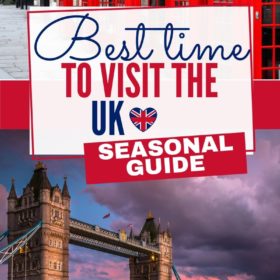
Are you planning a trip to the UK but unsure of the best time of year to visit? In this article discover what each season has to offer as well as a month by month guide to major events across the UK. Everything you need to know to help you make the right decision for your trip.
If you’re dreaming of having a spot of tea in England or envisioning a bagpipe serenade on the moors of Scotland, then it sounds like you’re on the verge of planning one heck of a British vacation. The question is, when is the best time to visit the UK?
There are many considerations to make when planning your trip , including the pros and cons of travelling “in season,” what types of activities you want to do and especially what kind of weather should you expect.
In this article, we will answer all commonly asked questions including
- what you can expect from the weather during each season
- the dates of school and public holidays – and the pros and cons of travelling during these peak times
- expected hours of daylight throughout the year and the impact this can have on your plans
- what (and when) major events occur throughout the year
- plus a guide to the best time to visit England, Wales, Scotland and Northern Ireland

FAQ’s about the best time of year to visit the UK
Many questions about when is the best time to visit the UK invariably revolve around the weather. The only certainty about the UK weather is that is unpredictable.
- When is winter in the UK?
The winter months ranges from mid-November to early March.
- When is summer in the UK?
The summer months range from early June to the end of August.
- Can I see the Northern Lights in the UK?
For the best chance to see the Aurora Borealis (Northern Lights) head to to Northern Scotland.
- What is the rainiest month in the UK?
Although December to February are the months that tend to have the most rainfall in the UK (and often can fall as snow especially on higher ground) expect rain at any time of year.
- What is the hottest month of the year in the UK?
During the summer months expect generally warm to hot weather with July (on average) the month with the highest average temperatures.
- When is peak season in the UK?
Peak season in the UK is July and August. This also coincides with school holidays across the country.
- When is the shoulder season in the UK?
Shoulder season in the UK is May, June and September.
- When are the major public holidays in the UK?
In addition to Christmas, New Year and Easter holidays there are a number of public holidays (called ‘Bank” holidays) throughout the year including May Day Bank Holiday (first Monday in May), Spring Bank Holiday (last Monday in May – and yes there are two Bank Holiday weekends in May!), and the Summer Bank Holiday (last Monday in August)
- FAQ's about the best time of year to visit the UK
The weather
Pros and cons of visiting the uk during peak season, advantages of visiting the uk during shoulder season, pros and cons of visiting the uk during low season, impact of daylight hours, when is the best time to visit england, when is the best time to visit scotland, when is the best time to visit wales, when is the best time to visit northern ireland, essential guides, when is the best time to visit london, happy uk travel planning, when is the best time to visit the united kingdom.
Factors to consider when planning your trip
- Pros and cons of travelling during Peak Season, Shoulder Season or Low Season
- The impact of daylight hours
The UK is a small island divided into 4 separate nations — England , Wales , Northern Ireland and Scotland . Each has their own cultural identities and attractions to consider, not to mention their own weather idiosyncrasies.
Basically though, the entire UK has a temperate climate with warm summers that never get too hot and cold winters that never get too cold.
The UK weather is, however, famously unreliable and generally not the primary reason to visit the UK! Think about your many clothing options when packing— and don’t forget the umbrella (my UK packing guide for every season will help!)
The answer to the question, ‘When is the best time of year to visit the UK?’ really depends on what you’re looking for. The UK’s warmest weather is in the summer. Autumn and spring are charming but may be a little bit chilly for certain outdoor activities. Winter can be cold, blustery and damp, though it usually only snows around 24 days out of the year.
Spring in the UK begins in March and goes through to the end of May. The weather starts off cold and rainy but becomes more mild as the months progress. Finally, by the end of May and beginning of June, the UK starts to warm up. The average maximum temperatures are as follows:
- March, 12°C (54°F)
- April, 15°C (59°F)
- May, 18°C (64°F)
- June, 21°C (70°F)
Read – Complete Guide to visiting the UK in spring
The summer is generally very pleasant in the UK and tends to be dryer than in the autumn and winter months. The summer begins in June and ends in early September. The average maximum temperatures for the summer months are as follows:
- July, 23°C (73°F)
- August, 23°C (73°F)
- September, 20°C (68°F)
Read – Complete Guide to visiting the UK in summer
Autumn goes from September through to the end of November. Days change from crisp to blustery and then get downright cold. There tends to be a higher level of precipitation during these months as well. The average maximum temperatures for the autumn months are as follows:
- October, 16°C (61°F)
- November, 12°C (54°F)
- December, 9°C (48°F)
It can get rather bleak and cold in the UK during the winter months, which go from the start of December through to the end of February. The average maximum temperatures for the UK in winter months are as follows:
- January, 9°C (48°F)
- February, 9°C (48°F)
Read – Complete Guide to visiting the UK in winter
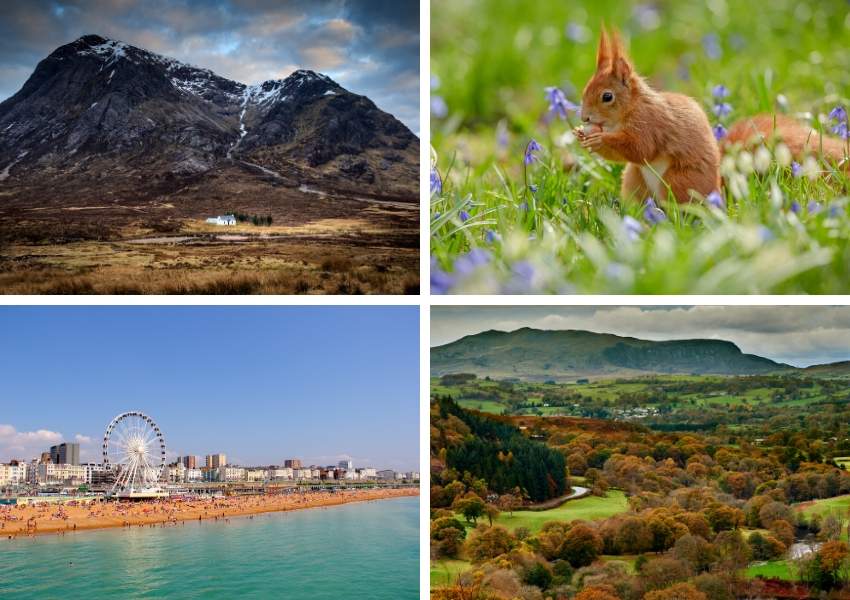
Peak season for travel in the UK are the summer months of July and August. These dates also coincide with the long 6 week summer school holidays (and hopefully sunny weather)
What are the pros of visiting the UK during peak season?
- The UK weather is generally at its best during these months.
- Hours of daylight are long which means more time to explore the sights.
- Some of the UK’s major events occur during July (Wimbledon) and August (Edinburgh Festival)
- Many historic sights have special events on especially for families e.g jousting at Warwick Castle.
What are the cons of traveling during peak season?
- It is the most expensive time of year to visit and prices for flights, accommodation and transportation can be sky-high.
- Main attractions across the country are busy – buy tickets ahead of time (skip the line tickets are worth the expense unless you enjoy wasting precious holiday time in a queue!)
- Restaurants and hotels are jam-packed.
- Roads are busy and traffic jams are common which can add to the stress if you are planning to hire a car for a road trip
Shoulder season in the UK is in May, early June, September and early October.
What are the pros of visiting the UK during shoulder season?
- Less expensive than peak season
- Better availability for accommodation
- Some of the UK’s most popular events occur during these months such as the Chelsea Flower Show (May), Trooping of the Colour (June)
- Less crowded (though the Bank holidays can be busy)
- There are 2 public (bank) holidays in May (first and last Mondays of May) and many popular historical sights organize events especially for families over these long weekends.
- Expect fewer crowds at popular attractions (though school groups may visit museums, art galleries, and castles during term time)
- Long daylight hours
November through to April is generally considered to be the low season for travel to the UK.
Note that some parts of the UK such as London and Edinburgh experience significant numbers of tourists during December and early January which can significantly impact costs.
Pros of visiting the UK during the low season
- Budget friendly
- Less crowded
- Enjoy special events over the festive period including Christmas markets, Christmas lights and decorations in major cities and New Year’s Eve celebrations.
Cons of visiting the UK during the low season
- Weather can be very cold (expect snow during the winter months)
- Daylight hours are reduced (it can get dark as early as 3.30 pm)
- Many popular attractions are closed over the winter months.
The amount of daylight you can expect fluctuates greatly across the year and can have a major impact on your plans.
The amount of daylight can also vary depending on your destination within the UK. The further north you travel the more daylight you can expect in summer and the less in winter.
Average hours of daylight in June (longest day)
London – 16 hours +
Scotland – 17 hours +
Average hours of daylight in December (shortest day)
London – 8 hours
Scotland – 7 hours
First of all, there’s no bad time to visit England , though travelling during every season has its advantages and disadvantages. You can, however, expect some seasonal variation in prices, crowd size and availability of activities.
The summer is the peak tourist season, which is from the end of May to early September. The daylight hours are at their maximum, up to 16 hours per day. The weather is usually delightful and kids are off school (July and August). The inevitable consequence is that everyone starts flocking to the tourist destinations and adding to the already long lines and crowds.
If you dream of gallivanting through the English countryside, add throngs of people sharing the roads and limited parking to your vision. Unfortunately, hotel rates and airfare are usually more expensive in the summer. Still, that charming weather can be a lure that outweighs all of those inconveniences.
If you travel in winter, it may be cold and bleak, and the daylight hours will have waned to just 8 to 10 hours per day. That’s the bad news. The good news is you won’t have to fight any crowds or struggle to get a dinner reservation. There will also be deals to be had on hotel rooms and flights. So if your itinerary contains a lot of indoor activities, maybe winter travel is right for you.
If you’re wondering when is a good time to visit London , it’s similar to travelling in the rest of the UK in terms of weather and seasonal availability. There are a few exceptions, however.
Christmas time in the capital city has been an incredibly popular destination for decades, what with the shopping, the decorations and abundant Christmassy charm.
If however you are a royal watcher, consider traveling in the summer when there are more opportunities to have a peek into the royal lifestyle . Many royal residences are open to the public during the summer because the royals themselves are away on vacation.
Taking all of this into consideration, if you want to know when the best time is to visit England, the answer is (if you can) spring or autumn. During these times the weather is favourable and the daylight hours vary from 11 to 15 hours per day, so there’ll be plenty of time for sightseeing.
Taking a road trip through the English countryside (the Cotswolds , Lake District , Peak District or Northumberland are just two suggestions) is gorgeous in the spring or autumn because either the flowers are blooming or the leaves are turning brilliant shades of orange and yellow. While there are crowds they are smaller and more manageable than in the peak summer season.
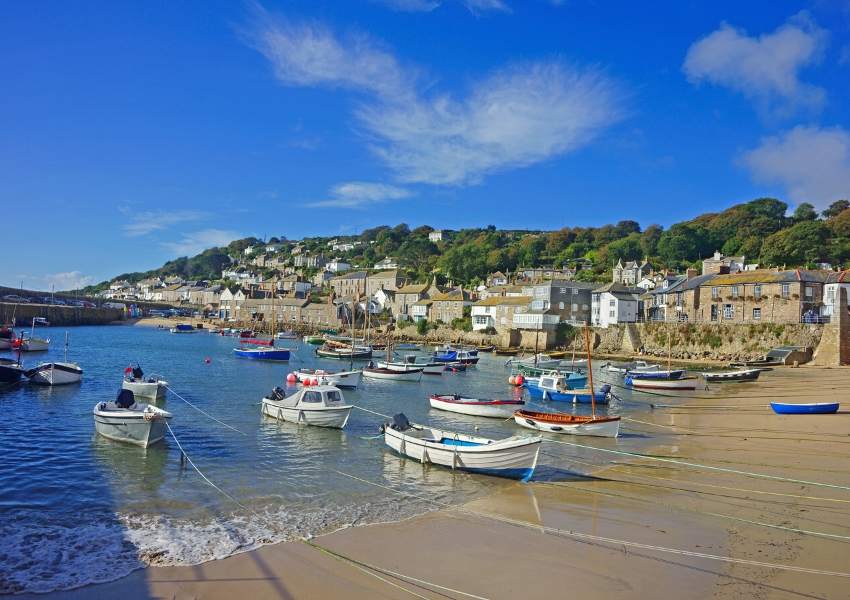
Just like it did for England, the timing of your Scotland trip depends upon what you activities have planned. The country’s winter may be more suited to hunkering down in an Edinburgh pub rather than hiking through the Highlands. The average temperature hovers around 0°C (32°F) and is likely to be even colder on the coast and in higher attitudes.
Like England, airfares and hotel rooms will generally be cheaper and you won’t have to fight the crowds in the cities or in the train stations. You will, however, need to be ready for the reduced daylight hours. In January, for example, the sun rises at 8:47 a.m. and sets at 3:53 p.m.
There is good news, though. Because of Scotland’s high latitude and particularly dark winter nights, there’s a chance that you will be treated to the aurora borealis or the northern lights — a dazzling and somewhat ethereal light show in the sky.
A summer trip to Scotland is defined by pros and cons.
The pros — you’ll have lovely weather, as it never gets too terribly hot in Scotland. Temperatures range from 15°C (59°F) to 17°C (63 °F). The daylight hours are also long. In August, for example, the sun rises at 4:22 a.m. and sets at 8:03 p.m.
There will be a lot to do, like hiking, camping, driving tours, beautiful train journeys , exploring the cities, islands and the countryside.There are festivals for every taste, such as the Edinburgh Fringe Festival and the Belladrum Tartan Heart Festival in Inverness.
Now for some cons — July and August are peak months for travel, and the crowds will be significantly larger and the prices will be higher. If you don’t mind competing for a little space and paying more for the privilege, then a summer trip may just be the perfect one for you.
As with England, visiting Scotland in the late spring/early summer or early autumn is ideal. By June, Scotland gets an amazing 17 hours of daylight. That combined with the spring’s pleasant weather, an average of 7°C (45°F) to 13 °C (55°F), and you will be able to conquer every outdoor activity there is to offer.
If you would prefer to spend your time in Scotland’s cities, the good news is that the summer tourists haven’t arrived yet, so lines won’t be as long and the prices will be more reasonable. The same thing is true for an autumn visit. Starting in November through middle December, airfares tend to be cheaper.
Early autumn is an ideal time of year to drive North Coast 500 , a spectacular 516-mile trip from Inverness along Scotland’s North Highlands that might be one of the most scenic drives in the world.

No matter when you visit Wales , remember, the weather can be unpredictable and you should pack well and be prepared for a variety of temperatures.
The temperature in winter averages 6°C (43°F), but compared to Scotland, there is a good amount of daylight — sunrise is around 7:40 a.m. and sunset is around 6:28 p.m. In spite of the cooler weather, daffodils have been known to make their cheerful appearance late in the winter.
Another plus, if you travel on or near March 1st, you can join the locals in celebrating St. David’s Day. The patron saint of Wales is feted with parades, traditional Welsh dress and plenty of delicious food, not to mention scores of daffodils and leeks.
The summer is a lovely time to visit, as the weather is very agreeable, although the region can get quite a bit of rain. There is between 15-16 hours of daylight during the summer. Temperatures average 16 °C (61 °F), so hiking and camping would be fantastic during this time, as would any coastal family trips.
If you wish to see the Atlantic Puffins take over the island of Skomer, then early July is the time to go, especially if you want to see them parenting their new chicks.
Summer is the busiest time of year, so expect higher prices and be prepared to book well in advance for hotels (and popular Welsh castle hotel stays ), air travel, restaurants and activities.
The late spring and early autumn are great times to go to Wales. There are between 13 and 16 hours of daylight during both seasons. The temperature usually hovers around 13°C (55°F). In May and June, flowers will be blooming in a riot of colors, making the already breathtaking scenery fully come to life.
The Wales Coast Path, an 870-mile long footpath that winds its way along the coastline, makes for a perfect hike during this time. For something a little different, check out The Laugharne Weekend in West Wales — a local, literary and arts celebration of Dylan Thomas and other writers, musicians and comedians who’ve come from Wales.
In the autumn, the mountains and valleys look to be on fire with all shades of gold and orange, and the nights begin to get crisp with a touch of chill. Places like Hay-on-Wye, a charming market town on the River Wye become even more magical in the autumn.
There will also be plenty of seasonal activities, such as at the medieval Powis Castle and Garden. Each year they create the Powis pumpkin trail, where kids can search for the carved pumpkins hidden throughout the garden.
If spending a night in a Welsh castle is on your bucket list why not book one of these amazing Welsh castle hotels ?
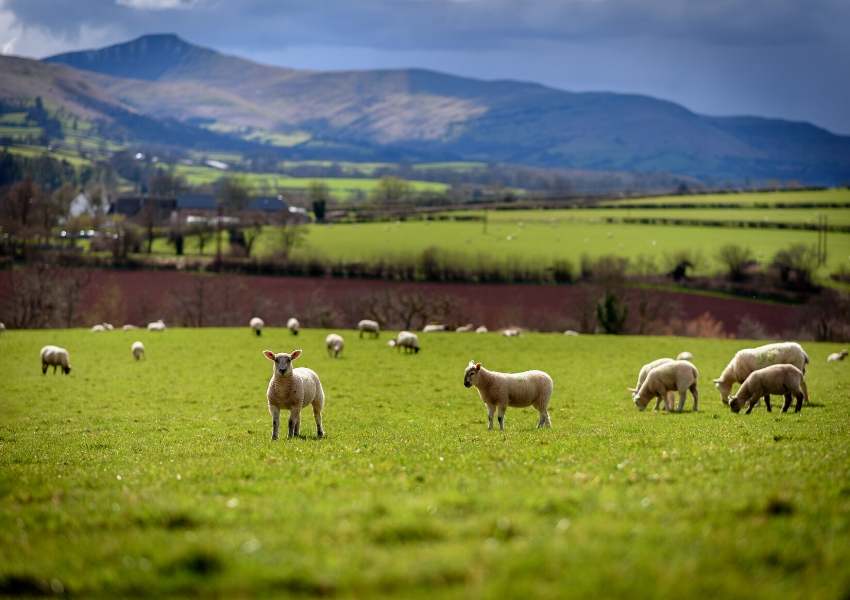
If you wish to visit Northern Ireland when the temperatures are at their warmest, then go during July and August. The average temperature in the summer is 17°C (63°F), but beware because summertime is also when the country’s rainfall is at its peak.
The summer in Northern Ireland has amazingly long daylight hours, 5:00 a.m. to 10:00pm, so you’ll be able to pack in a lot of activities. It is the peak season, which means you’ll be fighting the crowds as you see the sights.
Also, keep in mind, summer vacations for their school children start a few weeks earlier than they do in England, meaning the tourist sites may be more crowded starting at the end of June.
In winter, Northern Ireland is a little colder than England and has about 7-8 hours of daylight. That won’t matter too much if you seek out Belfast’s St. George’s Market, Northern Ireland’s last surviving Victorian market. In December, they offer twilight days for evening shopping. There will also be crafts from local artisans, delightful food and family entertainment.
Like with the other UK regions, you get the best of everything by visiting in the spring or autumn. By late spring, you’ll start to see lambs and calves in the pastures as the temperatures rise to between 10°C (50°C) to 16°C (60°F).
Visit Rathlin Island in the late spring and you’ll see all kinds of nesting birds and the area’s famous puffins. Also, for those festival fans, check out the two-day Bushmills Salmon and Whiskey festiva l held in early June.
In the autumn, as the leaves are changing colors, it’s a perfect time to visit the Glens of Antrim, or known locally simply as The Glens. It’s a region of County Antrim known for it’s astonishing natural beauty.
In October, the Glens Storytelling Festival is a five-day event for tourists and locals alike to experience the magic of this area’s story telling traditions. Expect family-friendly stories to have a touch of Halloween magic.

Which is the best month to visit the UK? Month by month pros and cons + guide to all the major events in the UK
❄️ Visiting the UK in winter
🌷 Visiting the UK in spring
☀️ Visiting the UK in the summer
🍂 Visiting the UK in autumn
🧣 Visiting Scotland in winter
January in the UK falls within the low tourist season, which creates some distinct advantages for travellers. Students return to school and the cold weather, gloomy skies and waning daylight translate into fewer people, cheaper hotel rooms and inexpensive airfare.
Also, the after-Christmas sales are in full swing, so bargain hunters will have a field day shopping. Theatre tickets and restaurant reservations will also be easier to get. A January trip is sounding better and better. Here are some fun things to do in January:
• New Year’s Day Parade in London —This is a fabulous, free and family-friendly parade in the city’s West End. It’s three and a half hours of music and revere that won’t soon be forgotten.
• Simplyhealth Great Edinburgh Winter Run— If you’re in Scotland and are a fitness buff, join 3000 other hardcore health nuts for this 5k of fun that also affords fantastic views of the city.
• Big Burns Supper in Dumfries Scotland— Part of the country’s Burns Night, this event occurs in the latter half of the month and offers all sorts of venues with everything from comedy to cabaret.
February in the UK falls securely within low season for travellers, but that doesn’t mean you can’t have an absolutely fantastic vacation if you choose to travel then. If you don’t mind cooler weather, the seaside towns should be virtually empty, for example.
Keep in mind that UK schools have a half-term break in February, which may cause unexpected crowds at tourist sites. Here are some fun things to do in February:
• V alentine’s Day in London —A visit to multiple artisan chocolate shops would definitely be in order, as would a romantic dinner for two in one of London’s many fine-dining restaurants.
• The Orchid Festival at London’s Kew Gardens —If you adore flowers and don’t want to travel all the way to Indonesia, then this show is not to be missed. There will be over 5000 species of orchids to admire.
• London’s Classic Car Show in Olympia Exhibition Centre —You’ll see some of the finest and most collectable vintage models in the world.
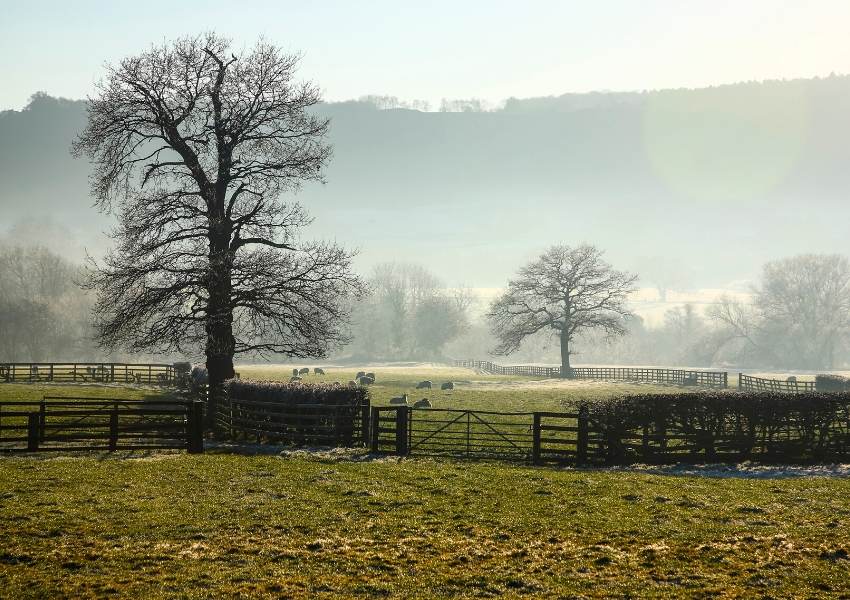
Flowers will be just beginning to bloom throughout the UK, a promise that spring is just around the corner.
March is a shoulder season for tourists, which means it’s not too busy and not too light. So you can throw on a coat and start taking advantage of some of the outdoor fun that the UK has to offer. Here are some fun things to do in March:
• Oxford and Cambridge Boat Race in London — When is the best time to travel to England? When there are 250,000 screaming rowing fans cheering on the edge of the Thames. This is one of the largest sporting events held in London and it’s free! (Sometimes this event happens in April, so check online to see.)
• Glasgow International Comedy Festival —Are you a comedy fan? In the latter half of March, travel to Scotland and see the funniest stars from all around the UK hit the stage in what is Europe’s largest comedy festival.
• St. Patrick’s Day in Northern Ireland —On March 17th, County Armagh and County Down host the annual Home of Saint Patrick Festival that consists of concerts, family-friendly activities and general fun.
Ah, April. The flowers are blooming and the days are getting longer. It’s a shoulder season, so it’s a pretty good time to enjoy the natural beauty that the UK has to offer without having to brave too many crowds.
Students in the UK have a school break around Easter, which usually falls in this month, so that may alter the tourist scene slightly. Regardless, there are also a lot of fun, local activities to choose from. Here are some examples:
• Isle of Wight Walking Festival —Fun for all ages and all fitness levels. Thousands of locals and tourists alike explore the island and take in its stark, scenic beauty.
• Shakespeare’s Birthday in Stratford-upon-Avon —Celebrate The Bard’s birthday by traveling to his birthplace for performances, music and all kinds of fun.
• Cardiff Flower Show —If you’re a gardener or a flower appreciator and are planning to be in Wales, you might want to visit the Royal Horticultural Society’s Cardiff Flower Show. There are countless exhibits and demonstrations to inspire and fascinate those with or without a green thumb.

The weather is getting ever warmer and the days are getting longer in the UK, yet May is still a shoulder season, which means its an excellent time to visit. Things can get busy over the Bank holiday weekends with many Brits enjoying a spring staycation .
It’s also getting dryer, so rain may not be as much of an issue as it is in other months. Still, bring a few layers to wrap up in, just in case. Here are some fun things to do in May:
• Chelsea Flower Show – Since 1913, except during the two world wars, the famous Chelsea Flower Show has been a glamorous affair celebrating British flowers and garden design. It takes place on the grounds of the Royal Hospital in Chelsea and makes for a fun and historical activity whilst in the UK.
• Gloucester Docks Tall Ship Festival — Come see tall ships in all of their splendor along with fun and games for the whole family. There will be live stages with local bands as well as a food market
• Gordon Castle Highland Games and Country Fair – Join over 10,000 locals and tourists at Scotland’s only highland games and country fair. It’s at the magnificent Gordon Castle located near Fochabers in Moray.
The middle of June marks the beginning of peak season for traveling in the UK, so make sure you’ve got those reservations, tickets and bookings well ahead of time.
You have an excellent chance of pleasant weather and agreeable temperatures, so live it up! Here are some fun things to do in June:
• Glastonbury Festival — This world-famous five-day festival takes place in Pilton, Somerset, in the south west of England. It features big-name contemporary musical acts as well as dance, cabaret and theater.
• Gregynog Music Festival — Attention classical music lovers! In the gorgeous Welsh countryside in the village of Tergynon, you’ll find the oldest classical music festival in Wales, which attracts some of the world’s finest musicians.
• The Royal Highland Show — Scotland’s largest agricultural show put on by the Royal Highland and Agricultural Society of Scotland. Thousands of visitors come from all over the globe to see over 1000 exhibitors and scores of livestock. It’s in Ingliston, an area of West Edinburgh.

July is peak travel season with very long days and probably the best weather offered by the UK. Restaurants will be jam-packed and tourist sites will be overflowing with visitors.
Add in the students who have just been released from school on summer break and you will have a lot of people to contend with. No wonder there is a lot going on the UK during the summer! Here are some examples:
• Wimbledon — In a town called Wimbledon, there’s a little yearly tennis tournament. Actually, it’s probably the most major tournament in the tennis world.
Good to know – If you want to do it on the cheap, go outside the stadium to Henman Hill and buy a £30 ticket to watch the matches on a giant TV. If you want the real thing, then you’ll need to shell out quite a bit more, depending on which match you see.
• The Big Cheese at Caerphilly — History buffs, would you like to be sent back to medieval days at Caerphilly Castle ? See reenactments and battles, along with entertainment, food, period dance and a whole lot of fun.
The weather is warm, so that distracts you from the peak season crowds traveling throughout the UK. All schools are enjoying summer break, so expect to be shoulder to shoulder with locals and tourists alike at all the tourist sites.
Here are some fun things to do in August:
• Wilderness Festival —Located in Oxfordshire’s Cornbury Park, this festival offers easy-going music, theatrical productions, amazing food and really cool art, all in a gorgeous lakeside setting.
• Edinburgh Fringe Festival — If you like crowds, music and having serious fun, then try out the Edinburgh Fringe Festival, the world’s largest arts festival. It goes on for days and hosts so much talent, it takes hundreds of venues just to fit everything in. Check their website to see the list of performers.
• The National Eisteddfod — A festival celebrating all things Welsh . It’s in the first 8 days of August and there is food, music, arts and design.

The beginning of September is part of the summer peak season but with the end of summer and beginning of autumn, the rest of the month is a shoulder season.
Most students head back to school early in September, so vacationers return home and tourist sites will be less crowded. Here are some fun things to do in September:
• The Jane Austen Festival — Do you dream of spending a quiet evening with Mr. Darcy or Elizabeth Bennet? Travel to Bath and spend 10 days choosing from over 80 Jane Austen-related events. There’s even a Regency Costumed Masked Ball!
• Culture Night Belfast – For the past several years, in the second half of September, people hit the Belfast streets from City Hall to the Cathedral Quarter to enjoy a free celebration of art, language and history of Northern Ireland. There is something to do for all ages.
There’s a crisp autumn chill in the air and Halloween ghosts and goblins are just around the corner. The beginning of October is a shoulder season, and by the end, it slows down into low season. Still, there are lots of interesting things to tackle in the UK during October.
• Harwich International Shanty Festival – For those who can’t resist the call of that salty ocean air, sail on over to Harwich and sing an old song of the sea. There’ll be concerts and barge trips and crafts for the saltiest old sailors to the youngest of landlubbers.
• The Callander Jazz and Blues Festival — Who doesn’t enjoy jazz in a charming rural setting? In 2006, this festival was born and has grown larger every year. It’s a long weekend of all types of music in a variety of venues. You’ll see live blues, jazz, boogie and soul from a huge variety of artists.

This is the low season for travel in the UK. The weather is brisk and it’s best to remember to bring a bunch of comfy layers and a jacket in your suitcase. Here are some fun things to do in November:
• Guy Fawkes Night —This celebration marks the night back in 1605 when Guy Fawkes tried to blow up the Houses of Parliament. He did not succeed, and the anniversary has traditionally been remembered with a bonfire. Given that could easily get out of hand, most celebrations have switched to fireworks.
• Diwali on Trafalgar Square – Diwali is the festival of lights celebrated by Hindu, Jain and Sikh people all over the world. This one is the biggest in the UK and features amazing dancers in stunningly beautiful and colorful dress. Expect to see market stalls with amazing food, as well as crafts and fun activities for the whole family.
Yes, it’s pretty chilly in the UK during December, and the days have grown a wee bit short. There’s still a lot to love about this winter month. Keep in mind, that students in the UK usually have the final weeks in December off, so that could affect the crowd levels.
The weeks closest to Christmas are considered a peak tourist season, so there are many Christmas activities to choose from including festive markets all over the UK.
• Belfast Giants Ice Hockey — For something really different, grab the whole family, live like a local and check out an ice hockey game. Their website has all the information about tickets and times.
• Elfingrove at the Kelvingrove Art Gallery and Museum —This magnificent museum in Glasgow transforms itself and offers night-time tours along with local food and singing.
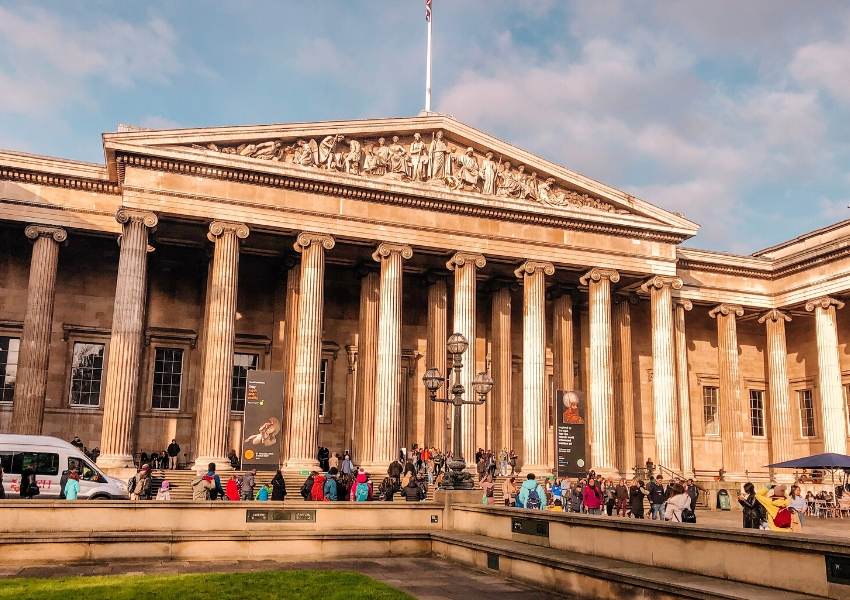
This is really a difficult question to answer and really deserves a post all of its own.
Many people insist that it’s Christmas. Trafalgar Square has a giant lit up Christmas tree dripping in ornaments and Christmas cheer. Carol singing and festive events occur all throughout London.
There are several London Christmas Markets that will surely take care of everyone on that Christmas list. There are also a number of festive events held annually around Christmas at many of the castles near London.
But in summer the hours of daylight are longer and exploring London’s attractions on a warm sunny day is also a wonderful experience.
To be honest for me deciding when to visit London is best answered with the words “it is always a good idea!”
Read more – Visiting London in winter | 21 Festive things to do and see in London in December | 29 Things to do in London in Spring | Guide to visiting London in Fall

So the only true answer to the question, “When is the best time to go to England, Scotland, Wales or Northern Ireland?” really does depend on your own interests and available time to go.
Once you have settled on the time of year to visit the UK you are now ready to start planning your trip itinerary.
My UK Trip Planner will help you to plan the perfect UK vacation in 10 easy to follow steps – I recommend starting there!
For UK inspiration my top 21 landmarks in England , 19 places to visit in Scotland , top 10 things to see in Wales , top 10 things to do in Northern Ireland and London bucket list articles are great places to start.
I recommend prioritising what you want to see and do. You can also take some virtual tours of London and UK landmarks and sights to help you plan.
Other useful resources to help you plan your trip:
- How much does a holiday in the UK cost? Read my UK travel budget guide to help calculate your budget!
- Choose from my selection of the best guidebooks for UK travel
- Click here for my recommendations of the best booking sites for travel to the UK
- Prefer an organised tour? Check out our recommendations of the best UK tours available for 2021 and beyond!
- How to get around the UK (Complete Guide to Transportation in the UK)
Weather & Climate
Top Cities to Visit
Best U.K. Destinations
Traveling by Train
Driving in the U.K.
Power Adapters
Tipping Etiquette
Top Things to Do
Free Things to Do
Family-Friendly Attractions
Outdoor Adventure Destinations
National Parks
Must-Try Food in the U.K.
Best Time to Visit
The Best Time to Visit the United Kingdom
:max_bytes(150000):strip_icc():format(webp)/FerneArfin-5b6f00c446e0fb0050324e74.jpg)
TripSavvy / Maritsa Patrinos
The best time to visit the United Kingdom is in the spring or fall. In April and May, the countryside bursts into bloom with a chaos of wildflowers; if you avoid the Easter school vacations, you'll find many of the best spots uncrowded and the prices reasonable. It's still mild in September and October, but if you don't mind cold weather, you can't beat December. The British do Christmas and New Year like nobody else—the festive buzz is irresistible.
This guide will help you plan to get the best of every season.
Popular Events and Festivals
Music festivals and special events happen all year round, but some of the biggest attract an enormous international following. Glastonbury and The Isle of Wight festivals are very popular summer music festivals. The Edinburgh Festival Fringe, the biggest arts festival in the world, takes over Edinburgh for all of August. Accommodations are booked up a year in advance for these.
The Weather in the United Kingdom
The weather in the UK is relatively temperate year-round. Snow is rare, except in the mountains. Winter temperatures throughout the country rarely fall below freezing, even in Scotland; however, during the winter months, rain, humidity, and wind can make temperatures of 35 to 40 degrees Fahrenheit seem much colder. Older, charming accommodations are often drafty and cold for American tastes. Bring layers: They were invented for Britain's climate.
Summer has been warmer in recent years with record highs in the 90s and even 100s. As a rule, June, July, and August average in the high 60s to mid-70s. Scotland can be as much as 10 degrees Fahrenheit cooler than London.
Peak Season in the United Kingdom
It's easier to identify the "off-season" in the UK than it is to define the peak season. From mid-January through March, the weather is awful, so prices do tend to be at their lowest. A lot of attractions close for annual maintenance. Otherwise, popular seasons extend from mid-March to early January. School vacations are the busiest; if crowds bother you, avoid coming during Easter and the months of July and August. However, prices don't change much throughout most of the year.
Once the Christmas and New Year's festivities die down, this is the true off-season. Prices are down and the weather is grim. On the upside, many of the museums stage special exhibitions at this slow time of year.
Events to check out:
- Hogmanay : The Scottish New Year celebrations kick off the month with torchlight parades, fireworks, and indoor and outdoor concerts that last for days.
- Up Helly Aa : A mad Viking fire festival ends the month in Lerwick, Shetland, one of Scotland's many January Fire Festivals .
Find yourself a place to curl up with your significant other by a fireplace and forget the not-so-great outdoors. Temperatures average between the mid-30s and 40s Fahrenheit. The rainiest months are behind us now, but sunny days are still pretty rare. This is a good time of year for an indoor break in a romantic hotel.
- The Jorvik Viking Festival : This is a celebration of York's Norse heritage with reenactments, parades, craft workshops, and fireworks.
- Guinness Six Nations Rugby : The annual rugby competition between England, Scotland, Wales, Ireland, Italy, and France kicks off in February with matches in Cardiff, London, and Edinburgh.
The first signs of spring cheer everyone up. Days are noticeably longer, crocuses are blooming, daffodils appear, and urban magnolias bloom. The temperatures range from the low 40s to 50 degrees Fahrenheit.
- St Patrick's Day : In the UK, this is as big an event as it is in other major cities of the Irish diaspora. There are festivals and parades in London, Manchester, Birmingham, and Edinburgh.
April weather is unpredictable in the UK. While the average is mild and in the mid-50s, temperatures can drop into the 40s, feeling much cooler in windy rain.
- The Grand National : England's most iconic steeplechase race takes place at Aintree in Liverpool. People who never gamble often put a small "flutter" on a horse for this race.
- Shakespeare's Birthday: April 23 is celebrated with festivities in Stratford-upon-Avon .
Poets may say that April is the cruelest month, but we think that honor belongs to May. The month is a teaser, almost always marked by long stretches of "unseasonably" warm, sunny weather and finishing with a cold, wet June. Nevermind—this is the best time of year to see English bluebells carpet forest floors.
- The arts festival season opens with major arts festivals in Brighton and a classy jazz fest in Cheltenham.
- Chelsea Flower Show : This is a fixture on both the garden and social calendars and the country's show gardens are at their best.
Most of the weather guides will tell you that June is warm and comfortable with temperatures averaging in the high 60s. However, they can drop into the low 40s, leaving locals and tourists alike wondering what happened to summer. Because June sees the longest days of the year, you can expect 20 hours of daylight in much of the UK.
- Royal Ascot : It's a great social and sporting event with ladies in amazing hats and gents in top hats and morning suits cheering on their favorite nags.
- The Isle of Wight Festival : One of England's big camping and music festivals. With some of the biggest names in music performing, tickets are scarce.
- Glastonbury : One of the world's great music festivals.
- Wimbledon: The grand slam lawn tennis championship, two weeks from the end of June.
Summer is here at last. Expect reliably warm weather and lots of dry sunshine. Temperatures range from the mid-70s to the mid-80s.
- The Henley Royal Regatta : While rowing crews from all over the world compete, this is also a good chance to watch English high society at play.
- The music festival season is in full swing with loads of good ones all over the country.
August is slightly cooler than July. Daytime temperatures reach the 70s, while mornings and evenings are cool. If you don't need a sweater or a light jacket in the morning, you know the day will be a scorcher. The month is dry and bright.
- The Edinburgh Fringe : The world's biggest, open-access multi-arts festival takes over most of Edinburgh for most of August.
- Cowes Week : As many as 1,000 sailboats crowd Isle of Wight's harbors to take part in up to 40 races a day during the world's biggest regatta.
- Bristol International Balloon Fiesta : If you can get a spot, stand on Brunel's Clifton Suspension Bridge over the Avon Gorge to watch this fab event.
September is mild and autumnal. Daytime temperatures average between 50 and 65 degrees Fahrenheit, with evenings turning chillier.
- It's the harvest season, so ask at local tourist information offices about food and drink festivals, or check the Campaign for Real Ale (CAMRA) website for local beer festivals.
- The Jane Austen Festival : Taking place in Bath, this festival is ten days of Regency-costumed events.
It's a bit colder and a bit wetter, especially in the west of Scotland and west Wales. Average temperatures are between 44 and 57 degrees Fahrenheit.
- Food and beer festivals abound in the Forest of Dean , Hertford , Broadstairs in Kent and Melton Mobray . Head to Nottingham for the Robin Hood Beer Festival , or to Lincolnshire for sausages .
This is one of the coldest, wettest months, with constant gray skies and days so short that people turn their lights on by 3 p.m.
- The panto season gets underway : This very British form of family entertainment continues through December—and in some places, all the way to February.
- Bonfire Night: On the 5th of November, Guy Fawkes is commemorated with fireworks displays and huge public bonfires.
Daylight lasts under eight hours between sunrise and sunset on average—even less in Scotland. This is a very dark month. All the better to enjoy the sparkly big deal that's the British holiday season. All of Britain's cities have fabulous Christmas lights, spectacular shop windows, and big Christmas markets.
- Find the best Christmas markets in the UK
- Attend a carol concert in an English Cathedral
The best time to visit the United Kingdom is in the spring or fall. In April and May, the countryside bursts with wildflower blooms, and in September and October, the temperature is mild and travel costs are low.
The cheapest time to travel to the United Kingdom is from November 1 to December 12 and from December 25 to March 14. During these time periods, the airlines usually offer unbelievably inexpensive fares.
Past travelers spent the equivalent of 201 U.S. dollars per day, on average , on vacation in London, which includes meals, local transportation, and admission to sights.
City Monitor. "The Edinburgh Fringe is the world's biggest arts festival." Retrieved February 12, 2021.
Time and Date. "Sunrise and sunset times in London, December 2021." Retrieved February 12, 2021.
The Best Time to Visit Macao
The Best Time to Visit Disney World
10 Great Reasons to Visit the United Kingdom
10 Questions to Ask Yourself Before You Plan Your UK Trip
The Best Time to Visit Washington D.C.
The Best Time to Visit the Bahamas
The Best Time To Visit San Diego
The Best Time to Visit Dubai
The Best Time to Visit Spain
The Best Time to Visit Japan
The Best Time to Visit Munich
The Best Time to Visit Scotland
The Best Time to Visit Boston
Best Time to Visit Wales
The Best Time to Visit Naples, Italy
Best Time to Visit Edinburgh

When Is The Best Time To Visit England?
Find out the best time to visit england, based on the different seasons, weather and special events across the country..
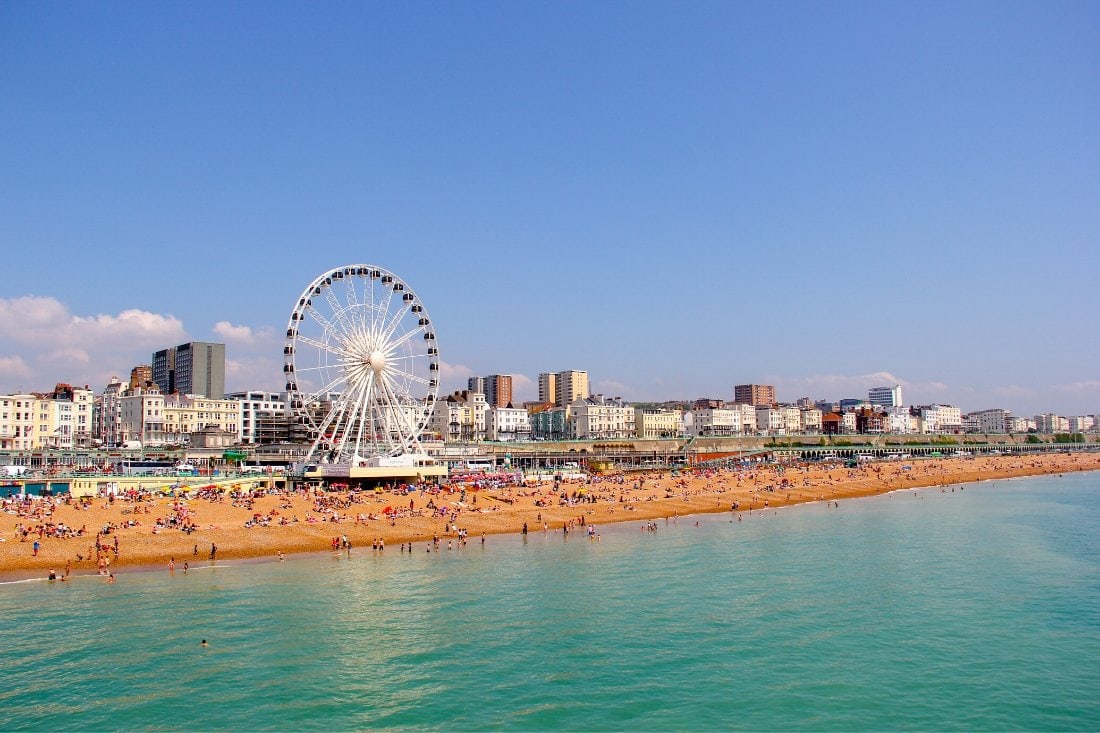
If you’re trying to decide when to plan a trip England, there are lots of factors to take into consideration. There’s the English weather, which has a reputation around the world for being a little unreliable.
Then there are special events and festivals you might want to plan your trip around. Plus, there are spectacular seasons for scenery, plants, trees and wildlife.
Maybe you’ve always dreamed of seeing London’s twinkly Christmas lights, or would love to see the cherry blossom or wisteria in bloom around the country in spring? Perhaps you’re keen to spend a few days at the English seaside, so a summer trip would be best. Road trips are great all year round, but you’d rather not be driving through heavy wind, rain or snow.
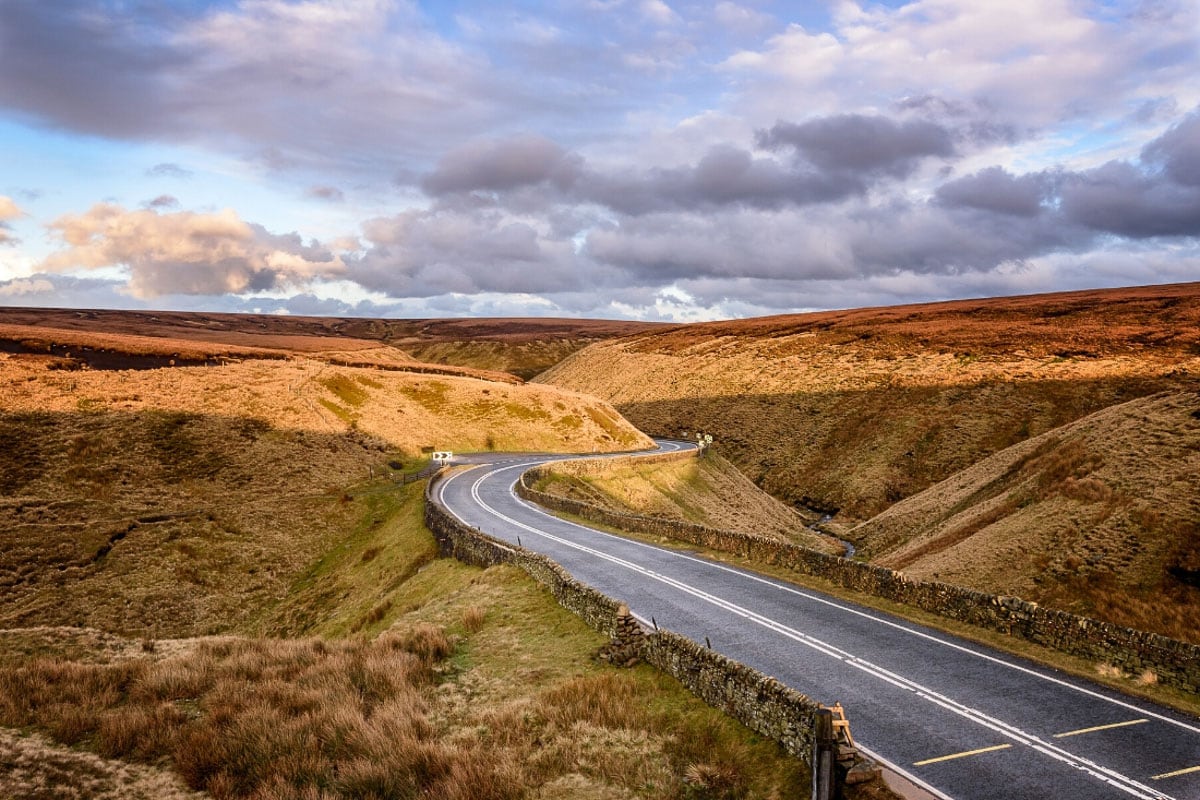
Whatever your criteria, we’re here to help you decide the best time of year to visit England.
Time to take a look at the weather, the seasons and give you a bit of info so you can make an informed decision on when to visit.
Weather in England
The United Kingdom is a place obsessed with weather. We talk about it a lot, commenting on the shade of grey in the sky, how warm the sun is or how many mm of rain we saw fall yesterday. It’s a part of our culture! But, contrary to what you may have heard, we don’t have awful weather in England… it’s just a little unpredictable and varies from region to region.
In terms of extremes, the highest temperature recorded in England was in Cambridgeshire in 2019, when it hit 38.7 °C. Meanwhile, at the other end of the scale, the lowest temperature recorded in England was in Newport, Shropshire, when it plummeted to −26.1 °C! The warmest areas are in the south of England, and the wettest in the north.
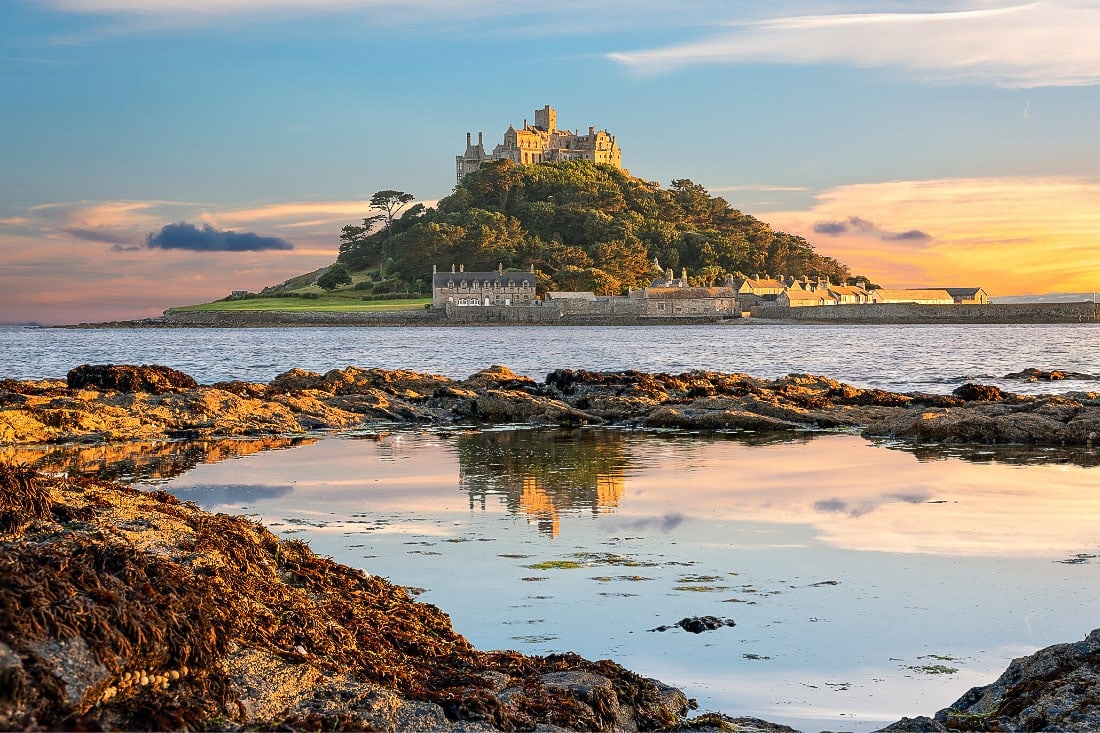
While temperatures have definitely warmed up over the last ten years, on average that means you’re likely to experience average lows of around 5 °C in London in January / February, and highs around 25°C in July / August.
The summers here are usually filled with sunshine and blue skies, making this one of the best times to visit England.
The wettest month in England is November, although December is often pretty cold and blustery too.
Spring in England
Spring in England runs from March to May. This is one of our favourite seasons in England as the number of hours of daylight increases, the weather warms up, gardens start to bloom and the blossom comes out on the trees. It’s a spectacular time to wander the streets of London, with pastel pink cherry blossom and mauve wisteria shading the sunshine as you go.

April and May are lovely months to explore England’s coastlines, as the weather warms up and the sea breeze is a little less painful to endure. In April 2020 we enjoyed more consecutive days of sunshine and blue skies than I can ever remember! It’s a shame we’ve been cooped up for it, but it’s been lovely visiting London’s parks, taking in the fragrances and beauty of the flowers and plants.
There are a few national holidays in Spring in England, including the Easter break and some bank holidays in May. These are popular times for Brits to travel, so if you can avoid these key holidays, you might enjoy sightseeing without the crowds.
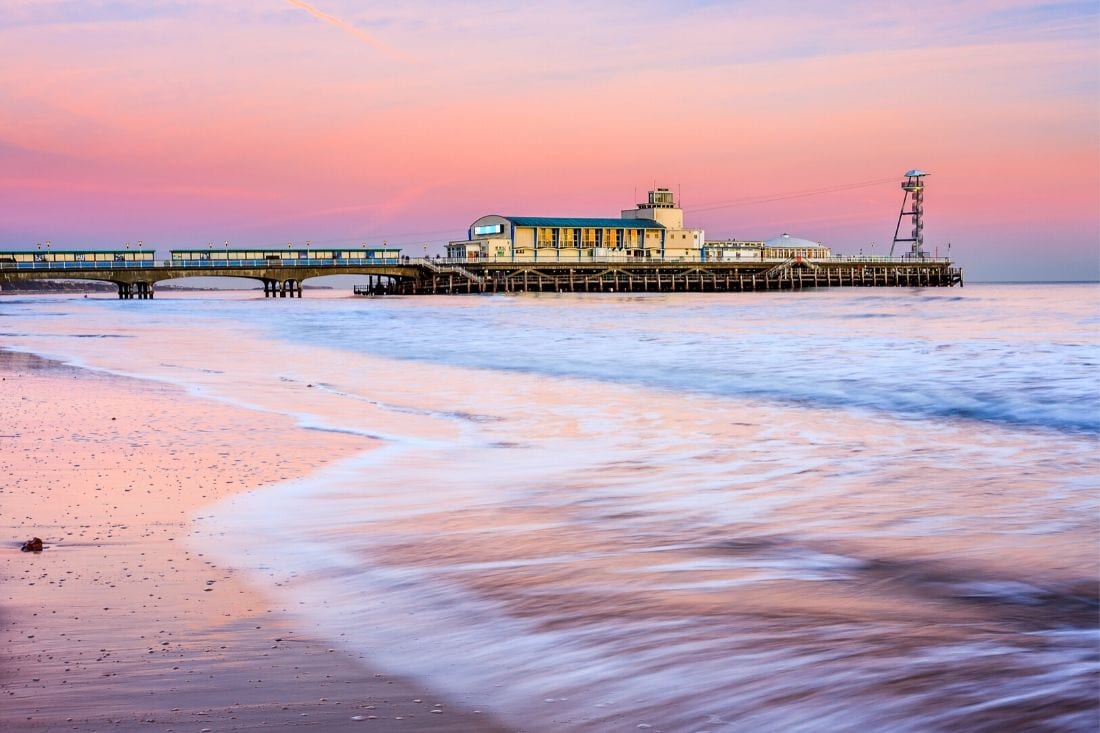
Special events in spring in England
- Cheltenham Festival (March)
- Grand National (April)
- The Oxford & Cambridge Boat Race (April)
- London Marathon (April)
- Brighton Fringe Festival (April & May)
- Chelsea Flower Show (May)
- Birmingham Pride (May)
Summer in England
Summer in England runs from June to August. This is when the country enjoys its warmest temperatures, although it’s worth noting that with intense periods of heat bring the occasional thunderstorm or patch of rain too.
England’s most popular events and festivals take place in summer, including Glastonbury Festival, Wimbledon, Henley Royal Regatta and Notting Hill Carnival. Everyone gathers in pub gardens after work and at weekends, or host BBQs in their gardens. Summer is a really vibrant and fun time to visit England.
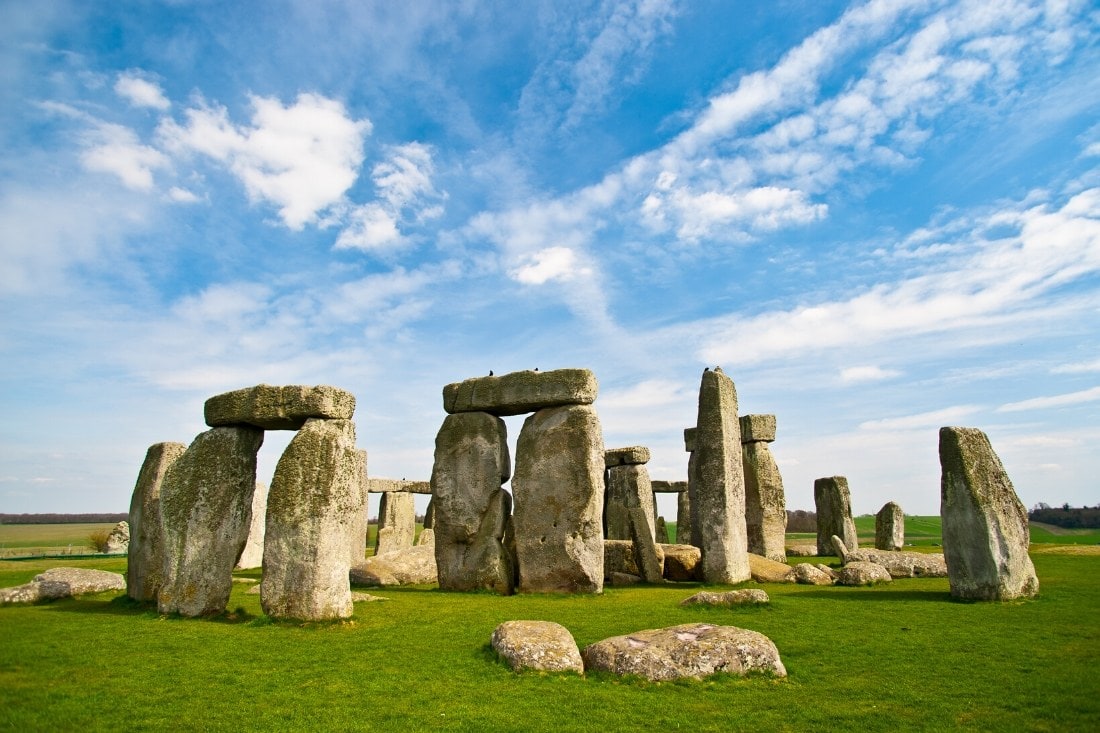
We think June is one of our favourite months to travel in England. The longest day is around 20th June every year, so it’s a time you can enjoy maximum daylight hours exploring! It’s also before the school holidays have started, so tourist attractions will be quieter and hotel prices will be a little lower than peak season (July / August).
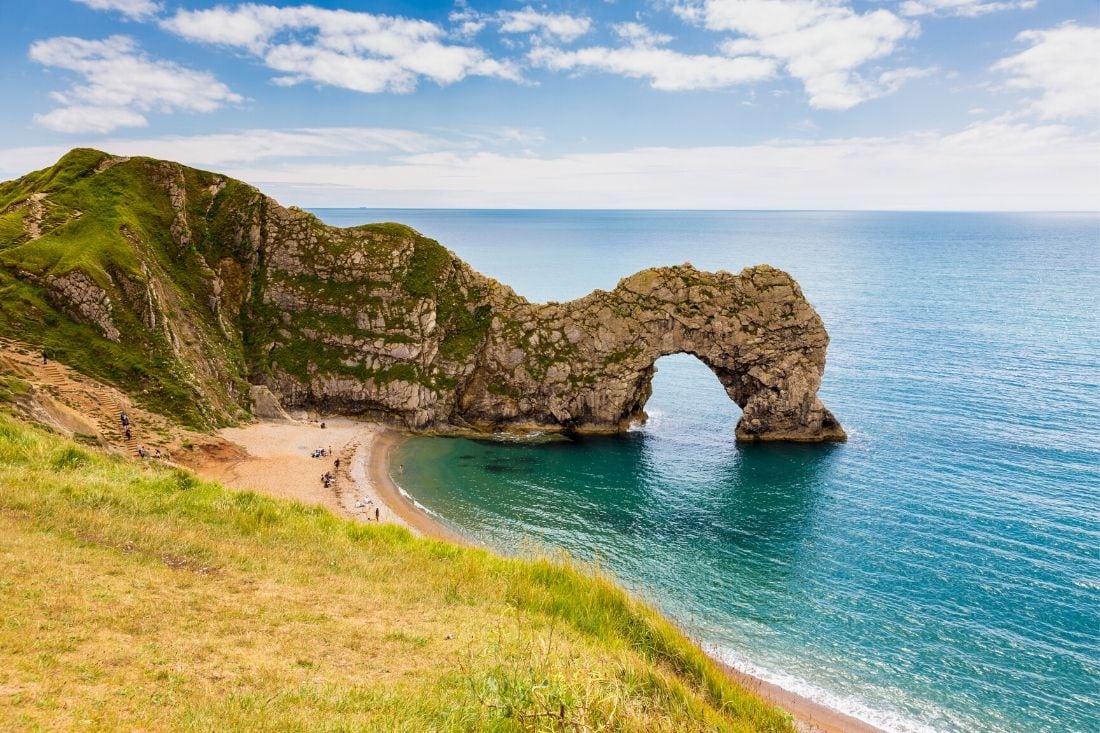
Special events in summer in England:
- Summer solstice at Stonehenge (June)
- Glastonbury (June)
- Wimbledon Lawn Tennis Championships (July)
- London Pride (July)
- BBC Proms (July – September)
- Henley Royal Regatta (July)
- Bristol Balloon Fiesta (August)
- Notting Hill Carnival (August)
Autumn in England
Autumn in England runs from September to November. This season is pretty mixed in terms of weather. September is one of the best months to visit England, as summer temperatures often linger beyond August, and days are still sunny. However, it’s a changeable time, and that means grey skies and rain too. The colours of autumn are spectacular though, with deep reds, oranges and yellows on the trees.
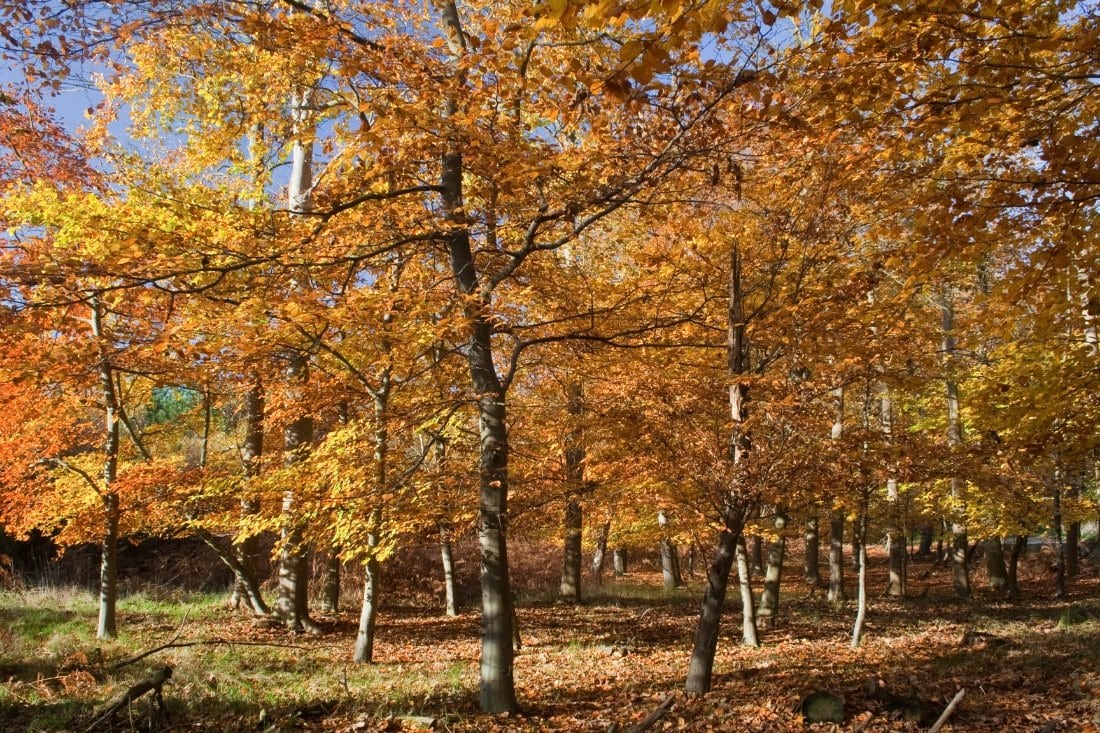
October and November are among the worst times to visit England, but that’s purely based on the unpredictable weather, high rainfall, cooler temperatures and shorter days. However, if you’re planning a trip where you’ll be indoors a fair bit (museums, galleries etc) it’s a great time to visit. Crowds are reduced and prices tend to be lower.
Mid to end of November is a great time to see London in its festive glory. The main Christmas lights on Oxford Street and Regent Street tend to be switched on around the middle of November, so it’s a lovely time to see the magic of London, as well as stock up on some Christmas presents!
Special events in autumn in England
- Turner Prize, Margate (September – January)
- London Film Festival (October)
- Bonfire Night / Guy Fawkes (November)
- Christmas lights (lights usually switch on around mid-November)

Winter in England
Winter in England runs from December to February. This is the coldest time to visit England, so wrap up warm. Mornings are frosty and days are short. It’s a time for cosy pub sessions by the fire and indoor activities.
Despite the plummeting temperatures, December is one of our favourite months to visit England. It’s absolutely magical. Ice rinks pop up out of nowhere, the Christmas lights are sparkling and there’s an abundance of lovely markets selling handmade gifts and warming cups of mulled wine.
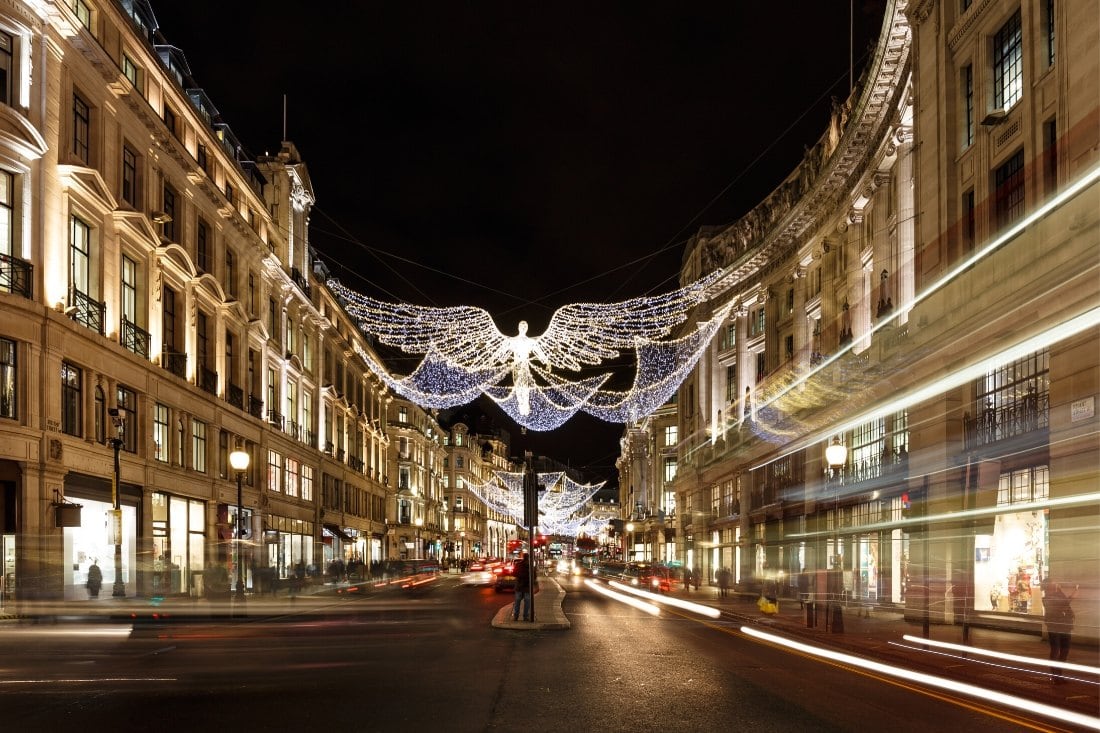
Most cities have Christmas markets and pretty twinkly lights, so no matter where you go in England, you’re guaranteed to have a magical time. For something different, head to Birmingham for their world-famous Frankfurt Christmas Market, which lines the streets from Symphony Hall to the Bullring.
You could even take a day trip to the Warner Bros. Studio Tour London – The Making of Harry Potter, just outside London, which always puts on a magical experience at Christmastime.
The winter months of January and February are pretty bleak months to visit, but it’s when you’re most likely to experience snow in England. The majority of England’s snowfall happens in places with high altitudes, like the Lake District and Peak District .
That being said, it’s becoming more and more common to have a few days of snow in England. We went on a road trip to The Cotswolds last year and couldn’t believe how magical it was with a dusting of snow on the pretty stone buildings!
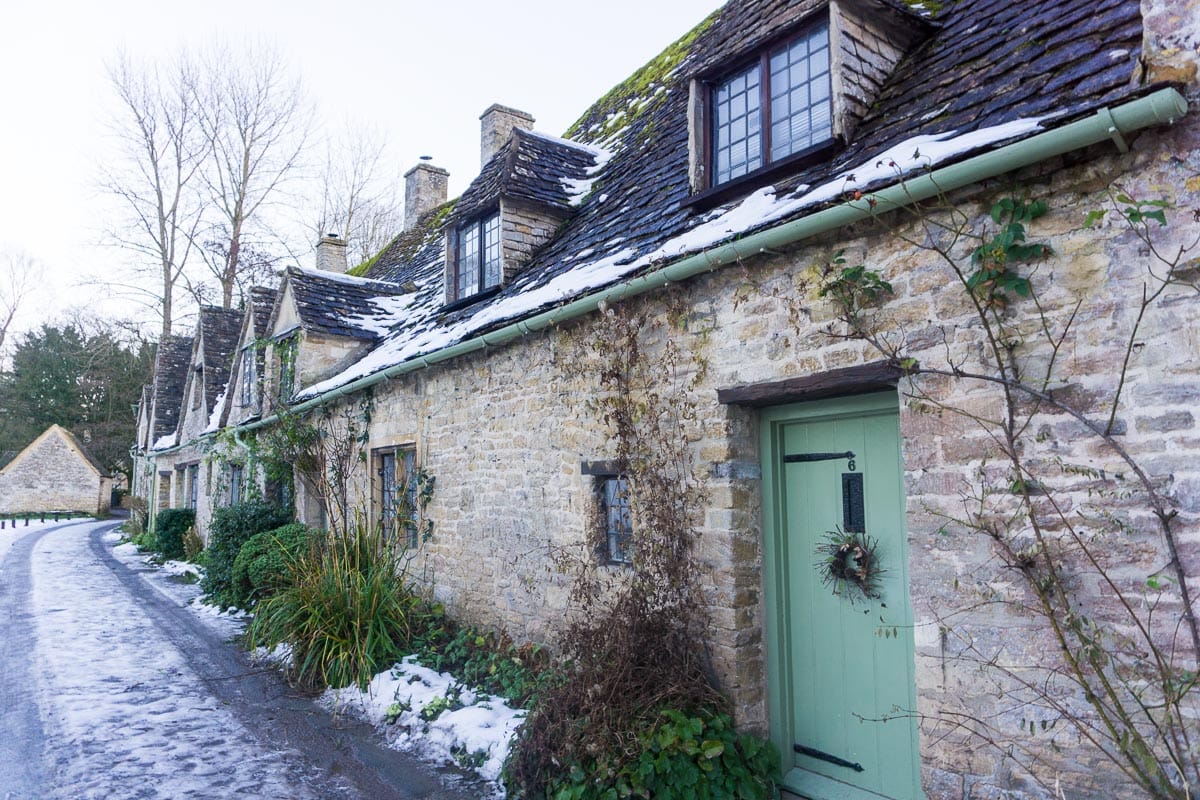
I remember a few years ago when it snowed in February and the whole of London was covered in white. Most businesses were forced to send staff home, as the transport networks were unsure they’d be able to operate. It was incredible – the views were magical, especially around Hyde Park !
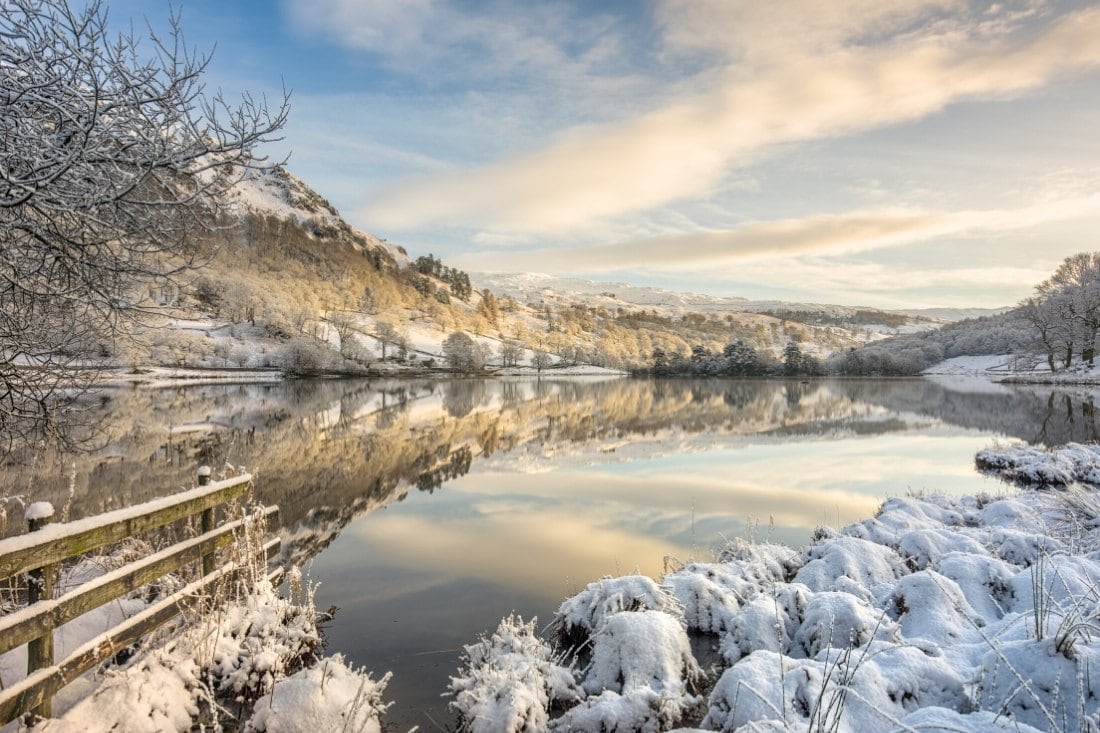
Special events in winter in England
- Birmingham’s Frankfurt Christmas Market (November – December)
- Winter Wonderland in London (November – December)
- New Year’s Day Parade in London (January)
- Six Nations Rugby (February – March)
- London Fashion Week (February)
- Jorvik Viking Festival in York (February)
We hope you’ve found this post useful for deciding the best time to visit England. From hiking in the Lake District to exploring the vineyards in Sussex , you can plan your trip using our England travel guides.

Change location
- UK / International
- Call toll-free from 9am EDT
- 617-223-4521 617-223-4752 or
- REQUEST A QUOTE
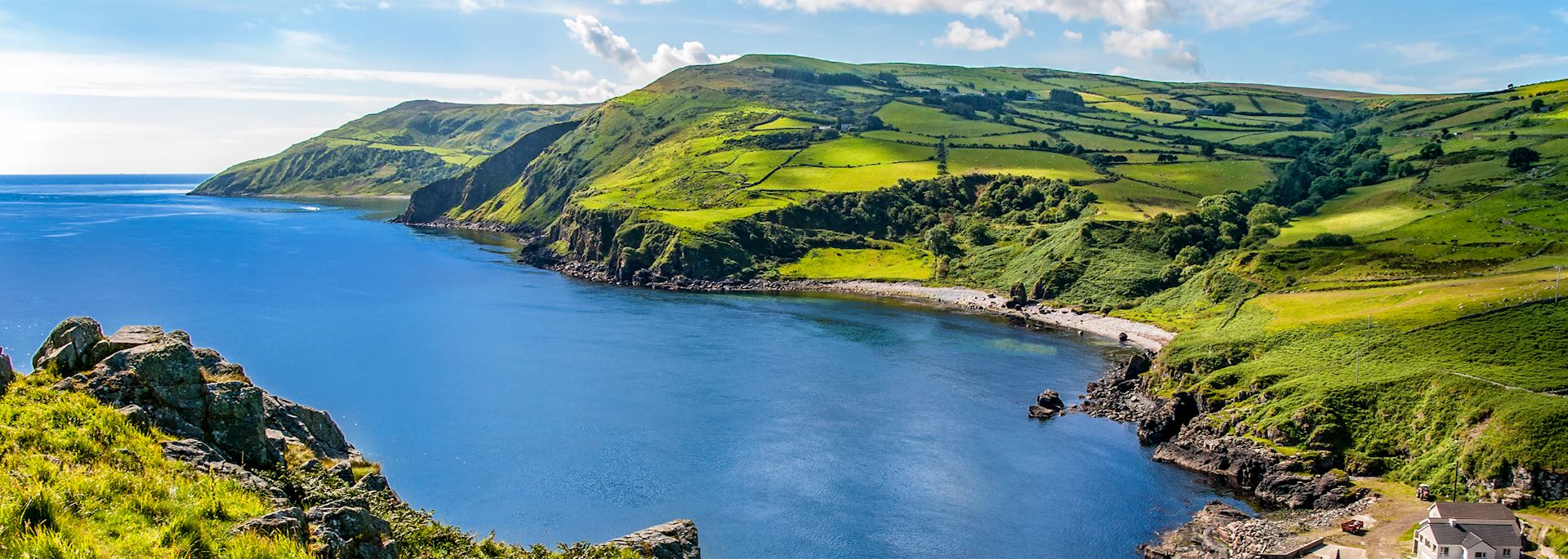
When is the best time to visit the UK?
- The Cotswolds
- Month-by-month
The best time to visit the United Kingdom is in spring (late March to early June) and autumn (September to November), when it’s usually warm and dry. You’ll see beautiful spring flowers or the leaves changing hue in autumn, and avoid the much busier summer period.
However, the UK can be visited at any time of year, as its climate is relatively temperate and, in general, doesn’t experience extremes during either summer or winter. The highest temperatures are experienced in the summer, but these rarely rise above 86°F.
Winter (December to February) can also be an enjoyable time to visit. Although some attractions close in mountainous areas and in the north (and most of Scotland), where there’s likely to be snow, the main cities remain fully open and will be quieter for sightseeing.
- Make an inquiry
- Request a brochure
Month-by-month guide for traveling in the UK

Visiting the UK in January
Typically the coldest month of the year, January is also when you’re most likely to experience clear and frosty days, with blue skies and crisp mornings. Extravagant New Year celebrations are held in all the major cities and often include live music, floats and firework displays. The average temperature throughout the month can be as low as 41-42°F, if not lower.
Events & Festivals
- New Year celebrations are held, with fireworks on New Year's Eve and floats and processions in some cities on New Year's Day.

Visiting the UK in February
There will still be snow on the mountains in February, and parts of the country may experience snowfall. In the south of the United Kingdom, snowdrops begin to emerge, particularly in woodland areas.

Visiting the UK in March
Temperatures begin to rise and spring flowers appear, both on the ground and as blossom on the trees. The rugby Six Nations Championship is held during February or March, when England, Wales, Scotland, Ireland, France and Italy are pitched against each other.

Visiting the UK in April
April is a notoriously unpredictable month for weather. It can be warm and sunny, with spring flowers made more vivid by the clear skies and sunshine, or it can be a very rainy month. Toward the end of April swathes of bluebells cover woodland areas. Many of the sites that close over the winter months tend to reopen in April or around Easter, a public holiday. The London Marathon is held on one Sunday toward the end of the month, with thousands of runners making their way around central London .
- An annual event, the London Marathon is a great spectacle to watch, with runners running for charity around the main sites of the capital.
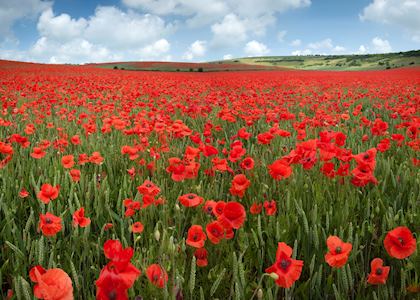
Visiting the UK in May - June
The weather is usually warm during May and June, and is typically drier than the winter months. May has two Bank Holiday weekends, which can be particularly busy as British people make the most of this time off work. There are several events and festivals held across the United Kingdom during May and June as the weather becomes more pleasant and reliable. The most famous are the outdoor tennis tournament Wimbledon, the Royal Ascot horse-racing event, Glastonbury Festival and the Royal Regatta, a series of boat races on the Thames, held in picturesque Henley-on-Thames.
- Wimbledon outdoor tennis tournament.
- The Royal Regatta is a key event in the summer season, with boat races and picnics held in Henley, and a strict dress code to adhere to.
- Often attended by the Queen, Royal Ascot is a major event in the horse racing calendar, where race-goers dress up for the occasion.
- Glastonbury Festival is held in Somerset this month, predominantly a music festival with famous bands and singers.

Visiting the UK in July - August
Traditionally the summer months, July and August are in theory the hottest and driest months of the year although, as with all British weather, this cannot be relied on. Schools break for the summer around the middle of July, so this is also the busiest time to travel throughout the UK. There are a number of outdoor music festivals held in July and August, as well as large agricultural shows such as the Great Yorkshire Show. The Edinburgh Festival Fringe, a lively series of performances including shows, music and comedy, is held during most of August, making the city extremely busy. The last weekend of August is the final Bank Holiday of the summer.
- Edinburgh Festival Fringe is a lively series of performances including music, comedy and theater.
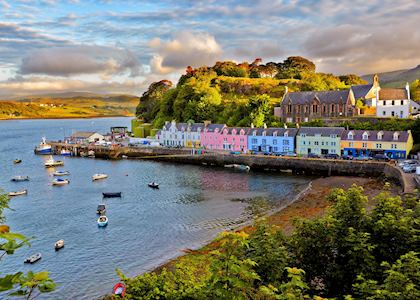
Visiting the UK in September
September often has warmer and drier weather than August, and the summer crowds start to disperse as schools reopen. Toward the end of the month the leaves start to change hue, and there are a number of food festivals held across the country to mark the harvest.

Visiting the UK in October
The autumn leaves are at their best, most vibrant russet shades during October. Temperatures are cooler and some sites in more rural areas start to close for winter. By the end of October most places are much quieter, making this a pleasant time to travel if you prefer to avoid the crowds. The schools generally break for a week at the end of the month though.

Visiting the UK in November
In early November the autumn leaves are still in full show, but mountainous areas may experience snow and daylight is restricted to around seven hours in northern Scotland. The weather is usually cool and damp, although it’s not uncommon to have wonderful cold, dry spells. Guy Fawkes Night is celebrated with bonfires and fireworks on the 5th, to commemorate a failed attempt to blow up parliament in the 17th century. Remembrance Day for fallen soldiers is held on the eleventh day of the month across the country, with Sunday memorial services and military marches. A two-minute silence held at 11am on the eleventh day itself.
- A celebration of bonfires and fireworks, Guy Fawkes Night commemorates a failed attempt to blow up parliament in the 17th century.
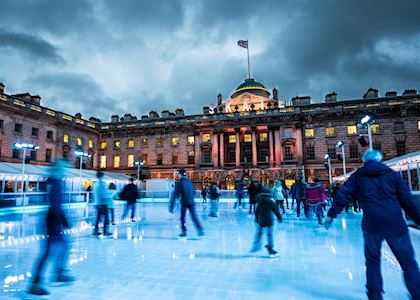
Visiting the UK in December
December is usually cold and damp, with little foliage and the least daylight hours of the year (fewer than seven in the north of Scotland). Christmas lights in towns and cities are switched on in early December, and shops remain open for most of the month, often only closing on Christmas Day and Boxing Day (December 26).
- Christmas lights decorate towns and cities, and carol concerts are held in churches.
UK Climate Guide
Why travel with audley.
- 100% tailor-made tours
- Fully protected travel
- Established for over 25 years
- 98% of our clients would recommend us

Travel advice
Practical tips for traveling to the UK, from social protocols to guidance on money matters, with a link to the latest US State Department travel advice.

Request our brochure
Covering all seven continents, The World Your Way shows you how you can see the world with us. It features trip ideas from our specialists alongside hand-picked stays and experiences, and introduces our approach to creating meaningful travel experiences.
Trip ideas and travel guides for exploring the UK

Family pop culture tour of England
7 days from $5,400pp
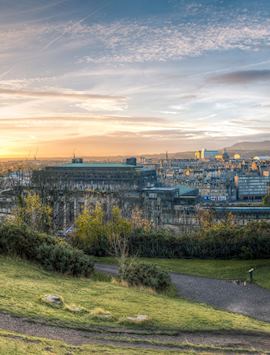
Capitals & countryside of England & Scotland
9 days from $8,830pp
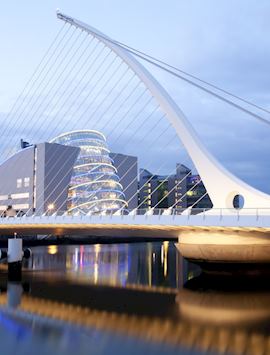
Grand tour of the British Isles
19 days from $17,200pp

Historic England: exploring London, Oxford and Bath
11 min read

The best time to visit England: few crowds, great deals, and blissed-out weather

Whether you enjoy admiring historical sites in the countryside or walking the busy streets of big cities, England is a vacation hotspot with plenty to do. If you’re wondering which season is the best time to visit England, that depends on what you want to experience.
More of an adventurous traveler? Visiting England in spring (towards the end of May, specifically) is perfect for soaking in new and exciting experiences. Summer is the best time to visit England for honeymooners as the weather is great for romantic getaways in the countryside, however, bear in mind that it’s also the peak tourist season. Winter in England can also get very busy, especially during the festive season. Holidays like Christmas and New Year’s draw many tourists every year. Spring and fall typically attract fewer tourists, so if you want to have a more chilled-out vacation, March to May or September to November are the best times to visit England.
Peak season in England: June-August

Temperatures in England normally hit a high of 64℉ in the summer, but there are occasional heat waves when the temperature can be as high as 86℉. The weather in England can be unpredictable so be sure to have an umbrella or raincoat and a light sweater with you. Nevertheless, summer is typically a great time to spend outdoors and bask in the sunshine. Enjoy a day out at Brighton Beach or have a drink at a beer garden in Bridgnorth . There are also many events and activities in the summer which draw travelers from all over the world.
Summer in England
England’s peak tourist season is in the summertime. Famous streets in metropolitan cities like London can get especially crowded (here are the best things you can do in London in summer ), so if you prefer jostling with fewer tourists, opt to travel during the shoulder or low season.
Airfare and hotel rates increase during peak season, so be prepared to pay more. Want to avoid the large crowds in summer? The cities aren’t the only charming places in England. If it’s a honeymoon spot you’re after, take a trip to the countryside for a cozy and romantic getaway.

For younger travelers, Glastonbury Festival in June should be on your to-do list. This renowned festival boasts an incredible line-up of international and local artists. It’s worth checking out with a group of friends or a partner. Another summer highlight is Wimbledon . The oldest tennis tournament in the world takes place in London and attracts many local and international fans. Can’t get tickets? Explore the history of Wimbledon and other major London sights on this tour instead.
Shoulder season in England: May-early June, September-early October
The shoulder season in England is great for enjoying the perks of summer weather while sticking to a budget, with temperatures reaching a high of 64°F in spring and 60 °F in the fall. Visiting England during shoulder season means you encounter fewer crowds at popular places like London (here's our guide to the best things to do in London during spring ) or Brighton, which would be swamped with tourists during peak season. It’s also easier to find affordable accommodation. While there are generally fewer crowds compared to peak season, bank holidays can draw more crowds than usual since there are many events over the long weekends.
Take advantage of the fewer crowds by joining a walking tour in London . Are you more of a solo traveler? Then this hop-on, hop-off tour is for you. You can tick off all the cultural landmarks in London and explore the city at your own pace.
Spring in England
March signals the start of spring in England. If you’re a rugby fan, you’ll have heard of the Six Nations Championship, held in England every year. It’s a great sporting event attracting tourists and locals alike.

Keen to experience the luck of the Irish? St Patrick's Day in March is celebrated in a big way—have some fun in London at Trafalgar Square .
Visiting England during spring is a must for music lovers. Discover new musicians at festivals like The Great Escape in Brighton, which gives emerging artists a platform to showcase their work. Are you a fan of indie and pop music? Then Dot to Dot Festival may be your cup of tea.
Low season in England: November-April
There are still remnants of fall colors in early November but the temperature is more like winter, dropping to an average of 39°F. The coldest months in England are January and February when temperatures can be freezing.
Winter in England
Winter in England is between November and February. While the weather can be dull and dreary, your days can be full of excitement and warmth thanks to the many celebrations during the festive season. Apart from the epic Guy Fawkes night celebrated on November 5, England is the perfect place to experience a white Christmas. It’s hard to ignore the festive spirit when major landmarks, streets, and storefronts are decked in impressive Christmas decorations and twinkly lights. Apart from the Christmas markets and festivities happening throughout the country, there are also Christmas concerts held in local churches.

Are you a shopaholic? Many stores have sales to mark the festive season, making it the perfect time to shop. Head to the Christmas market in Albert Square in Manchester if you’d like a taste of some classic English festivities. Christmas in London is especially festive. Hyde Park's Winter Wonderland is a fairground with market stalls, rides, and family-friendly activities. New Year’s Eve and New Year’s Day celebrations take place in most cities and towns across England, but it’s worth checking out the festivities in London, which would typically include impressive fireworks shows on the River Thames , music, and more.
Recommended tours and activities

More like this:
- 8 Roman ruins in England that you can still visit
- 11 most beautiful places in England
- 8 best cities to visit in England and what you can do in each
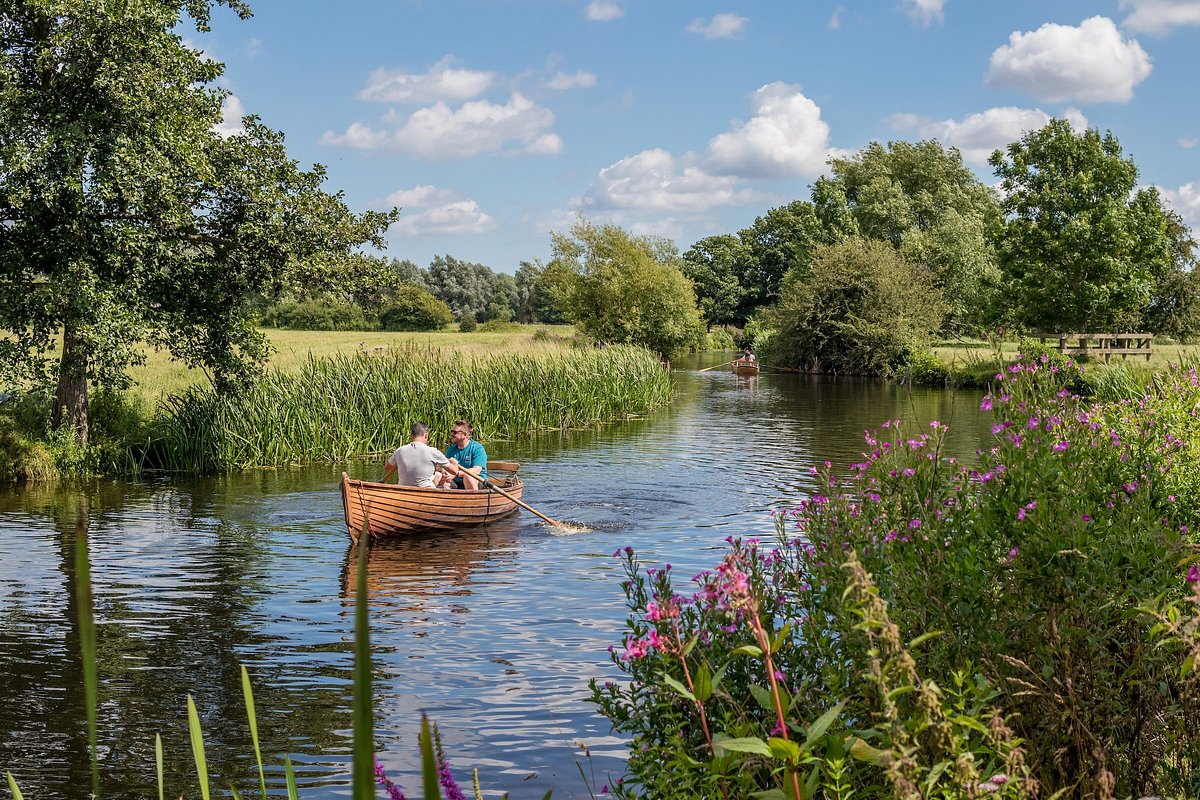
Best time to visit England
The best time to visit England is from May to September when the weather is warmer and drier. English weather is notoriously unpredictable, but the Brits know how to make the most of the sunshine when it chooses to make an appearance. Summer is the busiest season so expect longer queues at all the tourist sites, but there are plenty of outdoor adventures to be had along the coast and in the countryside.
No matter when you visit, it’s not a bad idea to pack a brolly and a rain jacket at the bottom of your bag in case the heavens open.
Best for: wildflowers, wildlife, Chelsea Flower Show
Two words: April showers. Spring weather is a mixed bag it could be gloriously sunny one day, and bucketing down the next. But the rain turns the landscapes extra lush and nature starts blossoming in the form of wildflowers and baby lambs and calves in the pastures. The temperatures usually rise a fair bit in late May and daylight hours increase, which is ideal for outdoor adventures.
Best for: beaches, hiking, cycling, festivals.
On a clear, sunny summer's day, the beaches along the Devonshire and Cornwall coastlines are glorious. The summer is the best season for all things music, art and culture, with a jam-packed festival calendar including Glastonbury, WOMAD and The Isle of Wight Festival. With long days, particularly around the solstice in June, it's the perfect time of year to explore England's great outdoors, including the picture-perfect trails in Dartmoor National Park and the rugged island of St Michael’s Mount.
Best for: fall foliage, wildlife, walking.
It gets cooler from late September, so bring a waterproof coat and plenty of warm layers if you plan on hiking or cycling. Fall is a very scenic time of year as golden foliage sets in, with particularly stunning scenes in the Lake District, Cumbria and Sheffield Park in East Sussex. Crowds also dwindle, so there are smaller queues at major sites.
Best for: festive markets, cozy winter pubs, no crowds
Winter weather in England is often dull, damp and dreary. But that doesn't have to stop you! The English love a good knees-up and the festive period is a fantastic time to enjoy Christmas markets and lively English pubs. Snow isn’t common unless you’re in the far north or up in the mountains, but you may still get the occasional dusting at sea level. Accommodation prices are usually lower in winter and crowds are minimal, so it's a great chance to explore the quaint Cotswold villages, castles and famous sites at your own pace.
Let's create an exclusive trip for your group.
London, England Travel Guide
Courtesy of Doug Armand | Getty Images

Best Times To Visit London, England
The best time to visit London is March through May when the temperatures are mild and the city's parks are green and blooming. However, late spring – along with summer – is also prime tourist season, and hotel and flight prices reflect the surge. You're more likely to find airfare and accommodation deals in the fall and winter though you'll also encounter chilly temperatures. December in London is also an incredibly popular place to be during the holidays, so expect the streets to be crowded with both English and international tourists. And no matter when you travel, you should pack an umbrella: London is notorious for experiencing misty days and showers year-round. If you have any concerns related to the weather, crowds or other unpredictable factors, you might want to consider an international travel insurance policy or a cancel for any reason plan for more extensive coverage.
Another thing to keep in mind: it's nearly impossible to escape crowds in London. Along with being one of the biggest cities in Europe, London is one of the most popular destinations to visit in the world , so no matter what time of year you go, you're bound to run into lots of tourists.
Weather in London, England
Data sourced from the National Climatic Data Center
Find Flight and Hotel Deals
Navigate forward to interact with the calendar and select a date. Press the question mark key to get the keyboard shortcuts for changing dates.
Navigate backward to interact with the calendar and select a date. Press the question mark key to get the keyboard shortcuts for changing dates.
Popular Times to Visit London, England
Tourism volume is estimated based on in-market destination search query interest from Google and on travel.usnews.com in 2015-2016. Hotel prices are sourced from a sample of U.S. News Best Hotels rates through 2015-2016.
Explore More of London, England

Things To Do

Best Hotels

You might also like

# 5 in Best Destination Wedding Spots in Europe

# 1 in World's Best Places to Visit for 2023-2024

# 4 in Best Day Trips from London
If you make a purchase from our site, we may earn a commission. This does not affect the quality or independence of our editorial content.
Recommended
The 28 Best Water Parks in the U.S. for 2024
Holly Johnson|Timothy J. Forster May 8, 2024

The 18 Best Napa Valley Wineries to Visit in 2024
Lyn Mettler|Sharael Kolberg April 23, 2024

The 25 Best Beaches on the East Coast for 2024
Timothy J. Forster|Sharael Kolberg April 19, 2024

The 50 Best Hotels in the USA 2024
Christina Maggitas February 6, 2024

The 32 Most Famous Landmarks in the World
Gwen Pratesi|Timothy J. Forster February 1, 2024

9 Top All-Inclusive Resorts in Florida for 2024
Gwen Pratesi|Amanda Norcross January 5, 2024

24 Top All-Inclusive Resorts in the U.S. for 2024
Erin Evans January 4, 2024

26 Top Adults-Only All-Inclusive Resorts for 2024
Zach Watson December 28, 2023

Solo Vacations: The 36 Best Places to Travel Alone in 2024
Lyn Mettler|Erin Vasta December 22, 2023

26 Cheap Beach Vacations for Travelers on a Budget
Kyle McCarthy|Sharael Kolberg December 4, 2023

Wise Travel Plan
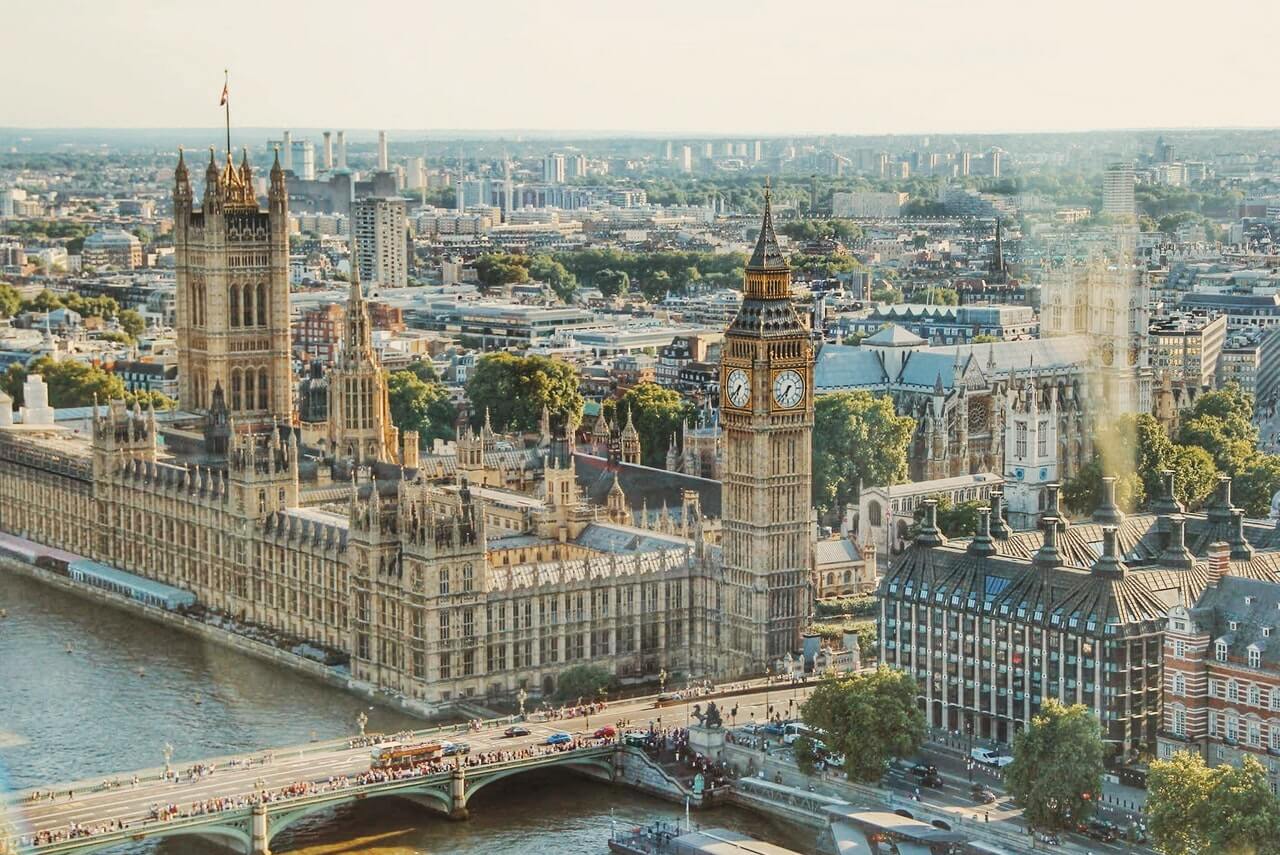
Best time to visit England
Are you planning a trip to England and wondering when the best time to go is?
The best time to visit England is from May to September . In this period, you can expect long days and warm weather, making it the perfect time to enjoy outdoor activities and sightseeing.
In this article, we’ll provide more information on the weather and climate in England, to help you choose the best time to visit England for your needs.
About England
Average temperature, number of monthly rainy days, number of monthly sun hours, spring in england (march to may), summer (june to august), autumn (september to november), winter (december to february), best time to visit england weather-wise, best time to visit england for sightseeing.
England lies in the northwest part of Europe and is part of the United Kingdom , along with Scotland, Wales, and Northern Ireland . The capital and the largest city in England is London .
England has a diverse landscape, with a mix of urban and rural areas. There are rolling hills and forests in the countryside, as well as a number of national parks.
The south of England is generally flatter, with more agricultural land and sandy beaches. The north and west of the country tend to be more mountainous, with areas such as the Lake District and the Pennines .
England has a spectacular history and culture, with many iconic landmarks such as Buckingham Palace , Big Ben , and Stonehenge . It is also home to a number of world-renowned universities, including Oxford and Cambridge .
Climate in England
England has a Temperate Maritime Climate , which means that it has mild winters and cool summers .
The climate in England is generally moderate and changeable , with variations in temperature and rainfall from one day to the next. It is not uncommon to experience all four seasons in one day, with sunshine and clear skies in the morning followed by clouds and rain in the afternoon.
It is always a good idea to bring layers of clothing and an umbrella when visiting England, as the weather can be unpredictable.
In England, temperatures tend to be moderate throughout the year.
During the spring months (March-May), temperatures start to warm up, with average highs ranging from 12-19°C (53-66°F) and average lows ranging from 4-9°C (39-48°F) .
In the summer (June-August), the weather becomes warmer, with average highs reaching up to 22-24°C (72-75°F) and lows averaging around 12-14°C (54-57°F) .
As autumn approaches (September-November), temperatures begin to cool down, with average highs ranging from 12-20°C (54-68°F) and average lows ranging from 6-12°C (43-54°F) .
During the winter months (December-February), the weather in England becomes cooler, with average highs at 9°C (48°F) and average lows at 3°C (37-39°F) .
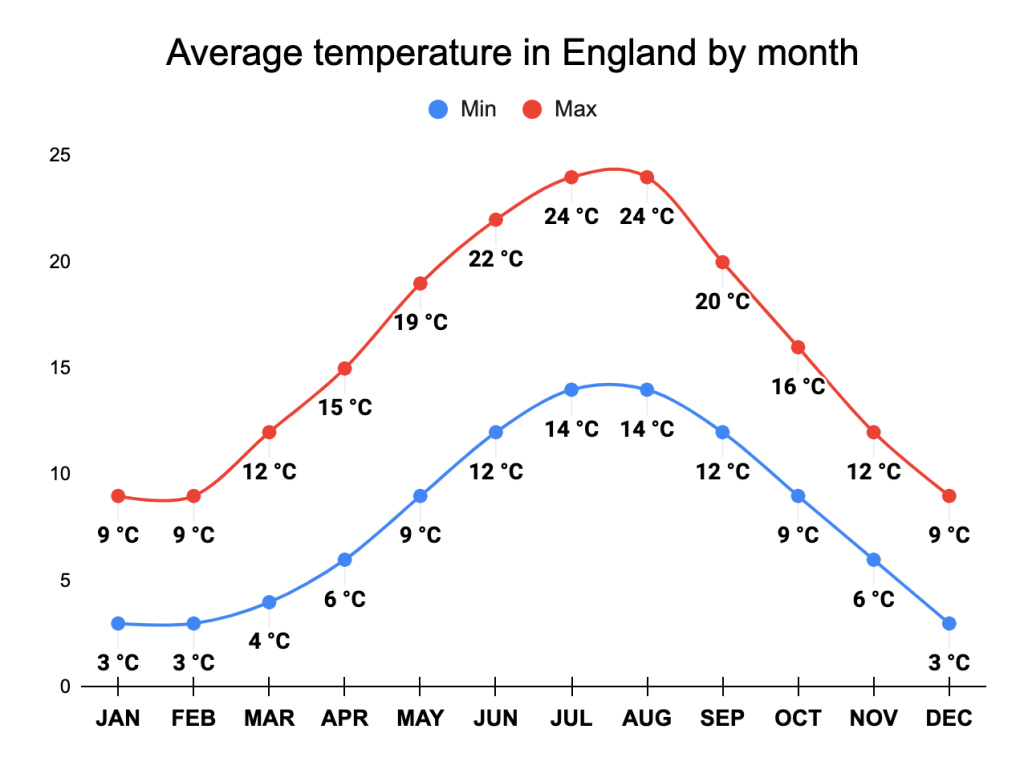
The precipitation in England is fairly consistent throughout the year, with a relatively moderate amount of rain. The average number of rainy days per month in England ranges from 8 to 12 across the year.
The rainiest months tend to be October, November, December, and January, with an average of 10-12 rainy days per month.
The driest months are June, July, August, and September with an average of 8 rainy days per month.
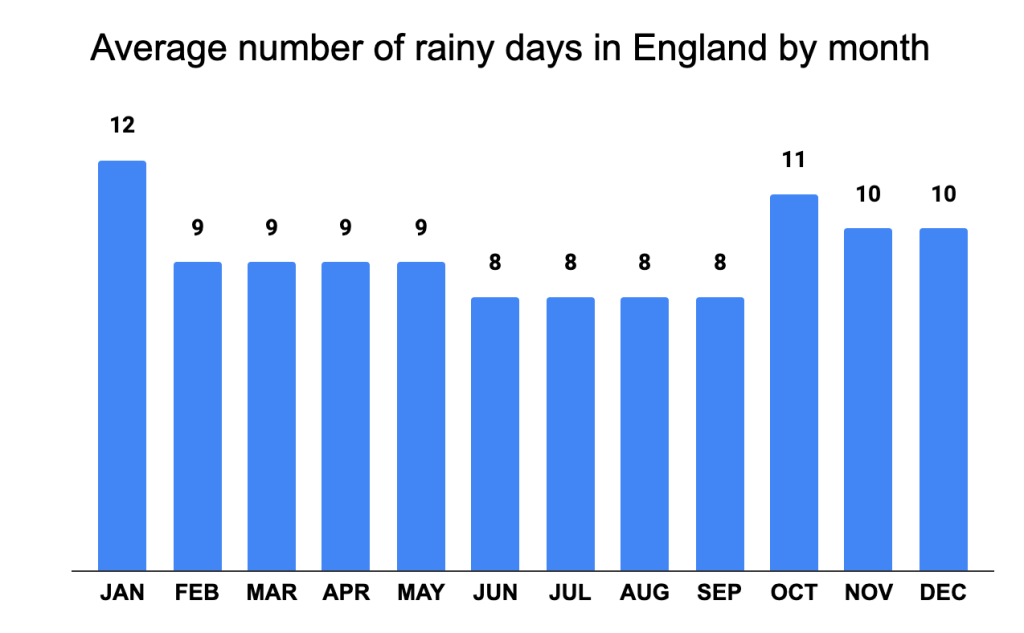
The sunniest months in England are May, June, July, and August , with 209, 207, 219, and 204 sun hours per month, respectively.
The winter months of December and January have the least amount of sun, with an average of 54 and 62 sun hours per month, respectively.
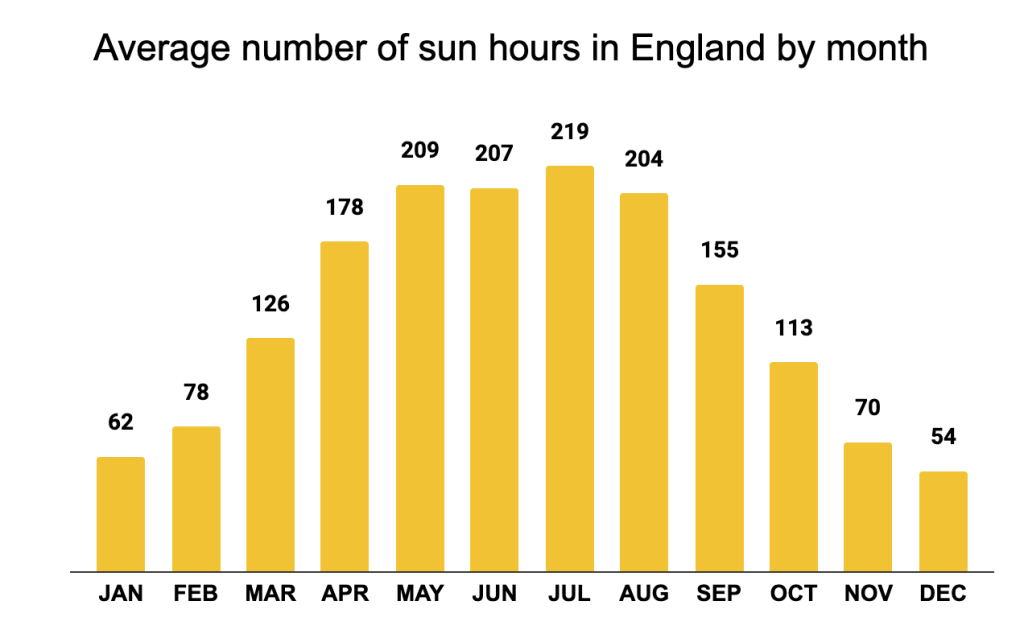
Seasons in England
England has four seasons: spring, summer, autumn, and winter.
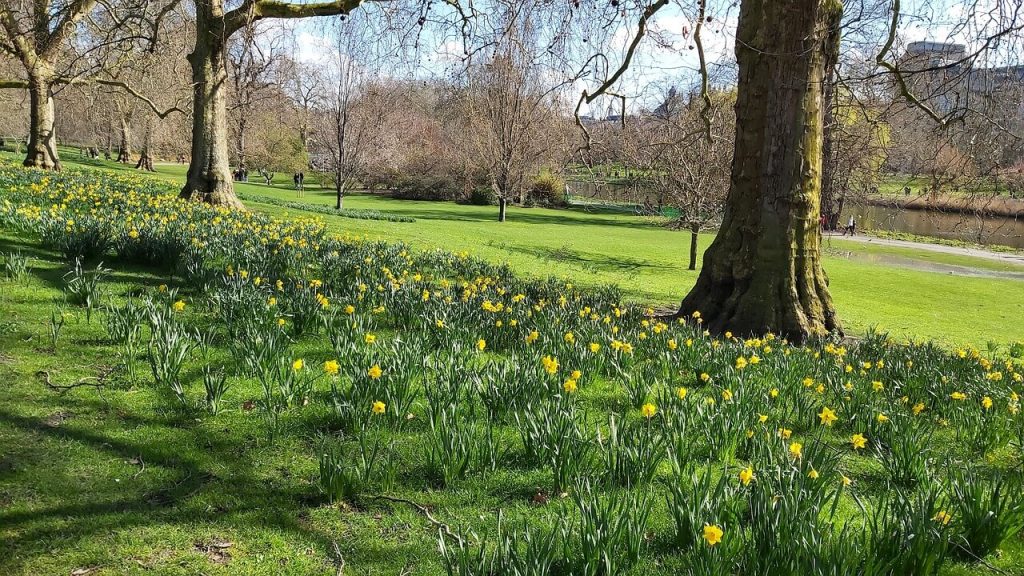
The spring season ( March, April, and May ) in England brings mild temperatures, with average highs ranging from 12-19°C (53-66°F) and average lows ranging from 4-9°C (39-48°F) .
The average number of sun hours per month ranges from 126 to 209 . There is also a moderate amount of rainfall during this season, with 9 rainy days per month.
The overall weather conditions in spring in England can be described as bad in March, tolerable in April, and good in May.
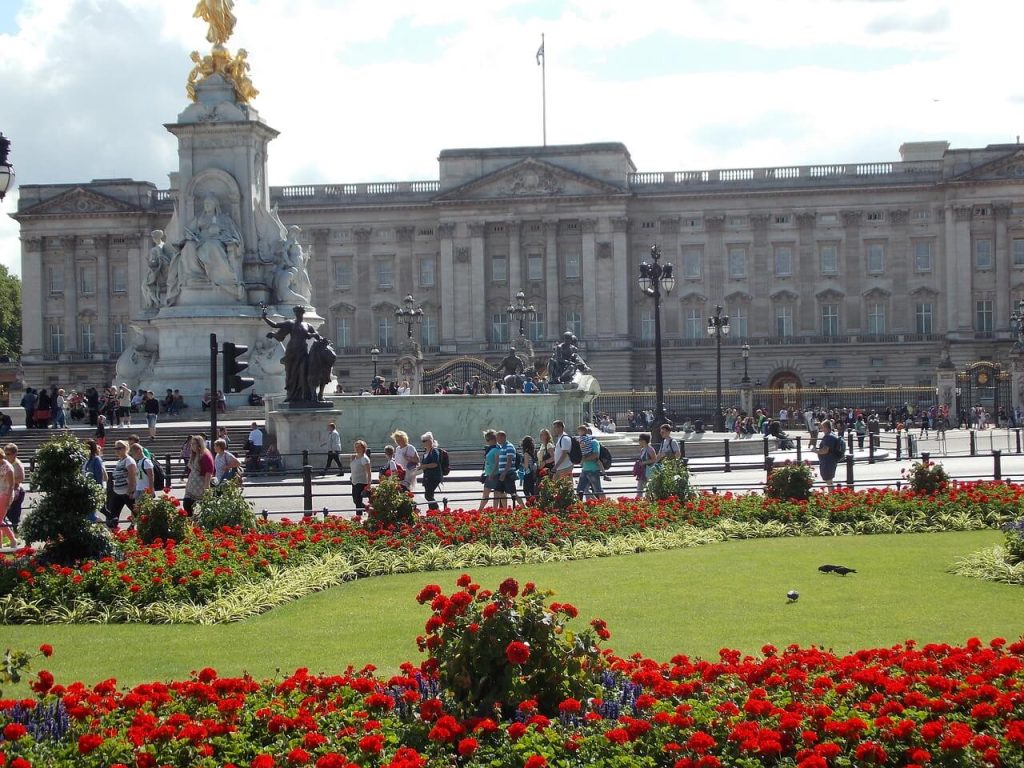
Summer ( June, July, and August ) in England brings warm temperatures, with average highs ranging from 22-24°C (71-75°F) and average lows ranging from 12-14°C (54-57°F) .
The average number of sun hours per month during the summer season ranges from 207 to 219 . There is also a lower amount of rainfall during this season, with 8 rainy days per month.
The weather conditions in summer in England are generally great, with warm temperatures and long days. It is a popular time of the year to visit England, as people can enjoy outdoor activities such as picnics, barbecues, and beach trips.
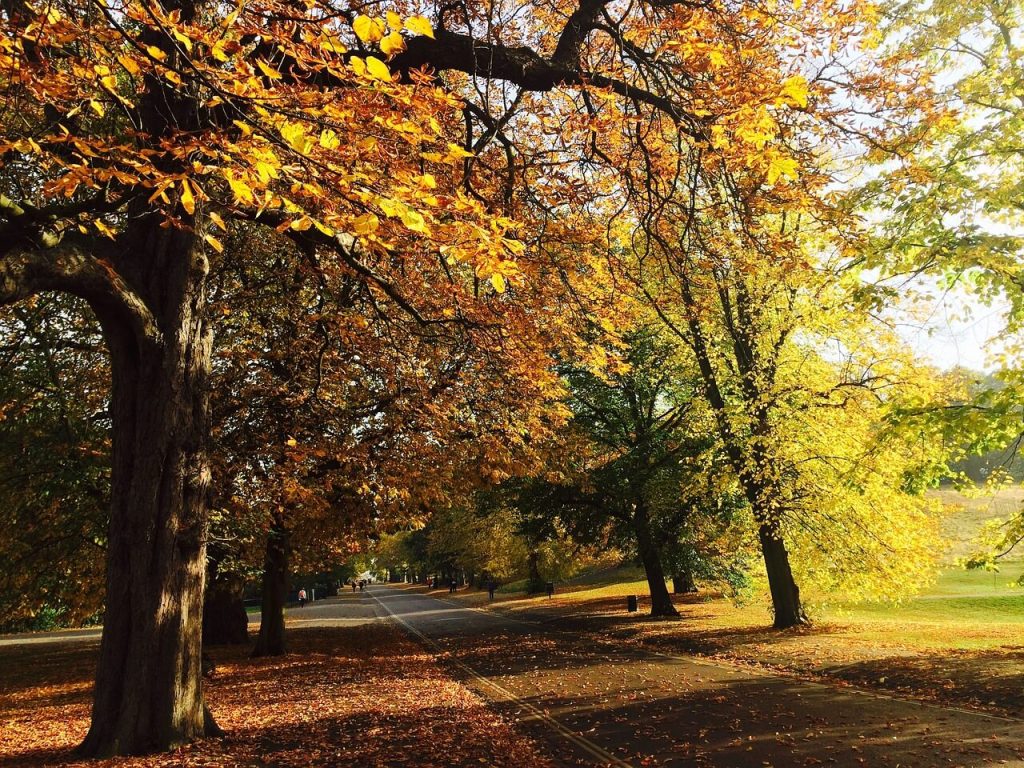
The autumn months (September, October, and November) in England bring cooler temperatures, with average highs ranging from 12-20°C (53-68°F) and average lows ranging from 6-12°C (42-53°F) .
The average number of sun hours per month in autumn ranges from 155 to 70 . There is a higher amount of rainfall during this season, ranging from 8 to 11 rainy days per month.
The overall weather conditions in autumn tend to be good in September, tolerable in October, and bad in November.
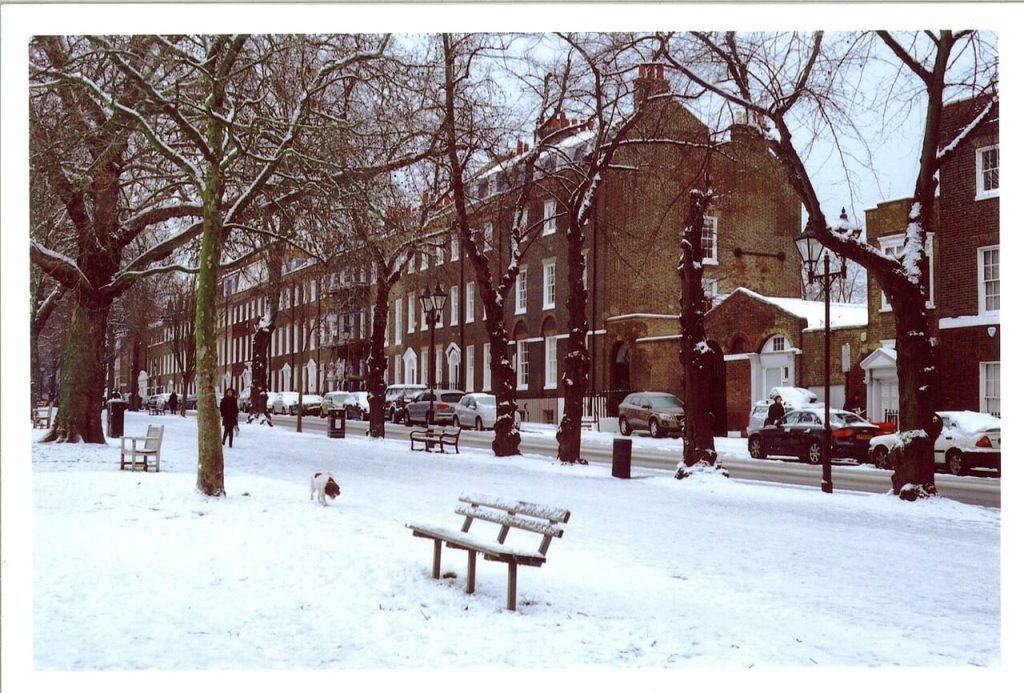
The winter season ( December, January, and February ) in England brings cold temperatures, with average highs at 9°C (48°F) and average lows at 3°C (38°F) .
The average number of sun hours per month in winter ranges from 54 to 7 8. There is a higher amount of rainfall during this season, ranging from 9 to 12 rainy days per month.
The weather in winter is generally bad, with cold temperatures and a high number of rainy days across the whole season.
If you’re planning a trip to England and looking for the best weather, the best time to visit weather-wise is typically from May to September . During these months, the weather is generally warm and pleasant, with long days and plenty of sunshine.
If you’re looking to enjoy warm weather and outdoor activities, the summer months of June, July, and August are the perfect time to visit. With its warmest temperatures and longest days, England is an ideal destination for beach trips, picnics, and barbecues.
Note that the weather in England likes to change frequently, so it is always a good idea to be prepared for a range of conditions.
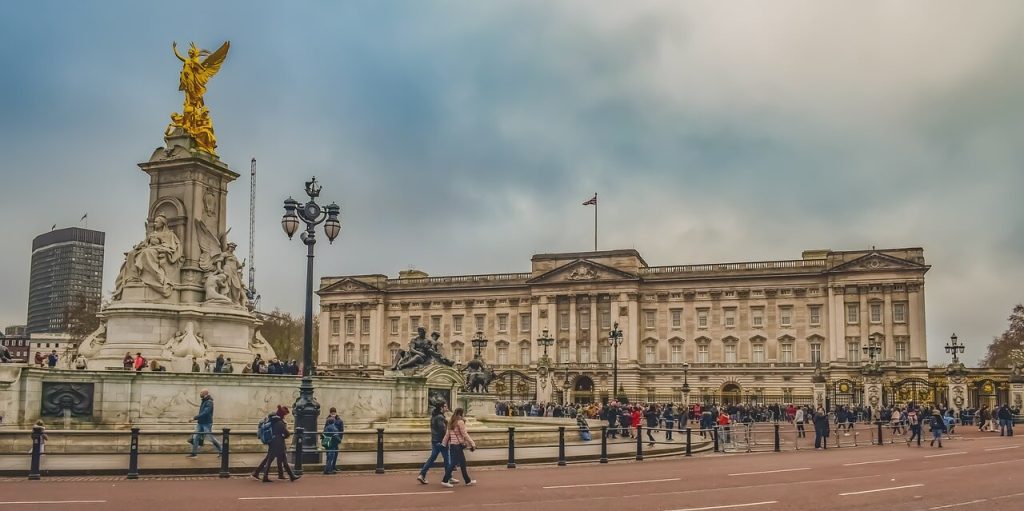
The best time to visit England for sightseeing is generally during the spring and fall months of April-May and September-October .
During these months, the weather is mild and comfortable, making it easier to enjoy outdoor activities and sightseeing. These months also tend to experience lower tourist traffic, which might make it easier to visit popular attractions and landmarks without having to wait in queues for a long time.
If you are planning to visit England during the summer months of June, July, and August , you can expect warm, sunny weather and longer days. However, these months are also the busiest and most popular time for tourists, so you can expect higher prices and more crowded attractions.
See more guides about England
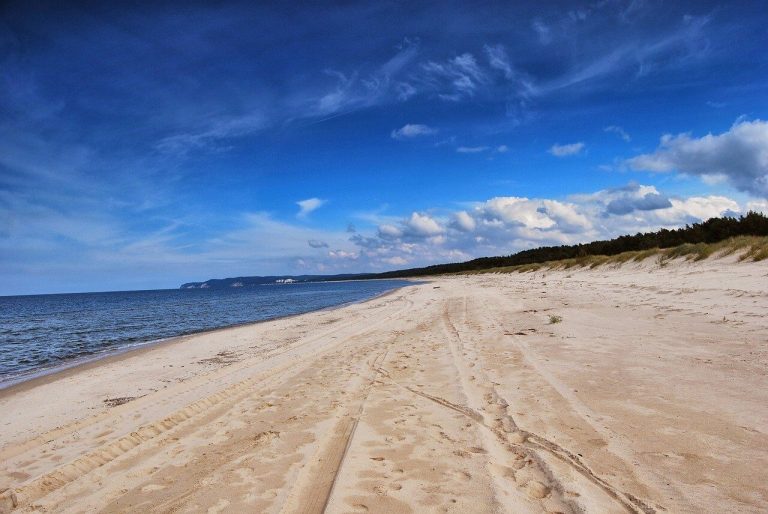
Best beaches in Poland

Best time to visit Albania

Best time to visit Armenia

Best time to visit Austria
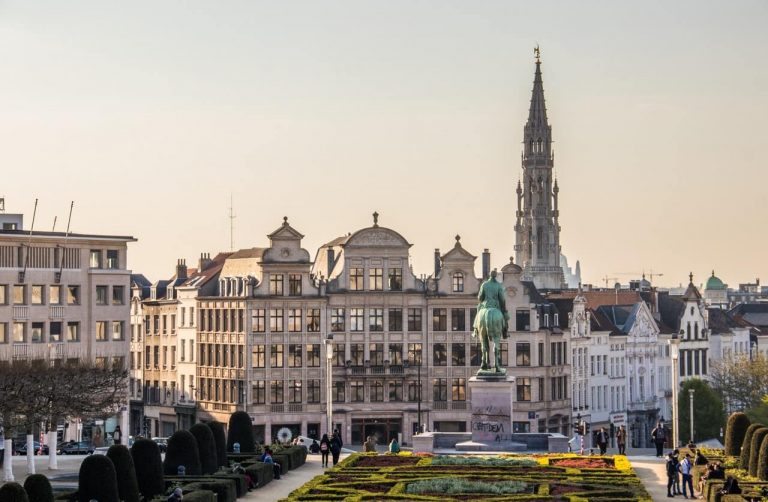
Best time to visit Belgium
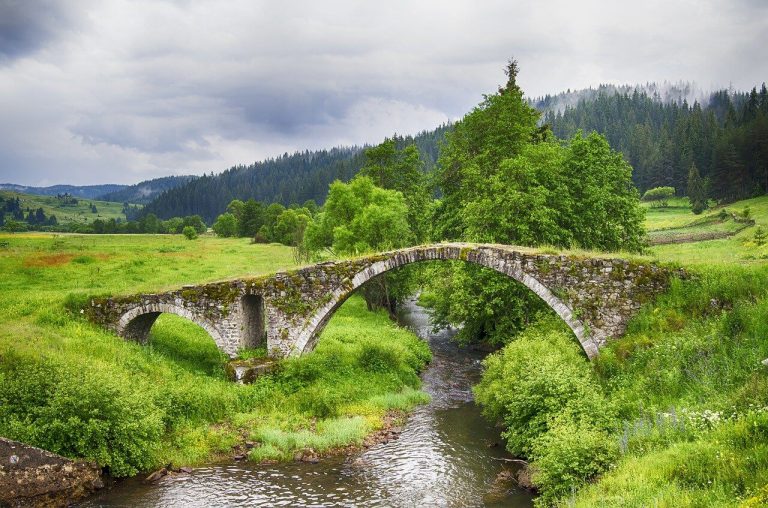
Best time to visit Bulgaria

Best time to visit Croatia
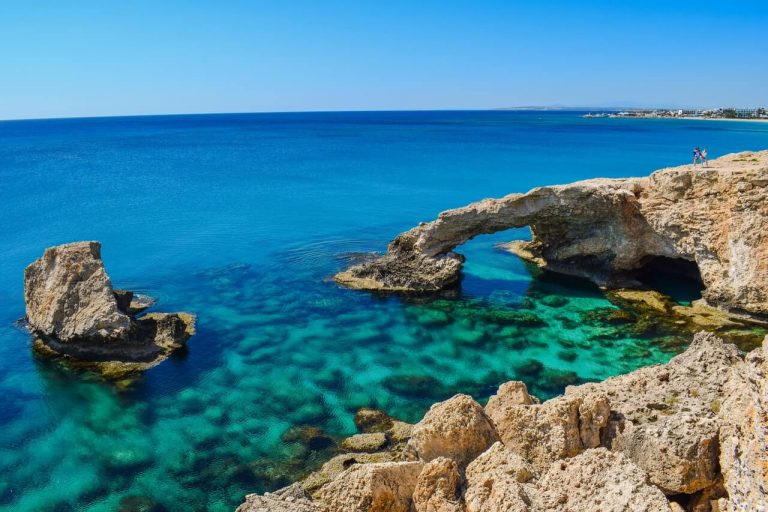
Best time to visit Cyprus

Best time to visit Czech Republic
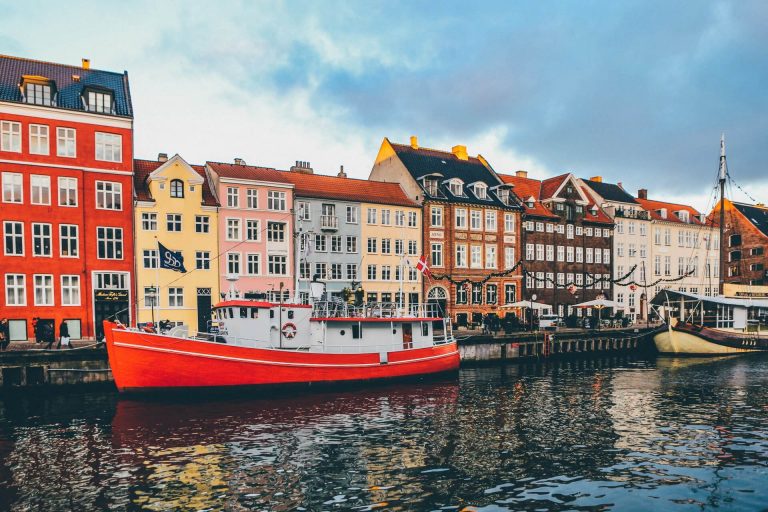
Best time to visit Denmark
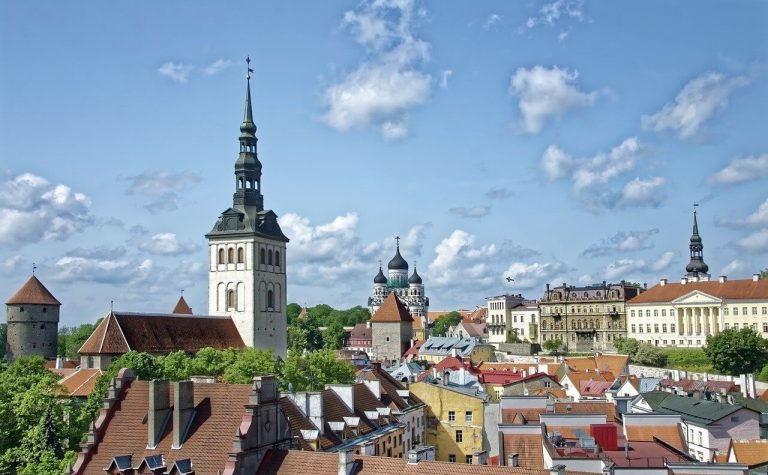
Best time to visit Estonia
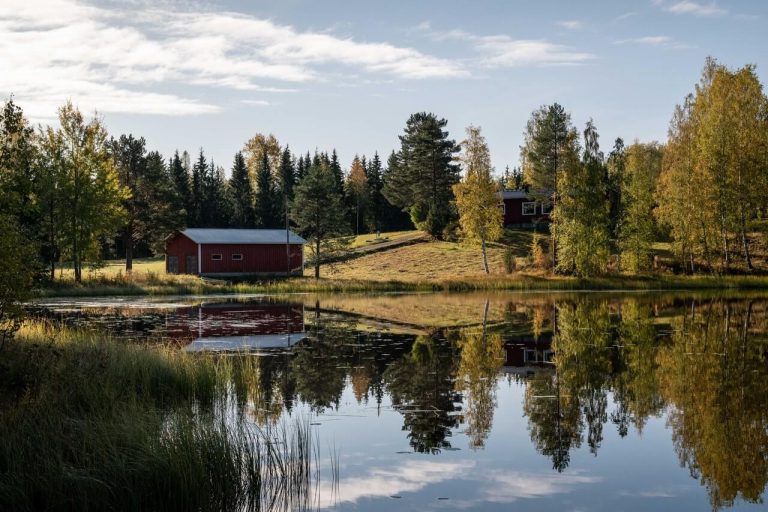
Best time to visit Finland

Best time to visit France
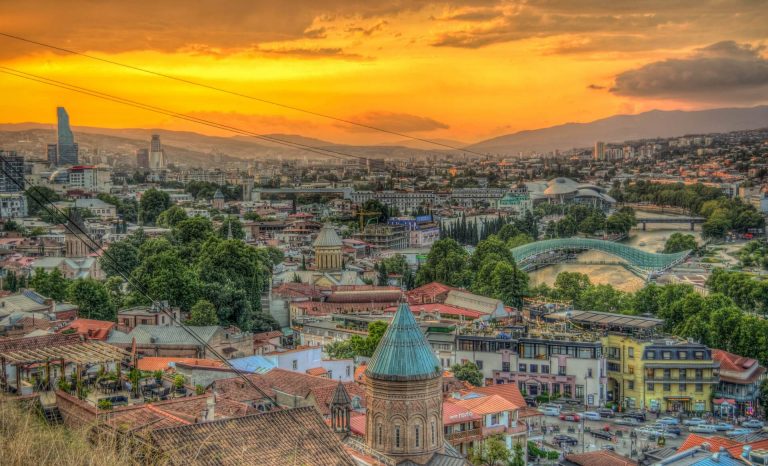
Best time to visit Georgia

Best time to visit Germany
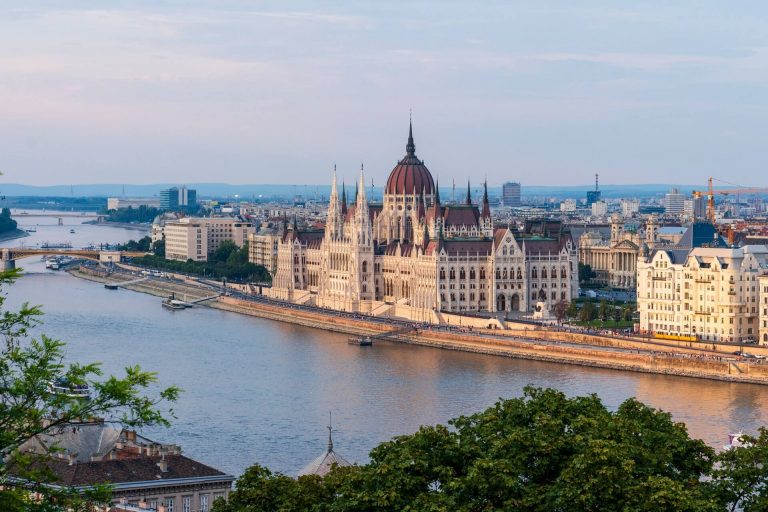
Best time to visit Hungary

Best time to visit Iceland
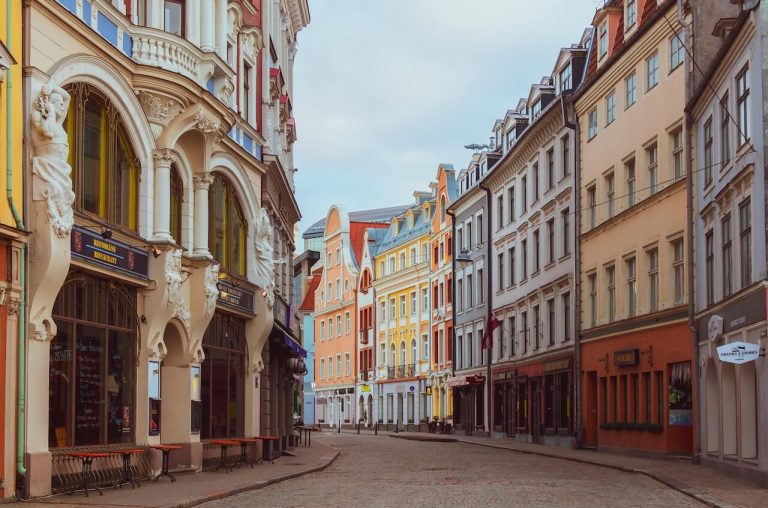

Best time to visit Latvia

Best time to visit Lithuania

Best time to visit Luxembourg

Best time to visit Macedonia
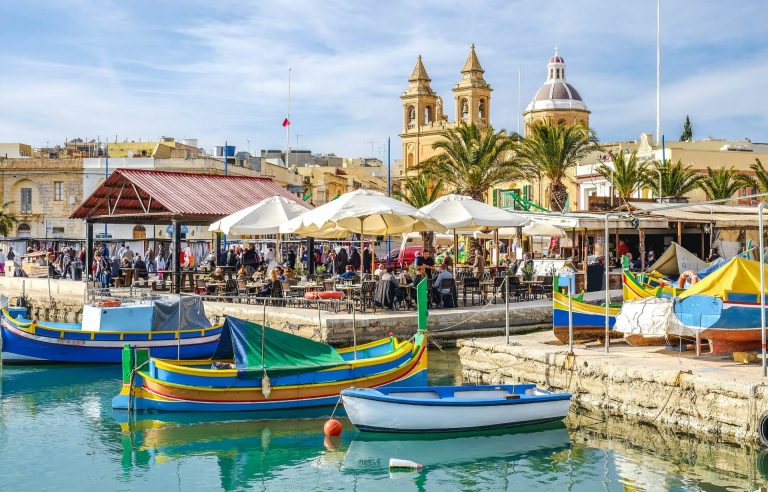
Best time to visit Malta
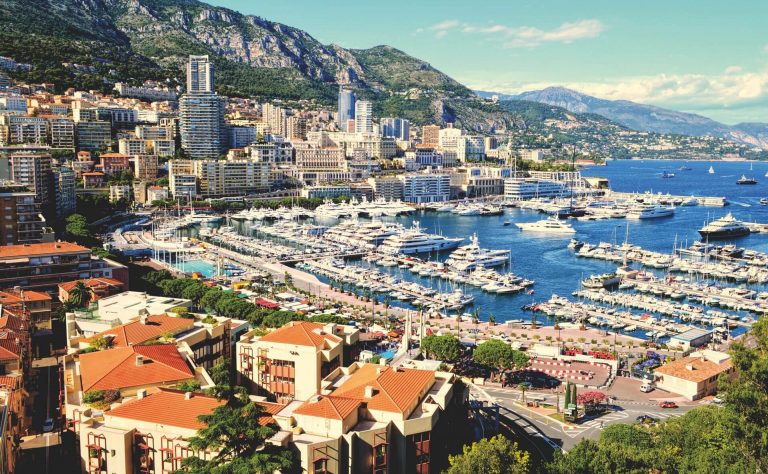
Best time to visit Monaco
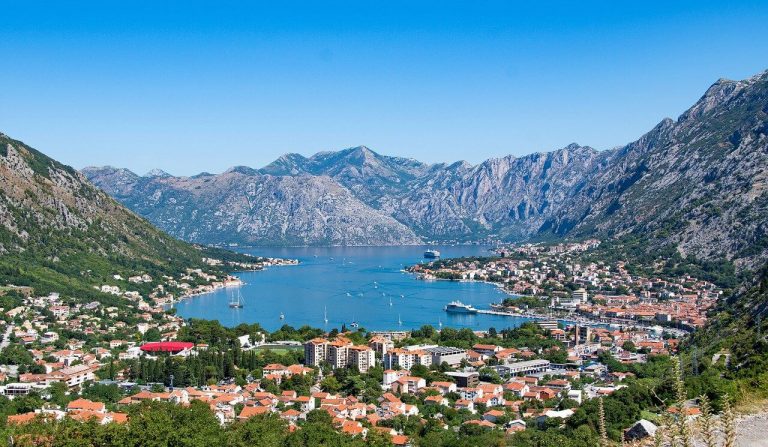
Best time to visit Montenegro

Best time to visit Norway

Best time to visit Poland
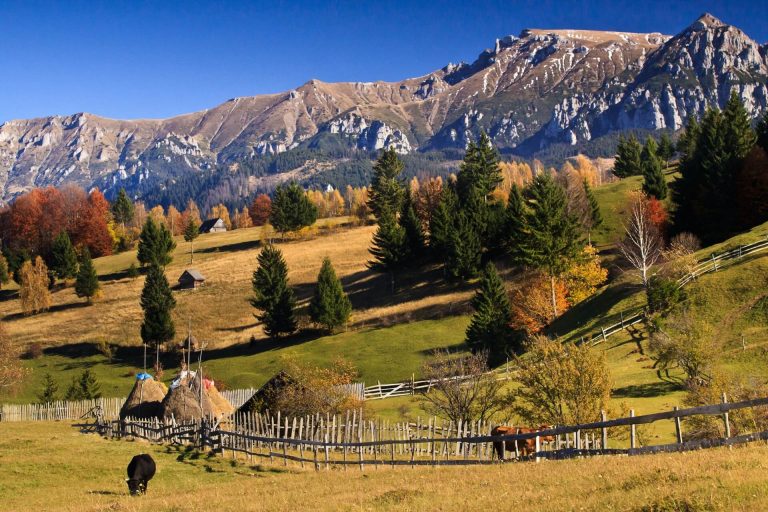
Best time to visit Romania
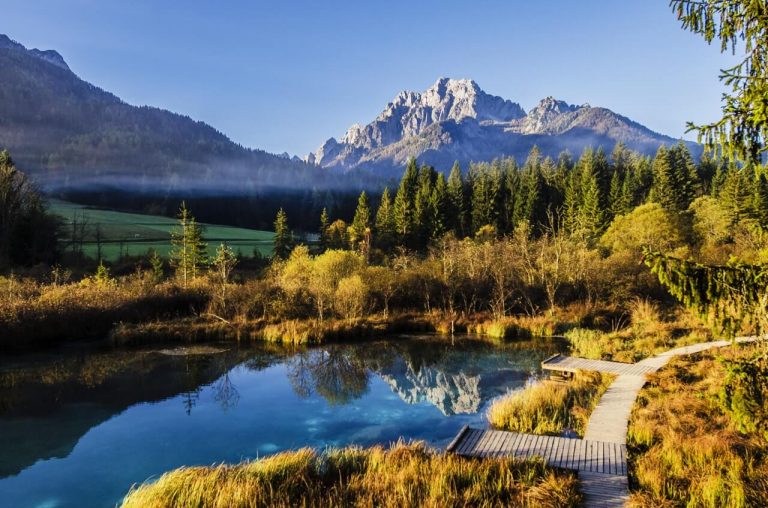
Best time to visit Slovenia

Best time to visit Sweden

Best time to visit Switzerland
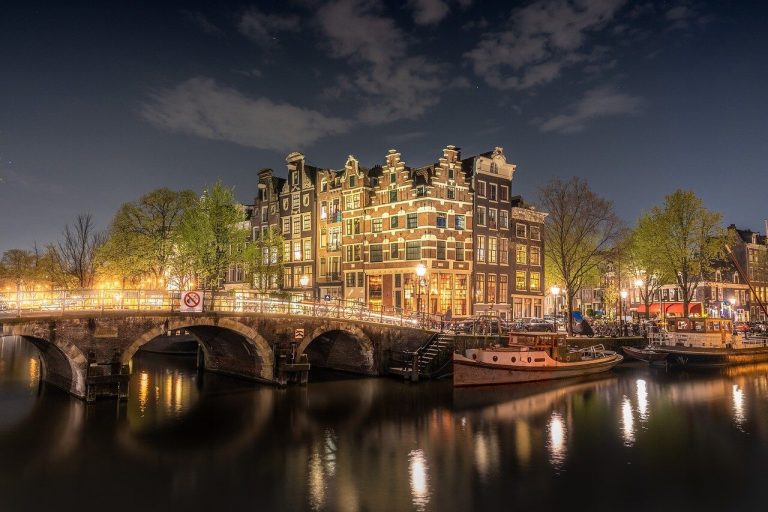
Best time to visit the Netherlands

Is Bulgaria safe?

Things to do in Armenia
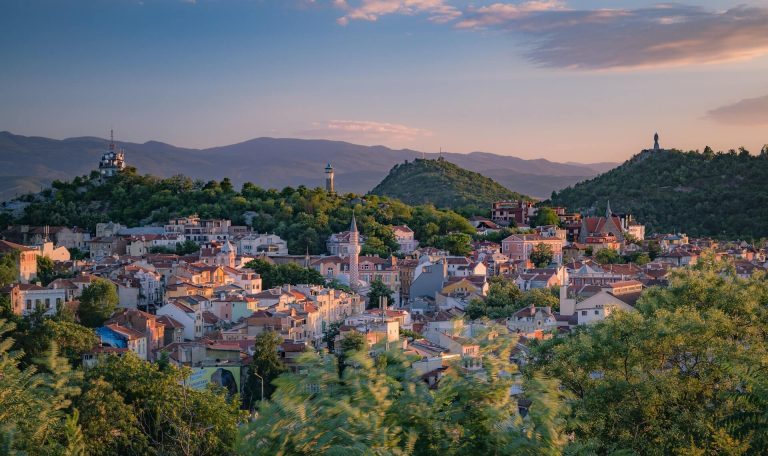
Things to do in Bulgaria
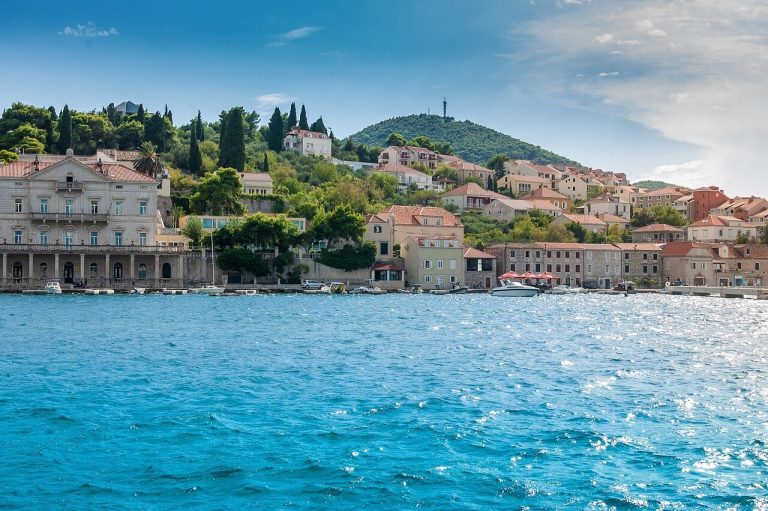
Things to do in Croatia

Things to do in Czech Republic
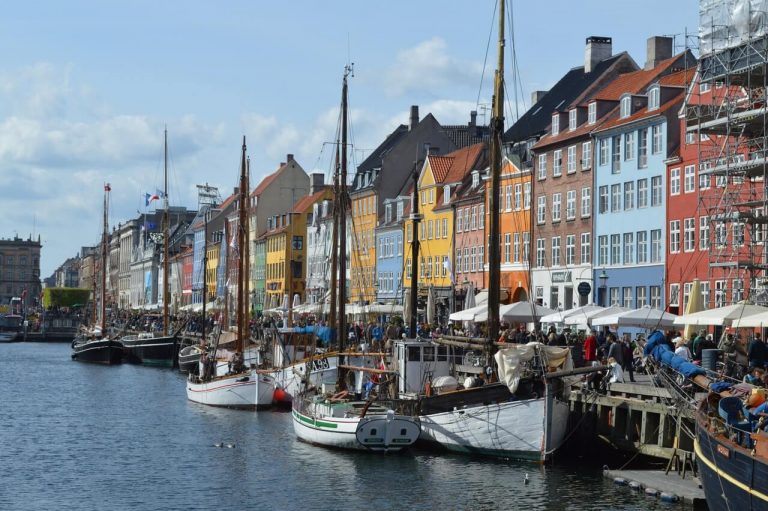
Things to do in Denmark
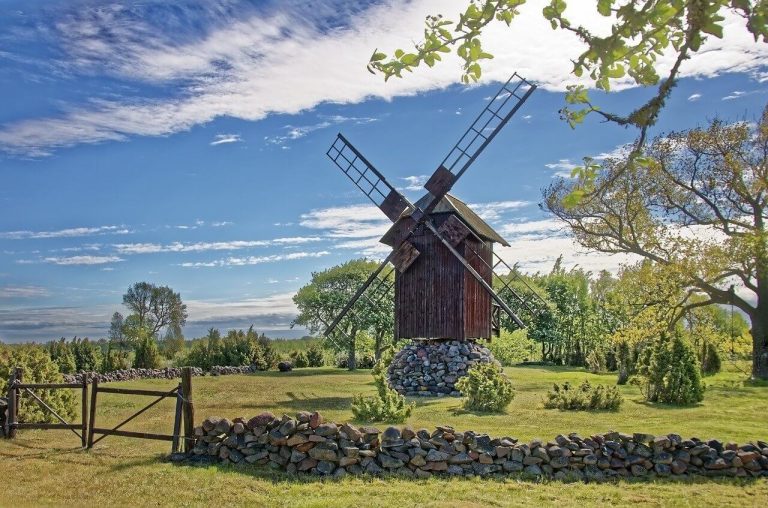
Things to do in Estonia

Things to do in Finland

Things to do in Georgia

Things to do in Hungary
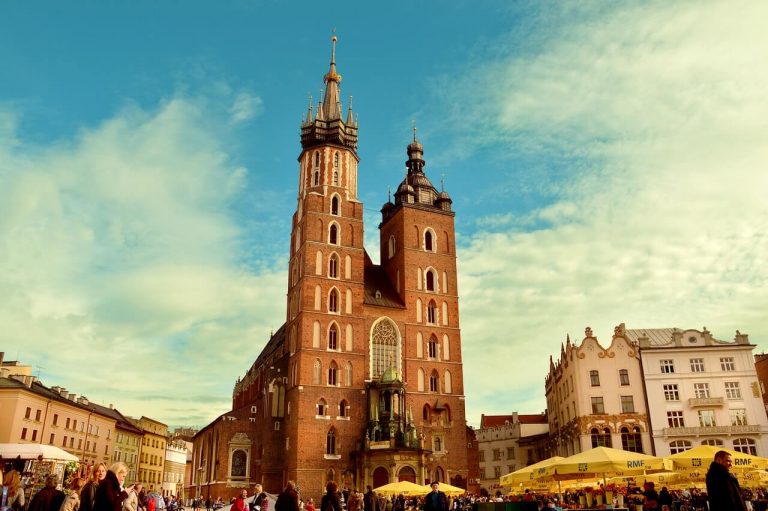
Things to do in Krakow
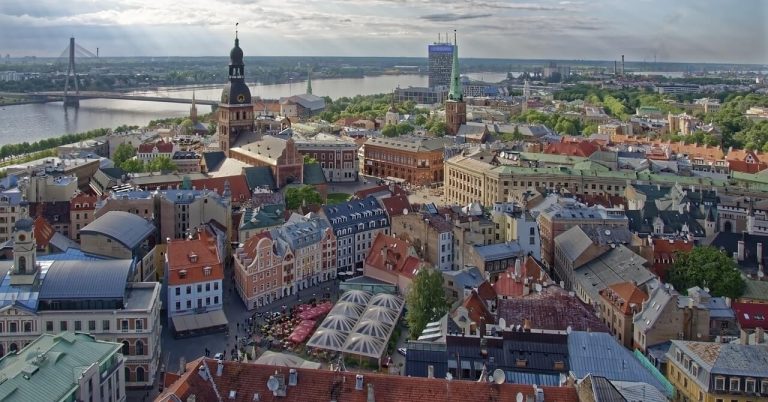
Things to do in Latvia

Things to do in Lithuania

Things to do in Luxembourg
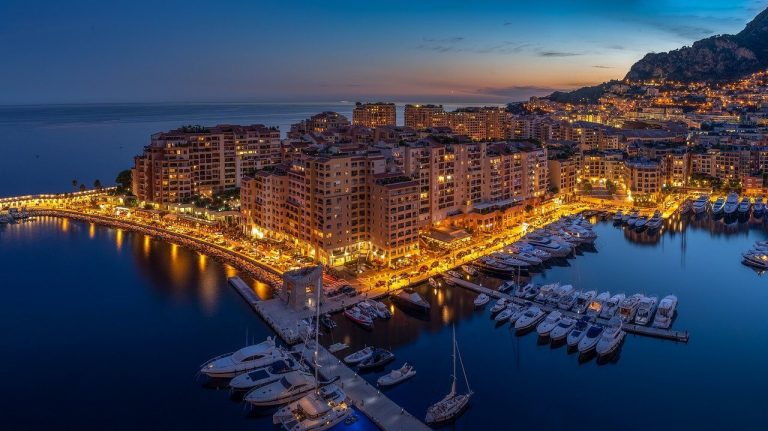
Things to do in Monaco
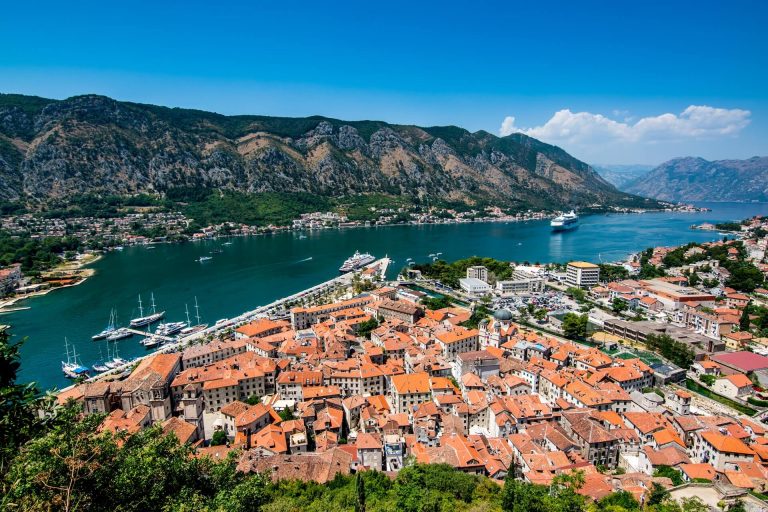
Things to do in Montenegro

Things to do in Norway
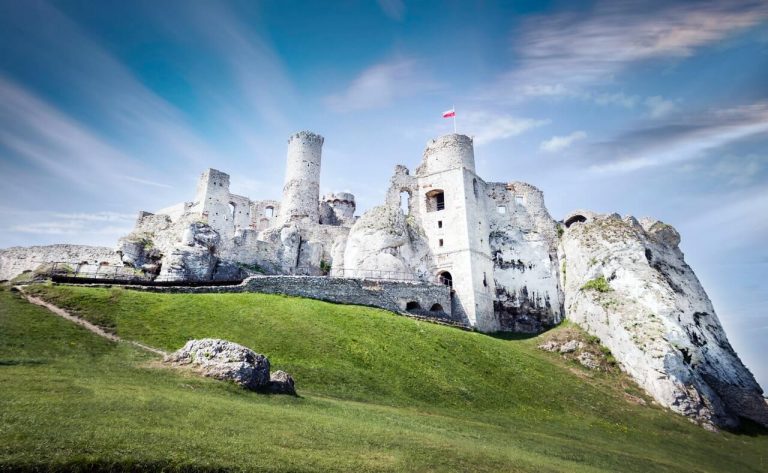
Things to do in Poland
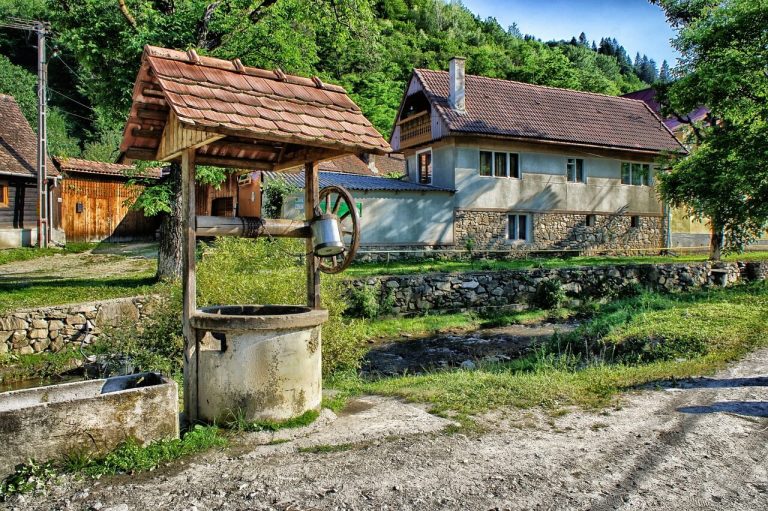
Things to do in Romania
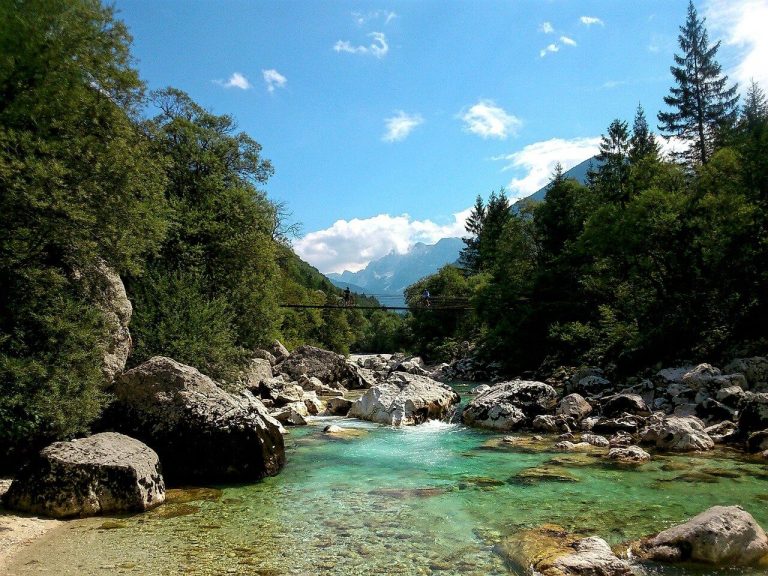
Things to do in Slovenia
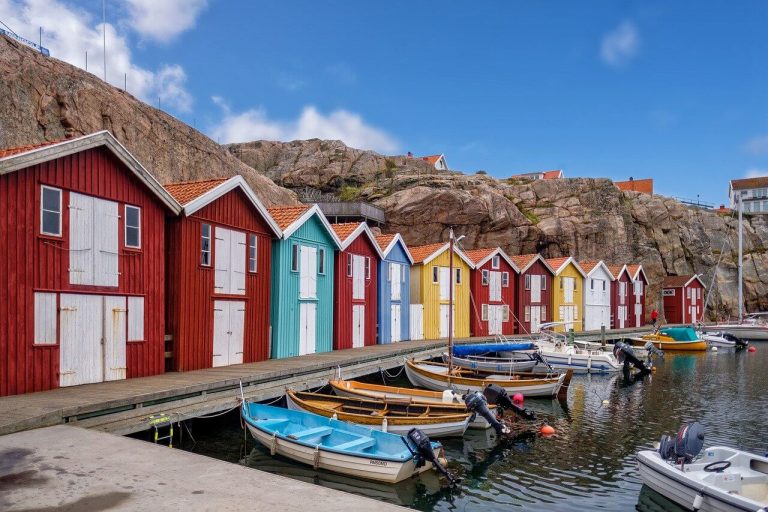
Things to do in Sweden
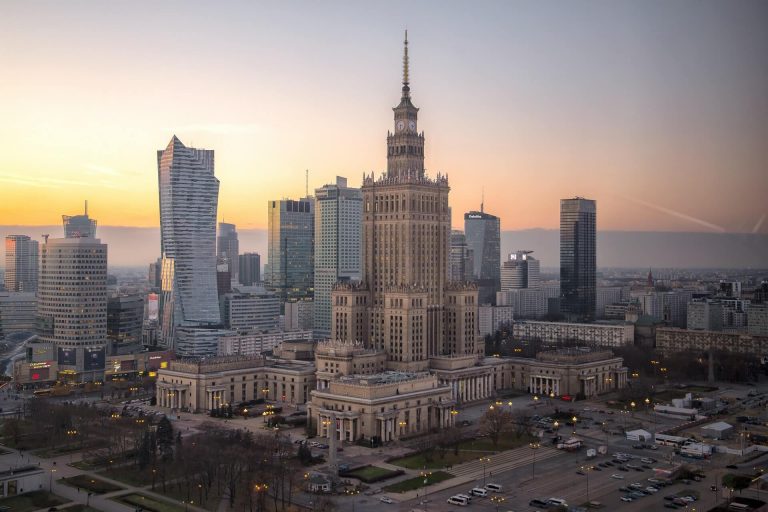
Things to do in Warsaw
Privacy overview.

The Best Time To Visit England (And The Worst!) 2024
Wondering when’s the best time to visit England?
England is a popular destination for travelers from all over the world, with its rich history, stunning landscapes, and vibrant cities.
But with its unpredictable weather patterns and diverse regions, it can be difficult to decide on the best time to visit. As someone who has lived in England their whole life I would still have trouble choosing!
In this article, we’ll explore the best and worst times to visit England, taking into account factors such as weather, crowds, and events.
Whether you’re interested in exploring London’s museums, hiking in the Lake District, or discovering historic towns like Bath and York, we’ve got you covered with tips on when to visit for the most enjoyable and affordable experience.
So pack your bags and get ready to explore all that England has to offer!

As an Amazon Associate, we earn from qualifying purchases. We also earn from other affiliate programs. This means we may receive a small commission on products purchased through our links at no extra cost to you.
Table Of Contents
Is england worth visiting, the best time to visit england, what time of year has the best weather in the uk, when do most tourists visit england, the cheapest time to go to england.
- Which Month Does It Rain The Most?
The Worst Time To Visit England
Frequently asked questions, top tips for visiting the uk.

England is definitely worth visiting!
England has a rich history and culture and is home to some of the world’s most iconic landmarks, museums, and galleries. It offers a diverse range of experiences, from the bustling cities of London, Manchester, and Liverpool to the tranquil countryside of the Cotswolds, Lake District, and Cornwall.
Here are some reasons why England is worth visiting:
- History and Culture: England has a long and fascinating history, with many castles, cathedrals, and museums that showcase its past. You can visit iconic landmarks such as Stonehenge, Buckingham Palace, and the Tower of London, as well as explore world-renowned galleries and museums, such as the British Museum and the National Gallery.
- Natural Beauty: England is home to some stunning natural landscapes, from the rolling hills of the Cotswolds to the rugged coastline of Cornwall. There are also numerous national parks and areas of outstanding natural beauty, such as the Lake District and the Peak District.
- Food and Drink: England is famous for its traditional dishes, such as fish and chips, roast beef, and Yorkshire pudding. It also has a thriving food and drink scene, with Michelin-starred restaurants, gastropubs, and artisanal food markets.
- Sports and Entertainment: England is home to some of the world’s most iconic sporting events, such as Wimbledon, the FA Cup Final, and the Henley Regatta. It also has a thriving music, theater, and arts scene, with many world-class venues and events.
- Friendly People: The people of England are known for their friendliness and hospitality. They are happy to share their culture and traditions with visitors, and are always ready to offer a helping hand.
In summary, England is definitely worth visiting for its rich history and culture, natural beauty, food and drink, sports and entertainment, and friendly people.

It might not be the definitive answer you’re seeking, but the best time to visit England will depend on your personal preferences and what you want to do and see.
England has a temperate maritime climate, which means that it is generally mild and rainy throughout the year. Here are some things to consider when deciding on the best time to visit England:
- Weather: The warmest and driest months in England are typically June, July, and August, making it a popular time for tourists to visit. However, it is also the busiest and most expensive time to travel. Spring (March to May) and Autumn (September to November) can also be good times to visit, with fewer crowds and pleasant temperatures.
- Festivals and Events: England has a number of festivals and events throughout the year, such as the Chelsea Flower Show in May, the Edinburgh Fringe Festival in August, and the Christmas markets in December. If you want to attend a specific event, be sure to plan your trip accordingly.
- Tourist Crowds: Peak tourist season in England is from June to August, with July being the busiest month. If you want to avoid crowds, consider visiting during the shoulder seasons (Spring and Autumn), or even during the Winter months.
- Budget: The cost of travel and accommodation in England can be quite high during peak tourist season and during the British school holidays. If you are traveling on a budget, consider visiting during the off-season or shoulder season, when prices may be lower.
Overall, the best time to visit England will depend on your interests and preferences. Spring and Autumn offer pleasant weather and fewer crowds, while Summer is the most popular time to visit. Winter can also be a good time to visit for those interested in Christmas markets and winter sports.

The weather in the UK is notoriously changeable, and it can be difficult to predict. Honestly, we love the changing seasons in England and even though we’re both warm weather lovers we still enjoy the crisp winter mornings or the Spring rain showers.
Here’s a rough overview of the kind of weather you can expect at different times of the year (but bear in mind the weather is pretty unpredictable, so you never really know what you’re going to get!)
The months of June, July, and August generally have the warmest and sunniest weather in the UK.
This is the summer season, and temperatures can often reach the mid-20s Celsius (mid-70s Fahrenheit) during the day. The days are longer, with the sun rising early and setting late, giving visitors plenty of time to explore and enjoy the outdoors.
While summer is generally the best time of year for warm and sunny weather, it’s important to remember that the UK weather can be unpredictable, even during the summer months. Rain showers can occur at any time of year, and cooler temperatures can occur even in the middle of summer.
Spring and Autumn
Spring (March to May) and Autumn (September to November) can also be good times to visit the UK, with mild temperatures and fewer crowds than in the summer months. The weather can still be quite unpredictable during these times, but you may find good weather during your visit.
During Spring you can look forward to blossoming flowers and a renewed sense of life after the winter. In Autumn, enjoy the leaves turning brown and the golden sunsets.
Winter (December to February) can be chilly and wet, with occasional snow in some parts of the country.
However, there are also UK Christmas markets and other festive events during this time of year, which can make it a magical time to visit the UK.
You can also appreciate roaring fires in English pubs and plenty of warming cups of tea. It’s a time when your cheeks will turn rosy with the cold, when muddy puddles are plentiful and when you can totally indulge in delicious food.
Overall, the best time of year for fair weather in the UK is generally during the summer months of June, July, and August.

Most tourists visit England during the summer months of June, July, and August. This is the peak tourist season in England, when the weather is typically warm and sunny, and many festivals and events take place.
Popular destinations such as London, Oxford, and Cambridge can be quite crowded during this time of year, and prices for accommodation and flights can be higher than at other times of the year.
Spring (March to May) and Autumn (September to November) can also be busy times for tourism, especially in the cities, as the weather is still mild and many events and festivals take place during these months.
The winter months (December to February) are generally the least busy for tourism in England, with fewer crowds and lower prices for accommodation and flights. However, some areas, such as the Lake District and other winter sports destinations, can be busy during the winter months.
Overall, the summer months of June, July, and August are the busiest for tourism in England, with the highest number of visitors. If you are planning to visit England during this time, it’s a good idea to book your accommodation and flights well in advance to secure the best prices and availability.

The cheapest time to go to England will depend on a number of factors, including your travel preferences, budget, and the type of experiences you are looking for. However, in general, the winter months of December to February can be a good time to find lower prices for accommodation, flights, and other travel expenses.
During the winter in England , tourism is generally slower, and many hotels and airlines offer discounts and special deals to attract visitors. While the weather can be chilly and wet, there are still plenty of indoor activities and attractions to enjoy, such as museums, galleries, and theatres.
Spring (March to May) and Autumn (September to November) can also be good times to find lower prices for travel to England, as these are considered shoulder seasons with fewer crowds than the peak summer months. However, prices may still be higher than in the winter months.
If you are flexible with your travel dates, you may also be able to find cheaper prices by avoiding weekends and school holidays , and by booking your accommodation and flights well in advance.
Overall, if you are looking to visit England on a budget, the winter months of December to February can be a good time to find lower prices for travel and accommodation. However, it’s important to be prepared for colder weather and shorter daylight hours during this time of year.
Which Month Does It Rain The Most In The UK?

In England, rainfall is spread fairly evenly throughout the year, with no significant dry season. However, on average, the months of October and November tend to be the rainiest months in England, with December and January following closely behind.
During these months, it’s not uncommon for England to experience persistent rain and drizzle, and some areas may also experience flooding. However, it’s important to note that the weather in England can be quite unpredictable, and rainfall can occur at any time of year.
If you are planning a trip to England during the rainy season, it’s a good idea to pack appropriate clothing and footwear, and to plan indoor activities and attractions as well as outdoor ones.
Despite the rain, England can still be a beautiful and enjoyable destination to visit, with plenty of historic sites, museums, galleries, and other attractions to explore. Just pack a good umbrella!
There is no “worst” time to visit England as the country offers unique experiences and attractions throughout the year. However, there are some times when certain activities or attractions may be closed or limited, or when the weather may not be ideal for some travelers.
The winter months of December to February can be the least appealing time to visit England for travelers who do not enjoy cold and wet weather, as temperatures can be chilly and rain and snow are common. Outdoor activities and attractions may be limited, and some tourist destinations may close or have shorter hours.
In addition, during the peak summer months of June, July, and August, England can be very crowded, particularly in popular destinations such as London, Oxford, and Cambridge. Prices for accommodation and flights can also be higher during this time of year, and hot weather can make some travelers uncomfortable.
Ultimately, the best time to visit England will depend on your personal preferences and interests. If you prefer milder weather and fewer crowds, spring (March to May) or autumn (September to November) can be good times to visit.
However, if you want to experience the buzz of summer events and festivals or the charm of winter holidays, these seasons can also be great times to visit England.

Here are some of the most asked questions we get when people are planning a trip to the UK.
How Many Days Do You Need In England?
The number of days you need to visit England depends on a lot of factors. However, to get a good taste of what England has to offer, we would recommend spending at least 7-10 days in the country.
With a week to 10 days, you can explore the major cities such as London , Bath, York, and Brighton , as well as some of the smaller towns and villages that are dotted around the countryside.
You will have time to see some of England’s iconic landmarks and attractions, such as the Tower of London, Buckingham Palace, Stonehenge, and the Lulworth Cove and Durdle Door .
If you have more time, you can explore England in greater depth and see more of the countryside and smaller towns and villages. You can also take day trips to nearby destinations such as Wales, Scotland, or even France or Belgium.
We recommend planning at least a week to 10 days in England to make the most of your visit and see some of the country’s most famous sights and attractions.
What’s The Best Way To Travel In The UK?
The UK has a well-developed transportation system, and there are several ways to travel around the country, depending on your budget, travel preferences, and the destinations you want to visit. Here are some of the best ways to travel in the UK:
Renting a car is the option we would recommend if you want to see more than just London. The countryside or smaller towns and villages are not easily accessible by public transport.
Driving in the UK is fairly straightforward, with well maintained roads and clear signposts. Remember we drive on the left though.
Car hire and petrol are more expensive than in other places in Europe, but cheaper than public transport, so it tends it be worth it unless you’re only visiting London where parking prices are insane.
We use Rental Cars and rate their services highly, but there is a wide range of companies who offer cars to rent all over the UK (Just make sure to read the reviews first – not all are created equal!)
Book your car rental now
The train network in the UK is extensive, and train travel can be a comfortable and convenient way to get around. The major cities are well-connected by train, and there are frequent services between them.
Train travel can be very expensive, particularly if you buy tickets on the day of travel, but you can often save money by booking in advance or using a railcard.
Where the trains fall short is if you want to visit some of the UKs countryside, as you will often have to do a combination of trains, buses and a lot of walking!
Bus or Coach
Buses are a cheaper alternative to trains, and there are several bus companies that operate services between the major cities and towns in the UK. Bus travel can take longer than trains, but it can be a good option if you are on a budget.
Buses between small towns and villages are often unreliable so don’t rely on the timetable!
Cycling is a popular way to explore the UK, particularly in rural areas. There are several cycle routes and trails, and some cities have dedicated bike lanes.
Compared to other countries in Europe, the UK hasn’t really caught up with bike accessibility and you might find bike lanes come to an abrupt halt, or are ignored by pedestrians. Keep this in mind in cities, and always wear a helmet!
Walking is a great way to explore the UK’s cities and countryside, particularly in areas with historic buildings, parks, and gardens. There are several walking tours available in the major cities, and there are many trails and routes in the countryside.
Ultimately, the best way to travel in the UK will depend on your budget, travel preferences, and the destinations you want to visit. However, the country’s well-connected transportation system means that you have several options to choose from.
Is England Expensive?

England can be an expensive destination for travelers and locals alike, particularly in major cities such as London. The cost of accommodation, food, and transportation can be high, and attractions and activities can also be costly.
However, there are ways to save money when traveling in England. Here are some tips:
- Visit outside peak season: Prices for accommodation and flights can be higher during peak tourist season (June to August), so visiting during the off-season (September to May) can be more affordable.
- Stay in budget accommodation: There are several budget-friendly options for accommodation in England, such as hostels, guesthouses, and budget hotels. Camping is also a cheaper alternative, though you can’t free camp and campsites aren’t always as cheap as you’d like them to be.
- Use public transportation: Public transportation can be a more affordable way to get around England, particularly in cities like London where taxis and private transportation can be expensive.
- Eat in local pubs and restaurants: Eating in local pubs and restaurants can be more affordable than dining in upscale restaurants, and you can often find good quality and tasty food.
- Take advantage of free attractions: Many of England’s top attractions, such as museums and galleries, offer free admission. Exploring the city’s parks and gardens is also a great way to experience the city without spending money.
Overall, while England can be expensive, with some careful planning and budgeting, it is possible to enjoy the country without breaking the bank.
What Should You Pack?
When packing for a trip to England, it’s important to consider the weather and the activities you have planned. Here are some items you should consider packing for your trip:
- Layers: England’s weather can be changeable, so it’s a good idea to pack layers that you can add or remove depending on the temperature.
- Rain gear: England is known for its rainy weather, so it’s a good idea to pack a waterproof jacket, umbrella, and waterproof shoes.
- Comfortable walking shoes: If you plan to do a lot of walking or exploring, comfortable shoes are a must.
- Power adapter: England uses different power outlets and voltage than many other countries, so a power adapter is essential if you plan to use your electronics.
- Travel guide and map: A travel guide and map can be helpful for planning your trip and finding your way around.
- Camera: England has many iconic landmarks and scenic areas, so a camera can help capture your memories.
- Converter for currency: The currency used in England is the pound sterling, so if you’re coming from a different country, you may want to bring a currency converter to help you stay within your budget.
- Formal wear: If you plan to attend formal events, such as weddings or business meetings, it’s a good idea to pack formal wear.
Overall, packing for a trip to England requires some planning and consideration of the weather and activities you have planned. By packing the right items, you can ensure a comfortable and enjoyable trip. If you’re looking for a complete packing list for London we’ve got you covered!
Do You Need Travel Insurance?

Travel insurance is not a legal requirement to enter England, but it is highly recommended. While England is a relatively safe and developed country, unexpected events can occur while traveling, such as illness, injury, lost or stolen belongings, and trip cancellations or delays.
Travel insurance can provide coverage for these types of situations and give you peace of mind while you travel. It can cover medical expenses, emergency medical evacuation, trip cancellation or interruption, lost or stolen luggage, and other unforeseen expenses.
When choosing a travel insurance policy, be sure to read the terms and conditions carefully to understand what is covered and what is not. Some policies may have exclusions or limitations, so it’s important to choose a policy that meets your specific needs.
We always use Safety Wing and love the fact they will insure you for single and multiple trips a year, and also that you can extend your insurance while you’re away if you need to.
Overall, while travel insurance is not required to enter England, it is a good idea to have coverage in case of unexpected events while you are traveling.
Check out Safety Wing travel insurance here

- Bring an umbrella or raincoat as the weather can be unpredictable and it may rain at any time of the year.
- In London, learn to use public transport, including buses, trains, and the London Underground, as it is usually the most convenient way to get around.
- Get an Oyster Card if you plan on using public transport in London, as it will save you money and time.
- Check out some of the best hotels in London with rooftop pools for some real luxury!
- Try the local food, such as fish and chips, a full English breakfast, and afternoon tea.
- Visit historical landmarks, such as Stonehenge, the Tower of London, and the Roman Baths.
- Take a walking tour of cities like London, Oxford, and Cambridge to get a sense of the local history and culture.
- Visit a traditional pub for a pint of beer or cider and some pub grub.
- Be prepared for the high cost of accommodation, food, and attractions, especially in tourist hotspots like London.
- Bring comfortable shoes, as there is a lot of walking to do in cities and towns.
- Respect the local customs and culture, such as queuing in an orderly fashion and not talking too loudly on public transport. We’re old-fashioned at heart!
- Try to immerse yourself in the local culture by attending festivals, events, and performances, such as the Edinburgh Fringe Festival or the Notting Hill Carnival.
- Be mindful of the rules of the road if you plan on driving in England, such as driving on the left-hand side of the road and navigating roundabouts.
Conclusion: The Best Time To Visit London (and the worst!)
In conclusion, there are many factors to consider when deciding on the best time to visit London, such as weather, crowds, events, and budget.
While the shoulder seasons of spring and autumn are generally considered the best times to visit due to milder weather, smaller crowds, and more affordable prices, each traveler’s preferences and priorities may differ.
Some travelers may prefer to visit during the peak tourist season of summer to take advantage of longer days and outdoor activities, while others may enjoy the festive atmosphere of London during the winter holiday season.
Ultimately, the best time to visit London depends on your individual travel style and priorities.
Regardless of when you visit, London is a vibrant and exciting city with something to offer year-round. By doing your research and planning ahead, you can make the most of your trip and enjoy all that this iconic city has to offer.
Further Reading
- Things you must do on a trip to the UK
- Top places to visit in Cornwall
- London hotels with a view
Similar Posts

Winter In England: Top UK Breaks

17 Top Places You Need To Visit In Cornwall 2023

The Best Christmas Markets In Hampshire 2023

The Malham Cove Walk Ultimate Guide 2023

Is London Safe To Visit In 2024

Where To Stay In London (and where not to stay): First Time Visit 2023
- Search Search Hi! We’re Emily, Adam and Tiny Cat, liveaboard sailors travelling the world on our 38ft sailboat and writing about it as we go. We hope we can inspire you to live the life you’ve always dreamed, whether that’s exploring the world or living a more simple way of life in a tiny home. Find out more. Patreon
- Privacy Policy
- Search Please fill out this field.
- Manage Your Subscription
- Give a Gift Subscription
- Newsletters
- Sweepstakes
- Destinations
The Best Times to Visit London, According to Local Experts
Here's when to go to London for good weather, smaller crowds, lower prices, and more.
:max_bytes(150000):strip_icc():format(webp)/Brad-Japhe-author-pic-02ce5d707440449fafcd35e116dfa76d.png)
- Best Times to Visit London for Smaller Crowds
Best Times to Visit London for Good Weather
- Best Times to Visit London for Lower Prices
- Best Times to Visit for Making Spirits Bright
Worst Times to Visit London
London is one of the most visited places on the planet. Each year, the English capital welcomes upwards of 30 million tourists. They are greeted by iconic sites, like Buckingham Palace and Westminster Abbey. They come to catch a show in the West End. And, more recently, they arrive to explore world-class dining and cocktail culture. But they don’t all appear in equal numbers across the year.
The Big Smoke is very much a seasonal destination. High season typically takes off in early June and extends through the start of September. Late April through May, along with September into mid-October, are the shoulder seasons on either side. And late October through early April bookends the lull of low season.
Gautier Houba/Travel + Leisure
But you’re not bound by these trend lines. The reality is there’s no bad time to land in London . And the “best” time is entirely relative. It merely depends on what type of experience you’re eager to achieve. Let’s find out what — and when — that is, exactly. Below, we break it all down, so you can discover your very own prime time to see the city.
- High Season: Early June through early September
- Shoulder Season: Late April through May; September to mid-October
- Low Season: Late October through early April
Stephanie Pollak/Travel + Leisure
Best Times to Visit London for Smaller Crowds
The lion’s share of those 30 million annual visitors will touch down at some point during the summer months. You can’t blame them for being so predictable — London is consistently compelling throughout that time period, as gray skies and rain are rare. And the city’s 3,000 parks and green spaces are teeming with life.
“But the best time for me is spring,” according to Ross Corcoran, managing director of Lang Atholl , a bespoke tour company based in Scotland. “The weather is milder, the crowds are not as big, and hotel rates are not yet surging. It also allows you to get around the city with relative ease and use the Tube like a local rather than a tourist.”
Indeed, if you arrive in May, specifically, you might find you have the whole city to yourself. Although outdoor markets and street fairs are fully open, embracing the warming air, the international arrivals have yet to accumulate. Many native Londoners, meanwhile, step outside of town to take advantage of the multiple bank holiday weekends marking the month.
“June and July definitely have the best weather,” says Chris Perone, general manager at NoMad London . “Long days and warm evenings are perfect for strolling the city’s endless, meandering pavements.”
To his point, as the summer equinox approaches in mid-June, it starts getting light before 5 a.m. and darkness doesn’t set in until well after 9 p.m. With more than 16 hours of sun to play with, there’s ample opportunity to enjoy a lengthy morning walk alongside canals and greenery. Then, have a full English breakfast — or a legendary Sunday roast — before perusing the shops and restaurants of Mayfair.
You can even parade primary thoroughfares such as Regent Street, which shuts down to vehicular traffic this time of year . Or, take off toward the River Thames and check out the city’s newest observation deck, Lift 109 , built into the chimney of the historic Battersea Power Station.
Then, return to green space in time for BST Hyde Park . The concert series, which runs nightly from the end of June through the beginning of July, carries with it world-class talent. Last year, headliners included Billy Joel, Pink, Lana Del Rey and Bruce Springsteen.
Best Times to Visit London for Lower Prices
“August and January are undoubtedly when you can grab the best deals,” Perone confirms. “While August can be a bit hot, everything is open and the city just has this buzz with the pubs overflowing into the streets. January is dark and can be damp, but that’s when the fireside tipples are at their best.”
As it applies to the former, simply make sure you’re booking a hotel — like the NoMad — that has adequate air conditioning. Yes, August temperatures have been inching toward the 100-degree mark in recent years, but it’s never as muggy as, say, a New York summer. So, it’s worth contending with the climate in exchange for those precious reduced rates, which apply to everything from overnight stays to rental cars.
As for January, you’re looking at an average of 12 days worth of rain throughout the month, with temperatures sitting squarely in 40-degree territory. It's not ideal, and yet, as a result, the indelible coziness of British pub culture is dialed up to its maximal value. It’s a fantastic month to mingle with locals in Chelsea and Belgravia. Make your way past the terraced alabaster townhouses and amble into any number of legendary gastropubs, including The Harwood Arms , the only Michelin-starred pub in London. Or, enjoy new venues such as Bóha , which delivers on the promise of one of the most satisfying Sunday roasts in town. Just make sure to pack an umbrella and jumper .
Best Times to Visit for Making Spirits Bright
London is one of the most festive locales on earth come holiday season. Ornately lit Christmas trees populate public squares, wreaths and red ribbons dress doorways, and a diverse array of themed markets set up shop from Clapham to Clapton.
There are too many memorable offerings to list them all, but if you’re staying in central London, Christmas by the River is one you won’t want to miss. It features more than 50 merchants alongside London Bridge City Pier, under the shadows of Tower Bridge. Leicester Square market is another optimal option. It’s one of the smaller ones in sheer size, but the level of festivity it extends is beyond measure. Most Christmas markets operate from the start of November through the first week of January.
If you’re looking for another sort of holiday spirit, book your trip during London Cocktail Week . What started in 2010 as an intimate showcase of the local drinks scene has ballooned into the world’s largest cocktail festival, underscoring this city’s standing as the international epicenter of cocktail culture. The confab includes some of the top names in mixology, who fan out across town to shake up all sorts of pop-ups, tastings, and speciality drink activations over a 10-day period in mid-October.
“Contrary to popular belief, summer is the worst time to visit London,” says Corcoran. “If there's hot weather, the underground is almost unbearable, and if you're used to air conditioning, I would strongly recommend against it. You will feel stressed, rushed, hot, and flustered trying to get around the city with the warmer temperatures and stultifying foot traffic.”
You’ll also endure the highest airfare if booking your trip between June and July. If you're determined to battle the crowds, however, consider taking a train out to the countryside for at least a few days during your stay. The inclusive beach town of Brighton to the south, or the bucolic countryside of the Cotswolds to the west are ideal, if not predictable, summertime retreats.
“July is a tough time in London,” adds Perone. “With so many events, hot weather, and lots of out-of-towners in general, London can feel a bit cramped and stuffy. “And the Tube network... it’s an oven.”
So-called “deep-Tube lines,” which include the most popular services, like Piccadilly, Central, Victoria, and Northern, are all free of air conditioning. Needless to say, it’s a challenging experience to be cramped among strangers in a 90-degree train car. But if you stick with the sub-surface network, the train cars are not only temperature controlled, they’re also more spacious. Primary examples include the District, Circle, Hammersmith & City, and Metropolitan lines, as well as the Wi-Fi-equipped Elizabeth line.
Related Articles
- Best time to visit England
Book your individual trip , stress-free with local travel experts
Select Month
- roughguides.com
- Travel guide
- Local Experts
- Travel Advice
- Accommodation
Plan your tailor-made trip with a local expert
Book securely with money-back guarantee
Travel stress-free with local assistance and 24/7 support
Considering the temperateness of the English climate, it’s amazing how much mileage the locals get out of the subject – a two-day cold snap is discussed as if it were the onset of a new Ice Age, and a week above 25°C (upper 70s °F) starts rumours of drought.
Climate in England
Festivals and holidays in england by month, january/february, music festivals, travel ideas for england, created by local experts.

20 days / from 3066 USD
The Great British Road Trip
Get ready to explore Britain on this unique self-drive road trip. Choose the car of your liking before you hit the road: from the Cotswolds and its picturesque villages over the Beatle's favorite hang-out in Liverpool to Scotland's capital Edinburgh: this trip includes many highlights to be explored
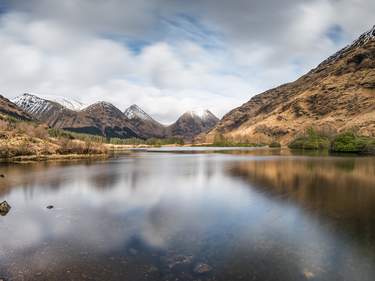
7 days / from 1382 USD
Magical 7-Day Family Adventure in Scotland and England : From Harry Potter to Loch Ness!
Searching for an unforgettable family adventure? Scotland is the perfect destination! With a perfect balance of nature, adventure, and Scottish culture. This 7-day trip offers a delightful mix of activities that everyone in the family will enjoy. Get ready to create life long lasting memories!
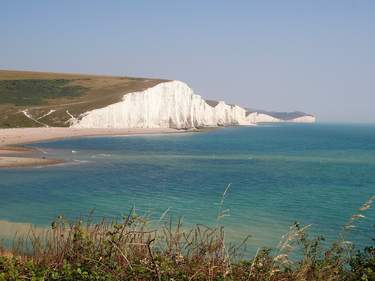
5 days / from 653 USD
Refreshing English Countryside Break
Outside of London, England is known with a countryside full of history, picturesque villages, patchwork hills, and winding country roads. Explore the countryside with its castles, parks, and historical cities such as Oxford.
However, on the whole, English summers rarely get very hot and the winters don’t get very cold, and there’s not a great deal of regional variation, though in general, it’s wetter in the west than the east, and the south gets more hours of sunshine than the north. Differences between the regions are slightly more marked in winter, when the south tends to be appreciably milder and wetter than the north. Despite the general temperateness of the climate, extreme weather patterns are becoming more frequent and recent years have seen summer temperatures well into the 30s (over 90°F) and catastrophic winter and spring flooding in many parts of the country.
The bottom line is that it’s impossible to say with any degree of certainty that the weather will be pleasant in any given month. May might be wet and grey one year and gloriously sunny the next, and the same goes for the autumnal months. November stands an equal chance of being crisp and clear or foggy and grim. Obviously, if you’re planning to camp or go to the beach, you’ll want to visit between June and September – a period when you shouldn’t go anywhere without booking your accommodation well in advance. Elsewhere, if you’re balancing the likely fairness of the weather against the density of the crowds, the best time to visit would be between April and early June or in September or October.
Many of the showpiece events marketed to tourists – Trooping the Colour, the Lord Mayor’s Show and the like – say little about contemporary England and nothing about the country’s regional folk history. For a more instructive idea of what makes the English tick, you’d do better to sniff out some grassroots, local-led festivities – a wacky village celebration, for instance, or London’s exuberant Notting Hill Carnival.
Most major towns and cities host public festivals, some dating back centuries, others more recent inventions, but everywhere there’s a general willingness both to revive the traditional and to experiment with the new – from medieval jousting through to the performing arts. The events calendar below picks out some of the best; for detailed local listings contact tourist offices.
Chinese New Year (on or near Feb 3, 2011; Jan 23, 2012; Feb 10, 2013; wwww.londonchinatown.org). Processions, fireworks and festivities in the country’s two main Chinatowns in London and Manchester.
Shrove Tuesday (aka Mardi Gras/“Fat Tuesday”; March 8, 2011; Feb 21, 2012; Feb 12, 2013). The last day before Lent, also known as “Pancake Day”: it’s traditional to eat pancakes and, famously in Olney, Buckinghamshire (wwww.visitolney.com), to race with them. Ashbourne in Derbyshire (wwww.ashbourne-town.com) hosts the world’s oldest, largest, longest, maddest game of “Shrovetide Football”.
British & World Marbles Championship (Good Friday; wwww.britishmarbles.org.uk). Held at Tinsley Green in Sussex.
Hare Pie Scramble and Bottle-Kicking (Easter Monday). Chaotic village bottle-kicking contest at Hallaton, Leicestershire.
World Coal-Carrying Championship (Easter Monday; wwww.gawthorpe.ndo.co.uk). Competitors lug 50kg of coal through Gawthorpe village in West Yorkshire.
Helston Furry Dance (May 8). A courtly procession and dance through the Cornish town by men in top hats and women in formal dresses.
Glyndebourne Opera Festival (mid-May to end Aug; wwww.glyndebourne.com). One of England’s classiest arts events, in East Sussex.
Hay Festival (late May; wwww.hayfestival.com). The nation’s bookish types descend on Hay, on the Welsh border, for this literary shindig.
Bath Music Festival (end May to early June; wwww.bathmusicfest.org.uk). Arts jamboree, with a concurrent fringe festival.
World Worm-Charming Championships (last Sat; wwww.wormcharming.com). Worm-charming and other zany pastimes, at Willaston, Cheshire.
Swan Upping (3rd week; wwww.royal.gov.uk). Ceremonial counting of the swan population on the upper stretches of the River Thames, dating back to the twelfth century. At Windsor, all the oarsmen stand to attention in their boats and salute the Queen.
Blackpool Illuminations (early Sept to early Nov; wwww.blackpool-illuminations.net). Five miles of extravagantly kitsch light displays on the Blackpool seafront.
Abbots Bromley Horn Dance (early Sept; wwww.abbotsbromley.com). Vaguely pagan mass dance in mock-medieval costume – one of the most famous of England’s ancient customs, at Abbots Bromley, Staffordshire.
Halloween (Oct 31). All Hallows’ Eve – and Samhain, last day of the Celtic calendar. Now swamped by commercialized US-style costumes and trick-or-treating, although druidic ceremonies survive at a few sites (the Rollright Stones, for example; wwww.rollrightstones.co.uk).
London to Brighton Veteran Car Run (1st Sun; wwww.lbvcr.com). Ancient machines cough and splutter their way 57 miles down the A23.
Bonfire Night (Nov 5). Fireworks and bonfires held in communities all round the country to commemorate the foiling of the Gunpowder Plot in 1605 – most notably at York (wwww.yorkmaze.com), Ottery St Mary in Devon (wwww.otterytarbarrels.co.uk), and Lewes in East Sussex (wwww.bonco.org.uk).
England has gone music festival crazy. Every weekend from June to September now sees some kind of musical happening – and in July and August literally dozens of outdoor events take place simultaneously in parks, town centres, farms, beaches and disused airfields up and down the country, often drawing tens of thousands of people to camp out for a weekend of partying under (hopefully) sunny skies. Here are ten to choose from; check wwww.efestivals.co.uk for details of hundreds more.
Sunrise Celebration (early June; wwww.sunrisecelebration.com). Hippyish “festival of organic arts and culture”, held in Somerset as a prelude to summer.
Isle of Wight Festival (mid-June; wwww.isleofwightfestival.com). Three days of established rock and pop acts for thirty/forty-something groovers.
Glastonbury (late June; wwww.glastonburyfestivals.co.uk). Top-class musical line-up – nothing can dampen the trippy-hippy vibe.
Latitude (mid-July; wwww.latitudefestival.co.uk). Genteel, family-friendly fest, strong on the wider arts and comedy, in a gorgeous part of Suffolk.
Secret Garden (mid-July; wuk.secretgardenparty.com). A gorgeous lake and wacky art installations distinguish this genial Cambridgeshire hippie-fest.
WOMAD (late July; wwww.womad.org). Renowned three-day world music event at Charlton Park, outside Malmesbury, Wiltshire.
Global Gathering (late July; wwww.globalgathering.com). A weekend of top DJs and the odd crossover live act at Long Marston Airfield near Stratford-upon-Avon.
Cambridge Folk Festival (late July/early Aug; wwww.cambridgefolkfestival.co.uk). Mellow and unpretentious folk festival that’s still going strong almost five decades after it began.
Leeds Festival (late Aug; wwww.leedsfestival.com). Raucous weekend of rock, punk and indie acts, both new and established.
Bestival (early Sept; wwww.bestival.net). Quirky event on the Isle of Wight, featuring big names, wild electronica and fancy dress.
The Rough Guides to England and related travel guides
In-depth, easy-to-use travel guides filled with expert advice.

Travel advice for England
From travel safety to visa requirements, discover the best tips for traveling to England
- Eating and drinking in England
- Sports and Outdoor activities in England
- Travel Tips England for planning and on the go
- Getting around England: Transportation Tips
- How to get to England
- Shopping tips for England
Find even more inspiration here

- Travel Tips

written by Keith Drew
updated 16.05.2021
A former Rough Guides Managing Editor, Keith Drew has written or updated over a dozen Rough Guides, including Costa Rica, Japan and Morocco. As well as writing for The Telegraph, The Guardian and BRITAIN Magazine, among others, he also runs family-travel website Lijoma.com. Follow him @keithdrewtravel on Twitter and @BigTrips4LittleTravellers on Instagram.
Ready to travel and discover England?
Get support from our local experts for stress-free planning & worry-free travels.
- Travel advice
- Where to stay

When is the best time to visit the UK?
Though it may look small, the UK is a hugely diverse and exciting island nation, and there are countless reasons to visit. In fact, London is regularly ranked one of the top travel destinations in the world. So when's the best time to go?
Since the weather stays relatively mild year-round, there's really no bad time to visit the UK. However, the country is generally at its peak in spring and autumn, when there are fewer tourists and the landscapes are either coming into bloom or bursting into autumnal colour.
If you're after sunshine, the important thing to know is that the weather is notoriously unpredictable in the UK - no matter what time of year it is, you just never know what will happen.
Luckily, it's also famously temperate, which means you're very unlikely to experience extremes like blizzards, hurricanes, tornadoes or intense heat waves.
That being said, it's rather hard to generalise about visiting a country that consists of 4 distinct nations, each with their own seasonal quirks.
And so, read on to discover the best times to visit England, Scotland, Wales and Northern Ireland, followed by a month-by-month guide to visiting the UK.
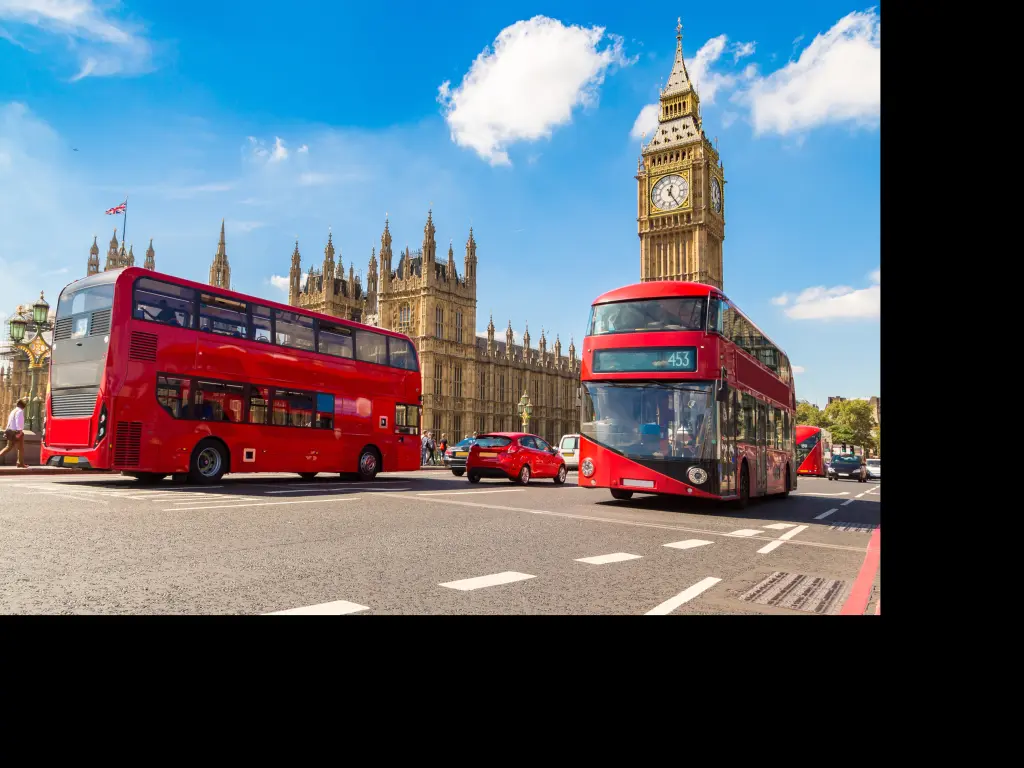
Best time to visit South England
Whether you want to visit London, another big city like Liverpool or Bristol, or take a trip to the English countryside, there's lots to see and do in this historic country.
As locals, we would argue that any time is a good time to visit London for a city break , but of course there are less crowded months that you might want to take advantage of.
High tourist season in London is in the summer (May to mid-September) and December, over the Christmas holidays.
So to avoid the throngs and benefit from cheaper hotel rates and flights, you should plan your London trip to fall over autumn, late winter or springtime.
We'd advise going in the autumn or spring if you're planning on doing a road trip around England , taking in the major sites like Oxford, Stonehenge, Cheddar Gorge and Brighton.
These popular spots can get pretty busy in high season, and the roads are somewhat unreliable in the winter, so October-November and March-May are ideal.

Average monthly temperature and rainfall for England (London Heathrow)
Best time to visit north england, average monthly temperature and rainfall for north england (durham), best time to visit scotland.
Seeing as it's more northerly than England, it's unsurprising that generally Scotland tends to get colder weather.
But it also means that you'll enjoy long daylight hours in the summer, with the sun not setting until around 10pm in some parts of the country.
And in the wintertime, the high latitude means Scotland is occasionally illuminated by the Northern Lights - a truly spectacular phenomenon.
Many travellers with their sights set on Scotland opt to visit the capital Edinburgh for a city break.
If you're one of them, we recommend going in early autumn or springtime, when the weather is not too cold and the summer tourists haven't arrived.

You could also visit in August to experience the legendary Edinburgh Fringe Festival (which everyone should absolutely do at least once in their lifetime), but if you don't enjoy big crowds, give this one a miss.
If, on the other hand, you are looking to explore the epic wilderness of northern Scotland, consider booking your trip for the summertime.
A road trip along the North Coast 500 , a stunning scenic route in the Highlands, will take you about a week - and what a memorable, photogenic week it will be!

Average monthly temperature and rainfall for Scotland (St. Andrews)
Best time to visit wales.
Wales is all about the great outdoors, so if you plan on doing some hiking, beach-hopping or camping, you'll want to wait til early summer.
In May-June, it won't be too crowded, the wildflowers will be in bloom, and the sun should be shining at least a little bit.
Wales is also stunning in autumn, however, when the leaves transition to vibrant shades of gold and the harvest season yields fresh local produce.
And if you want to experience the country's most important holiday, be there on the 1st of March, when locals attend parades, wear daffodils and traditional Welsh dress, and snack on Welsh cakes for St David's Day.

Average monthly temperature and rainfall for Wales (Cardiff)
Best time to visit northern ireland.
Slightly less temperate than England, Northern Ireland does tend to get rather cold in the winter season.
During the summer months, though, it benefits from long daylight hours - we're talking 5am to 10pm - which makes it a fun and lively time to visit.
Plus, the capital city Belfast was recently voted the best place to visit in 2018, proving that this country is a hidden gem just waiting to be discovered.
If you'd rather save some money and escape tourist season, consider booking a trip to Northern Ireland in autumn, when the trees take on fiery orange hues.
Head to Castle Cool and take a stroll around the lake to discover beautiful autumnal scenery at every turn.
Average monthly temperature and rainfall for Northern Ireland (Armaghada data)
Best time to visit the uk - a month-by-month guide.
After the chaos of Christmas subsides, things become calmer and quieter in the UK, making it quite a pleasant time to visit.
You can also take advantage of the post-holiday sales offered at many of the stores in London and beyond.
The only downside of visiting the UK in January is the weather.
On average across the UK, temps this month range from a high of 7° Celsius (44° Fahrenheit) to a low of 1° C (34°F).
Plus, you should note that many of the older buildings in the country are not very well insulated, so you'll need to bring along fuzzy pyjamas and lots of layers!
On the other hand, if there's one thing the UK does well, it's providing ways to get cosy - and there truly is nothing better than lounging beside a log fire in a quaint, old pub with a red wine and a steak and ale pie.

Plus, if you visit Scotland at the end of January, you'll be there on Robert Burns night - a festive holiday commemorating the country's favourite poet.
It's traditional on Burns Night to read his poetry, sip on whiskey and eat haggis - a classic Scottish dish made from sheep's heart, liver and lungs. Bon appetit!
The weather in the UK is still pretty dreary in February; in fact, you're more likely to see snow and ice now than earlier on the the winter.
Luckily, there's plenty of fascinating things to do and see indoors, so as long as you bring a warm coat, February is a fine time to visit the UK.
In London, for instance, it's a great time to head to the numerous museums - many of them free - to take in the latest exhibitions and shows.
You can also avoid the bad weather by going on a trip to one of the UK's Georgian spa towns - historic resorts that are home to therapeutic mineral spas.
Bath, Cheltenham, Harrogate and Royal Leamington Spa are some of the best and most popular spa towns in the UK, where you can 'take the waters' like they did in the olden days.

March is another changeable month in the UK; some years it will reveal the first glorious hints of spring, and other years it will be a month filled with snow and extreme cold.
Whatever the weather, the best way to channel your inner Brit is by layering up, putting on a brave face and going outside for a good old country walk.
In England and Wales alone, there are an estimated 225,000km (140,000 miles) of public footpaths - walking routes on which the public have a legally protected right to travel on foot.
This means the possibilities for long, scenic walks are essentially endless.
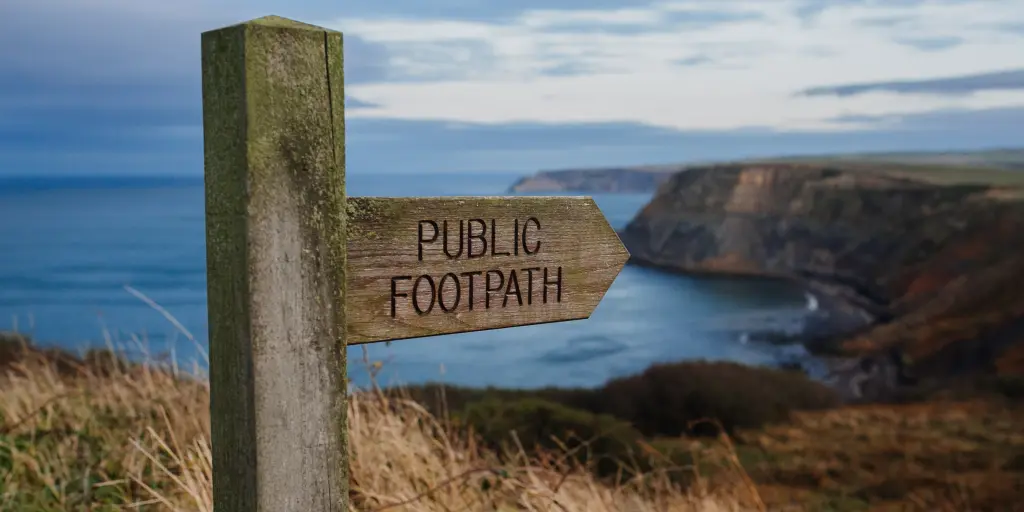
Some of the most picturesque walks are located in the Lake District, the Cotswolds, Norfolk, Cornwall, Devon and Wales - but really, you can find a good route pretty much anywhere.
Do it the true British way by congratulating yourself at the end of the walk with a pint and a hot meal at a traditional country pub.
The final match of the rugby Six Nations Championship also usually takes place in March, so if you love a spirited, sporty atmosphere, this is a great month for you to visit the UK.

Usually by April, things have warmed up a little bit, but it has also been known to be quite rainy and chilly this month - such is the nature of UK weather!
The good thing is that April marks the beginning of daffodil season in the UK, and you're bound to see people selling little bouquets around every street corner.
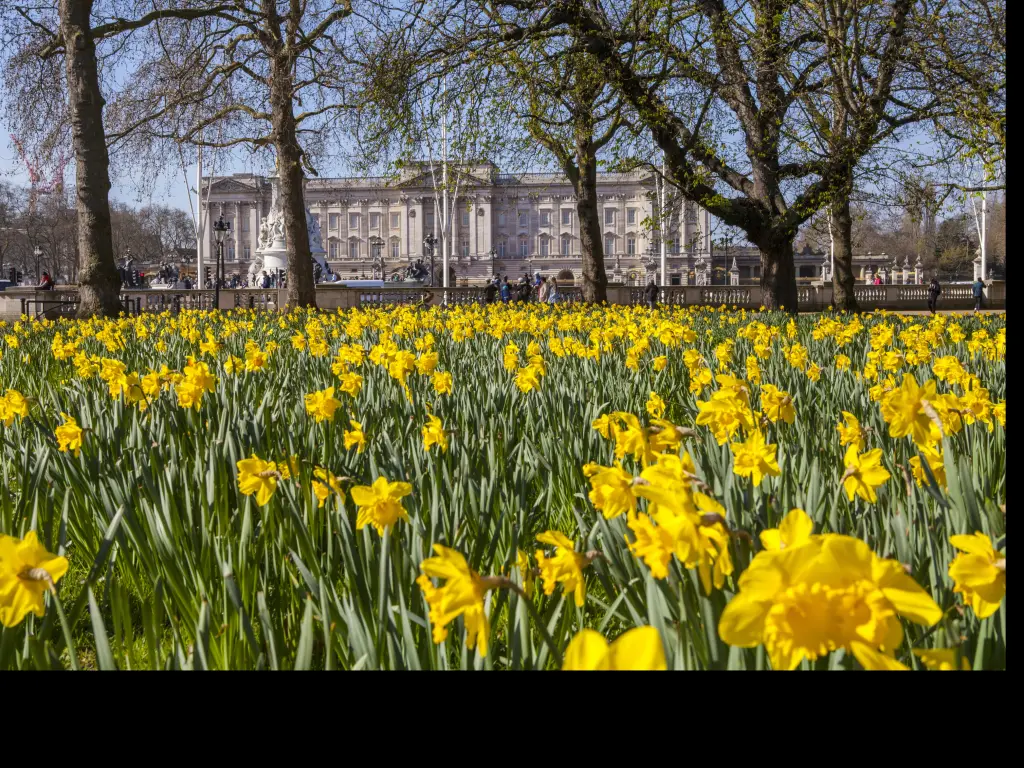
If you're heading to the countryside in April, daffodils, bluebells and crocuses will be starting to blanket the hills and forests, creating a beautiful and colourful display.
It's a particularly lovely time to travel to the Lake District, where you'll be greeted by spectacular landscapes and countless hiking opportunities for all abilities. Just remember to bring your waterproofs!
April is also a great time of year to tour the south coast of England by car , before the roads become congested with summer travellers.
You can time your trip so that you finish in London at the end of April, just in time to catch the famous London Marathon, which draws more than 36,000 runners to the city.
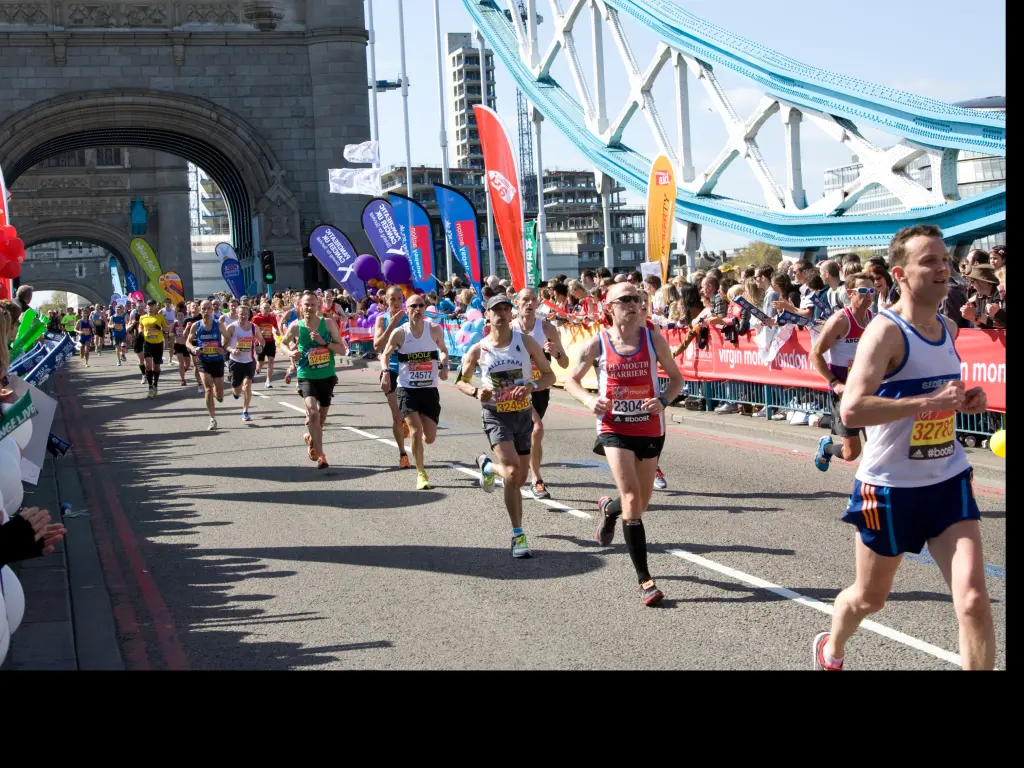
One thing you should know about May in the UK is that there are two bank holidays this month, which means some of the more popular destinations may be crowded during those weekends.
Flights and train tickets will also likely be at a premium, so try to avoid travelling on those particular weekends.
On the plus side, visiting the UK in May means you're very likely to experience some degree of sun and warmth - finally!
For a special UK holiday treat, make your way south to the famed Jurassic Coast, known for its dramatic cliffs and pristine beaches, as well as being home to fossils that date back millions of years.

In May, you can expect temps to reach about 18°C (65°F) - not quite sunbathing weather, but pleasant enough!
It's also a fabulous time to visit Snowdonia, a majestic mountainous region in Wales where you can go hiking, mountaineering, cycling, fishing and wildlife-spotting.
In terms of weather, June is definitely one of the best times to visit the UK - although, again, you can never be 100% sure.
Still, by June, summer has well and truly started, even in the northernmost parts of Scotland and Northern Ireland, with as many as 13 daylight hours in Northern Ireland, and an amazing 17.5 in Scotland.
Plus, this month is super busy in terms of festivals and events all around the UK, including the well-known Glastonbury and Isle of Wight music festivals.
Wherever you decide to go in the UK, now is the time to take advantage of all the amazing outdoor activities on offer, from touring London on a Thames clipper boat, to climbing Arthur's Seat in Edinburgh, to watching the sunrise over Stonehenge on the Summer Solstice.
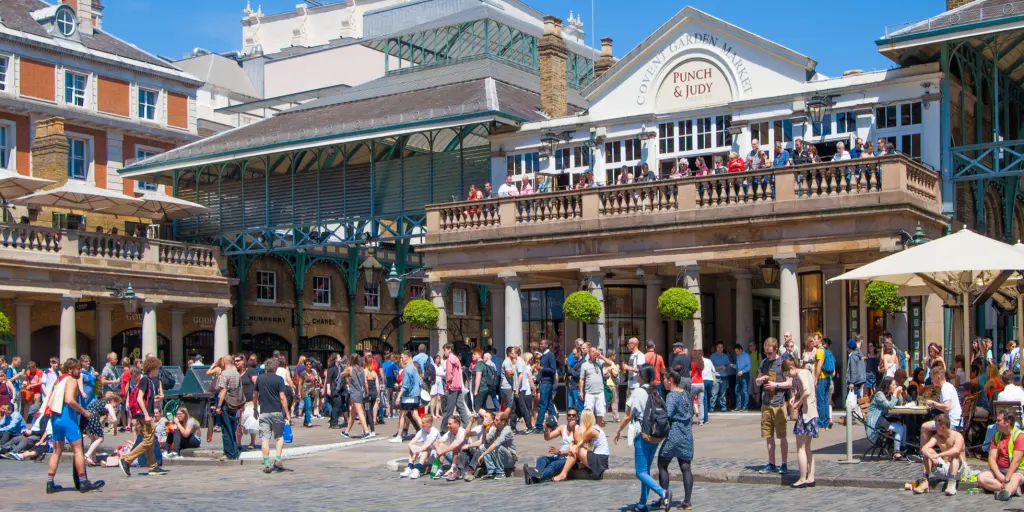
Most schools across the UK will have broken up by mid-July, so this month tends to be a bit more hectic.
Rather than visiting London, which will be packed with tourists, you're probably better off heading to a smaller city like Bath or Oxford for a city break.
You can also escape to the seaside to get some sun - just don't expect tropical beaches and swaying palm trees.
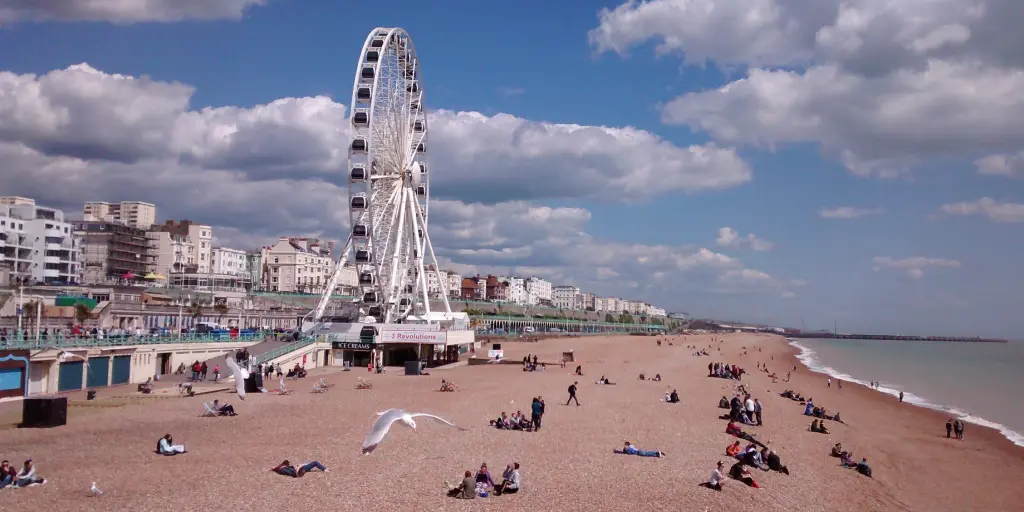
Instead, the UK coastline is far more wild, and UK seaside towns tend to be all about kitschy charm and 60s nostalgia, with fish and chip shops, arcades and fresh seafood galore.
Our personal favourite is Margate - a shabby-chic beach town with a cool Turner Contemporary art gallery, top-notch restaurants, and quaint antiques shops, just 90 minutes from London.
Cornwall is another top UK summer time destination, especially among keen surfers.

August is another busy month in the UK, with the Edinburgh Fringe Festival taking top billing.
This month-long theatre and arts extravaganza takes over the entire Scottish city, turning nearly every street corner into a stage.
It's an incredibly exciting time to visit Edinburgh, but it's also extremely popular - which means high prices, competition for hotel rooms and lots of people.
If crowds aren't your cup of tea, don't bother. If, however, you love the arts and don't mind long queues, then book your travel, accommodation and performance tickets at least a few months in advance.

Meanwhile, in London, the August bank holiday at the end of the month marks the start of Carnival - a huge annual event that sees millions of revellers and performers descending on Notting Hill.
This vibrant and colourful street festival celebrates London's multiculturalism, highlighting British West Indian and Caribbean cultures in particular.
Other UK events going on in August include Brighton Pride, Oxfordshire's Wilderness Festival, Cowes Week sailing regatta, and the Bristol Balloon Fiesta.

If you're planning a trip to London , September is one of the best times to visit, especially towards the end of the month.
By then, most of the summer tourists will have gone and the weather is still mild, which means you can explore the city to your heart's desire.
There are also a number of festivals this month including Bestival, Creamfields and London's Proms in the Park.
With the tourists having subsided, now's another good time to embark on a North Coast 500 road trip around northern Scotland .

In September, the temps hover around the mid-teens Celsius (60s Fahrenheit) in north Scotland, so all those outdoor activities - think surfing, kayaking and hiking - will be a breeze.
September is also a delightful time to see the striking white chalk cliffs of the Seven Sisters, in East Sussex.
Plan to spend the day walking the length of the cliffs, starting in Seaford and ending up in Eastbourne.
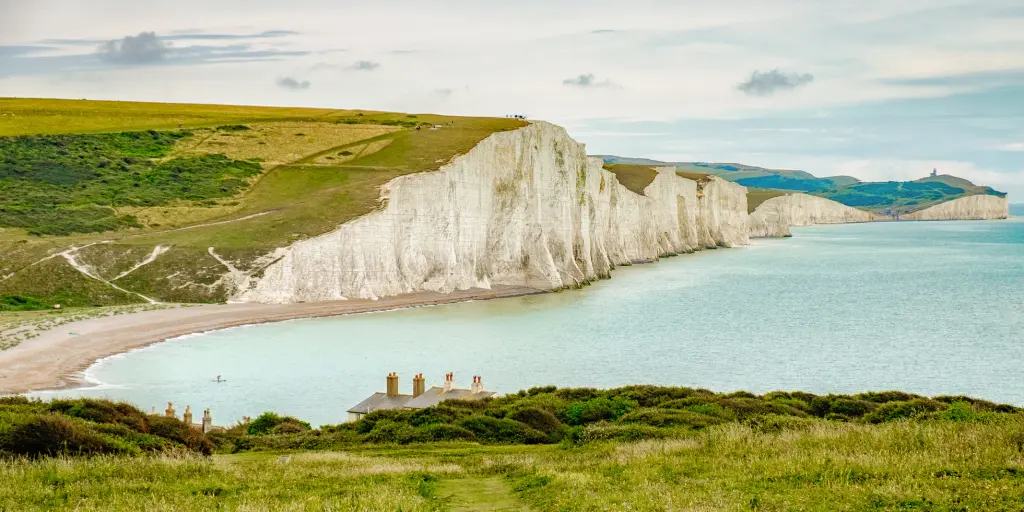
October is an especially beautiful month for visiting the UK; in fact, some of the best places in Europe to see the autumn leaves are right here on these humble islands!
Loch Lomond, Wye Valley, Perthshire and the Lake District - these are just some of the UK destinations that rival New England in terms of dazzling fall foliage.

But it's not just leaves that draw people to the UK in October; the country also hosts numerous numerous lively events and festivals that are worth making a trip for.
Seafood lovers might want to check out the Newquay Fish Festival in Cornwall, where top chefs from around the region cook up delicious fish dishes.
And in the second half of October, the BFI Film Festival takes over London, with more than 300 films and documentaries being screened across the city.
This wonderful event gives you the opportunity to watch new and unique movies from around the globe.
On the 31st, children and adults everywhere celebrate Halloween, which brings with it many of the same traditions you'll see in the USA: cobwebs, pumpkins, witches and sweets.
Some cities - like Birmingham, England, and Londonderry in Northern Ireland - even put on 'spooktacular' fireworks displays for the occasion.

Probably the most important November day in the UK is the 5th, known as Guy Fawkes Night or Bonfire Night.
This holiday commemorates a famous event on 5 November 1605, when Guy Fawkes - a member of the Gunpowder Plot - made a failed attempt to blow up the House of Lords.
To celebrate the fact that King James I survived the attempt, the people of London lit bonfires all around the city, a tradition that still carries on across the UK to this day (although today, you'll see mostly fireworks rather than bonfires, for obvious safety reasons).

If you're in the UK on this day and hear people chanting, 'Remember, remember, the fifth of November,' that's why!
One of the best Guy Fawkes celebrations is in East Sussex, where more than 30 'bonfire societies' band together and form torchlit processions through the towns.
With its pagan feel and spooky atmosphere, it's quite the experience!
Thinking of travelling a bit further north? November in Scotland is pretty chilly, but on the other hand it's a wonderful time to try and spot the Northern Lights - or the 'Mirrie Dancers,' as the Scots call them.
Isle of Skye, Aberdeenshire, Orkney and Caithness are all in prime positions for stargazing.
In some countries, December is considered the dead of winter. But in the UK, it's really more like late-autumn, with temperatures remaining around 5-7°C (mid-40s°F).
Finally, the bland UK weather pays off!
An added bonus is the magical holiday spirit that takes hold in December, with fairy lights and Christmas markets adding a jolt of energy to the country.
The markets in Bath and Edinburgh are some of the best Christmas markets in Europe, easily rivalling the likes of Vienna and Prague.
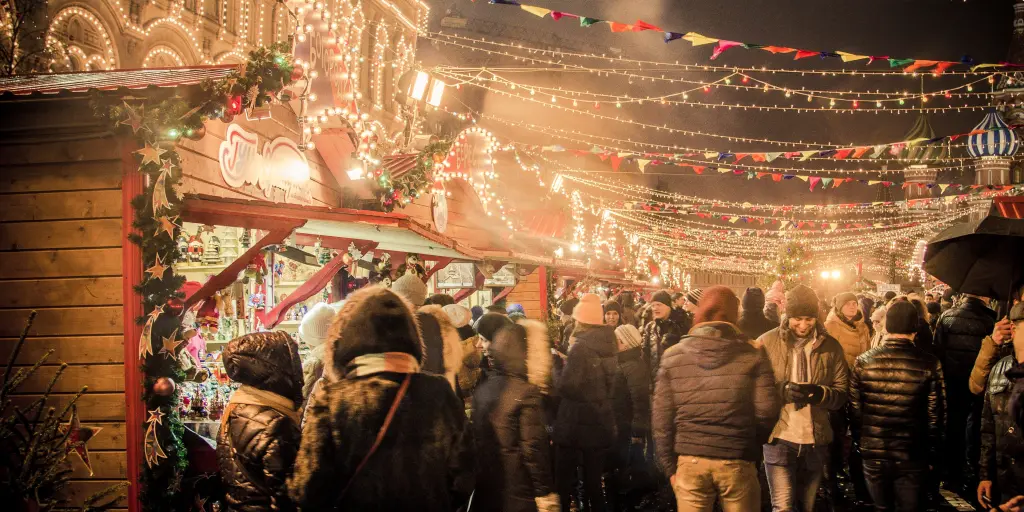
And if you stick around long enough, New Year's in Edinburgh (which the locals call Hogmanay) is second to none.
The only drawback to visiting the UK in December is that you certainly won't be the only one; with schools out of session and many businesses closed, it's a super popular time go.
Still, if you're looking for a sure-fire, heartwarming way to thaw your winter blues, a visit to the UK will most certainly deliver.

Join our email list!
By joining our email list, you give LazyTrips permission to use your email for sending you newsletters, emails and updates including for marketing purposes. Your email will not be provided to third parties.
Related posts

UK Edition Change
- UK Politics
- News Videos
- Paris 2024 Olympics
- Rugby Union
- Sport Videos
- John Rentoul
- Mary Dejevsky
- Andrew Grice
- Sean O’Grady
- Photography
- Theatre & Dance
- Culture Videos
- Fitness & Wellbeing
- Food & Drink
- Health & Families
- Royal Family
- Electric Vehicles
- Car Insurance Deals
- Lifestyle Videos
- UK Hotel Reviews
- News & Advice
- Simon Calder
- Australia & New Zealand
- South America
- C. America & Caribbean
- Middle East
- Politics Explained
- News Analysis
- Today’s Edition
- Home & Garden
- Broadband deals
- Fashion & Beauty
- Travel & Outdoors
- Sports & Fitness
- Sustainable Living
- Climate Videos
- Solar Panels
- Behind The Headlines
- On The Ground
- Decomplicated
- You Ask The Questions
- Binge Watch
- Travel Smart
- Watch on your TV
- Crosswords & Puzzles
- Most Commented
- Newsletters
- Ask Me Anything
- Virtual Events
- Betting Sites
- Online Casinos
- Wine Offers
Thank you for registering
Please refresh the page or navigate to another page on the site to be automatically logged in Please refresh your browser to be logged in
The Independent's journalism is supported by our readers. When you purchase through links on our site, we may earn commission.
10 of the best days out to treat dad this Father’s Day
Quality time with your paternal figure is a great way to celebrate this 16 june, article bookmarked.
Find your bookmarks in your Independent Premium section, under my profile

Sign up to Simon Calder’s free travel email for expert advice and money-saving discounts
Get simon calder’s travel email, thanks for signing up to the simon calder’s travel email.
As the summer season slowly creeps into sight, there are just two weekends to go until it’s time to celebrate Father’s Day on Sunday 16 June.
With this inevitably comes last-minute card shopping, serious sibling negotiations on dad’s favourite beer and religiously checking the weather forecast in the run-up to the family barbeque.
If gifts prove too tricky and socks for the third year in a row feel like a step too far, why not give your paternal figures the gift of quality time? Food, football, booze and golf are often a good place to start – but there are also plenty of options that are a little more original. There’s whiskies to taste, tandem bikes to pedal and facials to relax dotted across the UK , along with days out doing everything from embracing the Euros to taking a steak-searing masterclass or hurtling down a zip line over a quarry in Wales .
Here are our top picks of things to do with dad for some slightly stereotypical but failsafe fun this Father’s Day.
Read more travel inspiration :
- The tiny twin-island nation that’s become a celebrity holiday hotspot
- Barcelona for Valencia and other holiday swaps to avoid the crowds
- The best family adventure holidays in Europe that adults, teens and kids will love
Catch the first UEFA Euro England match

To put your best foot forward with football-fanatic dads, the first of England’s Euro 2024 group games has fallen on Father’s Day. Bond over some sport with beers and burgers at your local from 8pm for the England v Serbia game or fire up the barbeque in the garden if the British weather is on side.
England v Serbia 8pm 16 June on BBC One
Whet your palette at a whiskey tasting

Whiskey connoisseurs (over 18) can spend the afternoon at a range of distilleries across the country this Father’s Day. To enjoy a whiskey tipple in Stourton with Dad, visit the Cotswolds Distillery for their daily hour-and-a-half cask warehouse tour and tasting session of award-winning spirits and liqueurs.
Cotswolds Distillery Tour & Tasting from £25 per person, Cotswoldsdistillery.com
Take a steak cooking class at The Langham

To fine-tune the steak skills of culinary-inclined fathers, a Shaken & Seared cooking masterclass at Sauce by The Langham promises to teach all things preparation, seasoning and sauce. With a welcome cocktail, steak dinner with wine and sharing dessert included in the class, it’s sure to get the well done from Dad.
Shaken & Seared cooking class, from £145 per person, Saucebylangham.com
Relax with a Donnington Valley spa experience

There’s an activity for every proud parent this 16 June, no matter how you choose to unwind. Treat fathers to a spa day – with a side of golf – at Donnington Valley in Berkshire for some R&R and a round of nine holes. Think energising facials, rolling countryside and a terrace bar for the ultimate family kickback.
For Men C+ 55-minute Energy Facial, £80, Donningtonvalley.co.uk
Brave a ghostly walking tour in Edinburgh
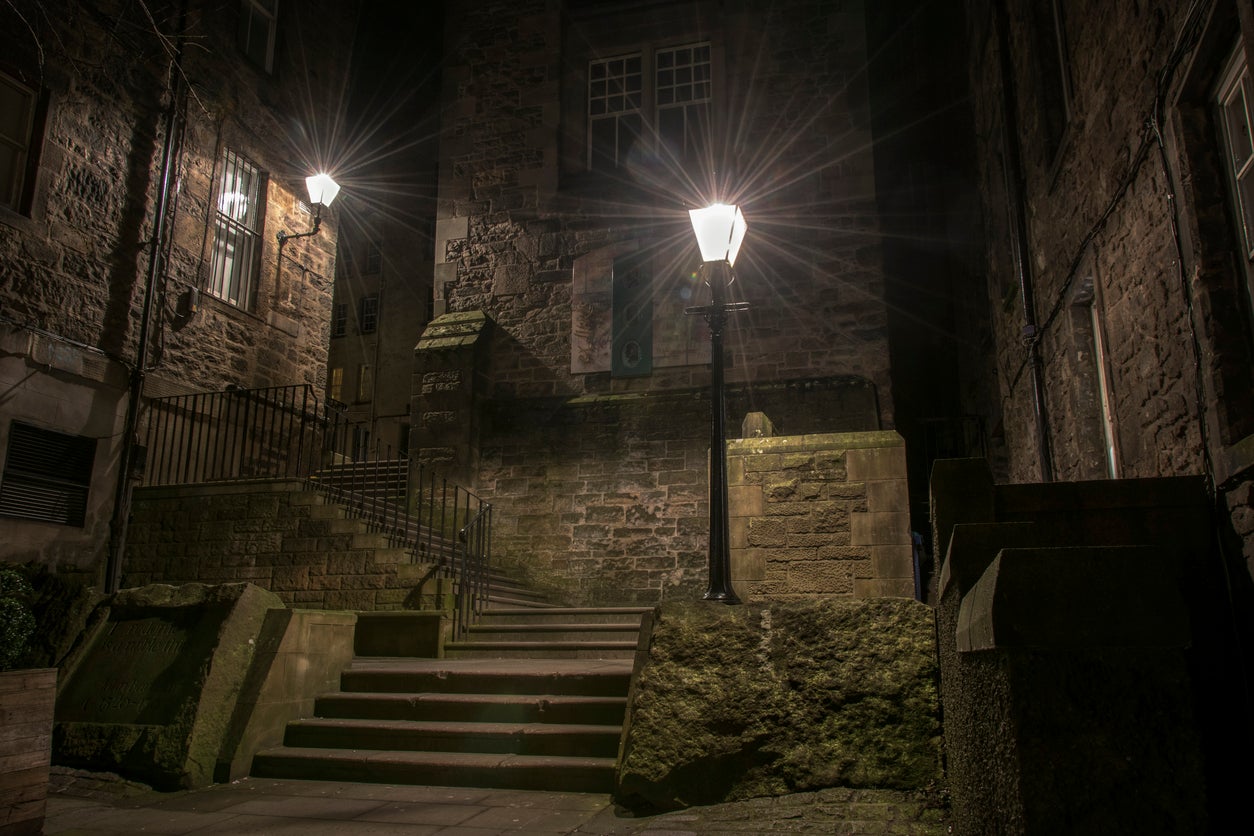
A ghoulish walk through the dark streets of Edinburgh is not one to be forgotten in a hurry. Thrill-seeking families in the Scottish capital will feel shivers down their spine on this free walking ghost tour through the Old Town, alleyways and graveyards after dark.
Free 1.5-hour ghost tour from 7pm daily with Edinburgh Free Tour, Fareharbor.com
Pedal in pairs on a tandem bike ride

Why not scrap competitive cycling sessions and take a tandem pedal through the Sussex countryside to relive arguments past on who is doing most of the legwork this Father’s Day? We forecast great views, light squabbling and a lot of laughs.
Sussex Countryside Four Hour Tandem Bike Hire, £51, Virginexperiencedays.co.uk
Fly through the sky on a Welsh zipline

Tick off a first this Father’s Day with a bucket list 100mph zipline over the Penrhyn Quarry in Bangor. With Snowdonia views and space for a family of four to fly at the same time – 700 feet high – a voucher for Zip World is a great gift for adrenaline junkies to race 1,555m to the bottom of the ‘Velocity’ line.
Zip World Velocity day flight for four people for £295, Zipworld.co.uk
Get adventurous at Lainston House
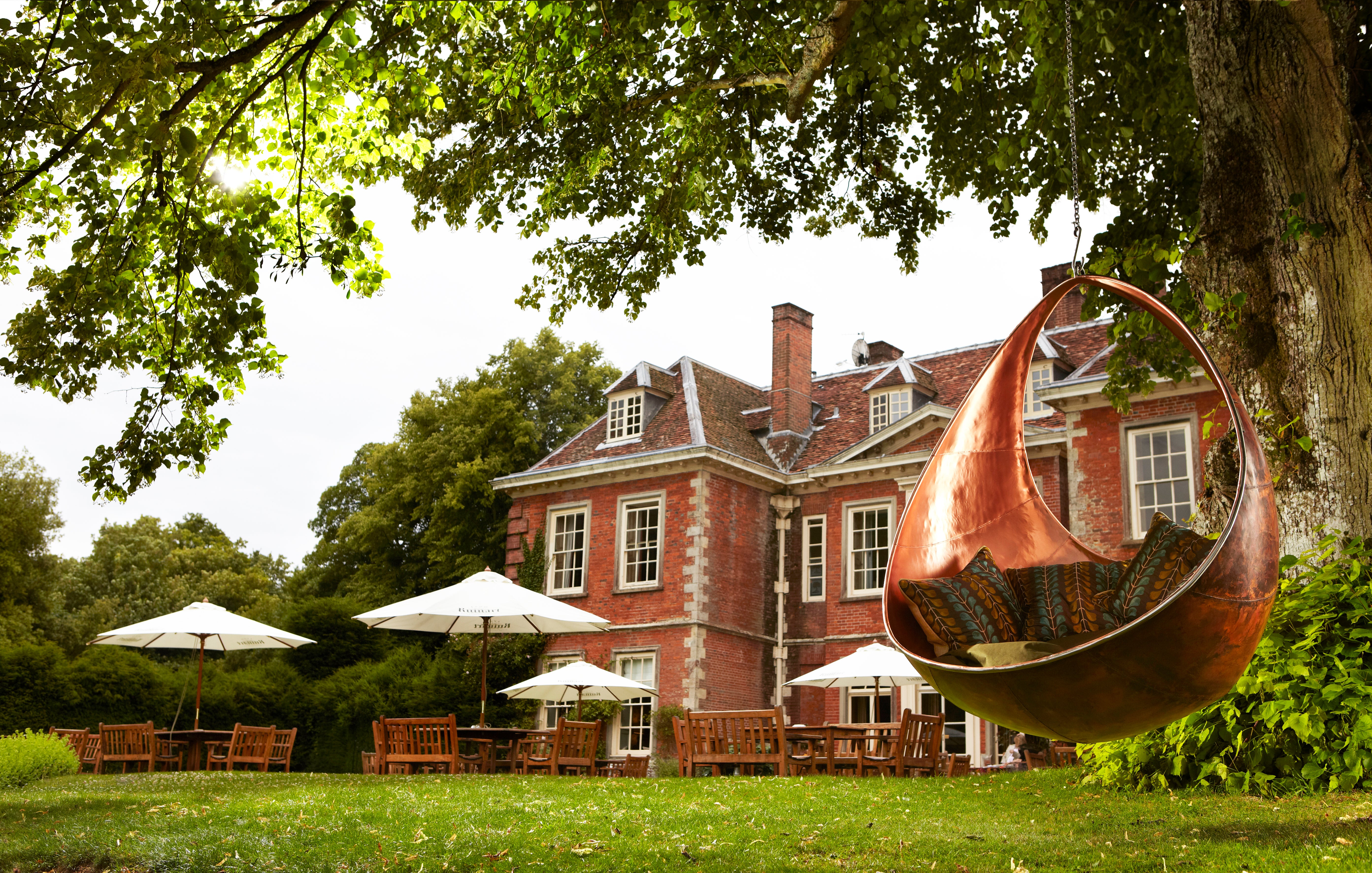
For a rustic adventure in nature, Lainston House in Winchester has a full-day itinerary including clay pigeon shooting and archery followed by a hog roast with all the trimmings on 16 June. The ‘fit for a king’ fete of activities kicks off at 10am for families to practise their aim and hit bullseye before sitting down for lunch.
Hog roast, clay pigeon shooting and archery experience, from £75 per person, Exclusive.co.uk/lainston-house
Venture off-road on a 4x4 driving experience

If fast cars are dad’s thing, an off-road G-Wagon adventure at Mercedes Benz World offers a nerve-wracking drive through a variety of terrains, inclines, water crossings and obstacles on a foot-to-the-floor 10-acre circuit in Weybridge. Whether learning the skills as a driver or feeling the thrill as a passenger, there’s something for everyone on and off the track.
4x4 G-Class Passenger Ride for three people from £40, Mercedes-benzworld.co.uk
Immerse yourselves in a virtual reality experience

Although you won’t find a journey back to Ancient Egypt on the departures board at Heathrow, at Horizon of Khufu in Westfield Stratford a virtual reality experience transports visitors into the Great Pyramid of Giza and tombs of Pharaoh Khufu. The 45-minute break from reality is great for a rainy day in London – the whole family will enjoy crawling through ancient burial chambers and navigating the Nile.
Horizon of Khufu, £21 per person, Horizonkheopsexperience.com
Read more: The best London hotels for afternoon tea
Join our commenting forum
Join thought-provoking conversations, follow other Independent readers and see their replies
Subscribe to Independent Premium to bookmark this article
Want to bookmark your favourite articles and stories to read or reference later? Start your Independent Premium subscription today.
New to The Independent?
Or if you would prefer:
Want an ad-free experience?
Hi {{indy.fullName}}
- My Independent Premium
- Account details
- Help centre
NEWS... BUT NOT AS YOU KNOW IT
This the best (and worst) day and time to fly in 2024

Share this with

It’s officially summer and, if you’re lucky, you’ll have a flight booked to a gorgeous European destination to soak up the sun.
After all, it’s not like we’re catching many rays here in the UK at the moment.
But travelling is rarely smooth-sailing and it turns out that some dates and times to travel are much better than others.
According to new research, the best day and time to fly is on a Wednesday at 7am .
The research from HappyOrNot , the makers of the smiley face feedback surveys you see in airports, analysed data from more than 30 countries and 10 million customers, to find out which date and time gets the most positive feedback.
At 7am on Wednesdays, 84.5% of customers gave positive feedback about their travels.
So clearly the early start doesn’t dampen travellers’ spirits.

This was closely followed by 8am and 4am in the morning, which received 84.4% and 84.2% positive customer feedback respectively.
The worst times to travel were in the late hours, with midnight being the worst culprit.
It was closely followed by 11pm and 10pm which had lower customer satisfaction scores of 79.1% and 79.3%.
The late night flights are the ones causing trouble for holiday goers it seems, so maybe think about booking a morning flight.
It’ll only get worse if you’re jetting off on a Sunday too. This was voted the least happy day to travel, with customer satisfaction dropping to 80.5%.
A fifth of people weren’t happy with their journeys on this day, and the last thing you want is a nightmare experience to start your trip off on a bad note.

The feedback button company also discovered which areas of the airports were the most unhappy.
It comes as no surprise that baggage claim received the most negative feedback in the entire airport.
We’ve all had it happen to us, you get to the conveyor belts to wait for what feels like hours for bags to start to appear, only to find yours wasn’t put on the plane or it was damaged in transit.
The happiest area of the airport was security. It had the least negative feedback in the entire terminal, meaning us travellers must’ve finally got the hang of putting our liquids in the right sized bag.
Overall the main qualms holiday goers had with their airport experiences were rude staff and irritating queues.
Making sure you have a pleasant journey doesn’t stop once you’re on the plane though.
If you’re a nervous flyer, Metro also has the scoop on the most turbulent flight routes.

Turbulence prediction website Turbli examined 150,000 routes to find the most turbulent journeys of last year.
The results show those looking for smooth flights might want to avoid South American travel – especially going from Santiago, Chile, to Viru Viru International airport in Bolivia, as this 1,180-mile journey ranked as the most turbulent.
The route from Almaty, in Kazakhstan, and the capital of Kyrgyzstan, Bishkek, came second.
Milan to Geneva scooped fifth position in the rankings, alongside Milan to Zurich in tenth place.
Your Daily Horoscope

Daily horoscope today: June 6, 2024 astrological predictions for your star sign
This is because, as Turbli founder Ignacio Gallego Marcos explains, routes over the Andes or Alps ‘appear high in the ranking due to mountain wave turbulence over the Andes and Alps.’
Do you have a story to share?
Get in touch by emailing [email protected] .
MORE : Popular European city imposes new ban on groups of tourists
MORE : 8 lifesaving essentials every festival goer should pack — but that you’ll probably forget
MORE : This genius 3-in-1 fan, charger and torch has over 3,000 5-star reviews on Amazon and is a ‘godsend’ for festivals or camping trips

Get need-to-know travel news, inspiration and advice from Metro every week.
Sign up here....
Privacy Policy

You were tall, with light-coloured eyes, brown hair, an eyebrow piercing…
To the curly haired white man in black. You were on the Elizabeth line…

Enter your birthday for your free daily horoscope sent straight to your inbox!
Get us in your feed

Europe Travel Guide
Last Updated: April 18, 2024

From beautiful Paris to smoke-filled coffeeshops in Amsterdam, Oktoberfest to La Tomatina, Europe is a massive, diverse continent with an unlimited assortment of things to see and do. You won’t have any problem filling your time, whether you’re backpacking Europe for a few months on a budget or just spending a few weeks there on a well-earned vacation.
The continent boasts wonderful beaches, historical architecture, amazing wine, and tons of world-class festivals. Every country is incredibly different from the next too, providing limitless variety in what you do during your trip.
I first backpacked Europe in 2006 and was hooked immediately. I’ve been visiting every year since, have run tours around the continent, and even wrote a book on traveling in Europe . It’s a destination I love and never get tired of exploring.
This guide will give you an overview of Europe and the tips and tricks you need to start planning your trip. I’ve also written extensive travel guides to each country on the continent (linked below in this post) so you can get more in-depth information for your specific itinerary too!
Table of Contents
- Things to See and Do
- Typical Costs
- Suggested Budget
- Money-Saving Tips
- Where to Stay
- How to Get Around
- How to Stay Safe
- Best Places to Book Your Trip
- Related Blogs on Europe
Click Here for Country Guides
Top 5 things to see and do in europe.

1. Tour the Greek Islands
These islands are the mecca of summer beach fun and each is unique in its own great way. There’s Ios (beach party central with archeological ruins and awesome boat tours); Kos (ancient ruins and nature); Crete (Bronze Age ruins of Knossos, hiking, beaches, and wine), Santorini (iconic blue water, white buildings, and local wineries); Mykonos , (the upscale party island with beautiful beaches, villages, and sunsets), Naxos (best island in the Cyclades). Plus, Milos, Corfu, Lemnos, Zakynthos, and so many more! With hundreds of islands in the country, you can always find what you are looking for!
2. Ride the rails
Europe is famous for its international rail system. Rail passes like the Eurail Pass have been around forever and still make it very easy to get from country to country on a relatively small budget (and with lots of flexibility). Europe has some of the fastest trains in the world that travel up to an incredible 217 mph (350 kph). The whole continent is connected by trains and there’s a growing push for even more connections and long-distance, high-speed trains in order to reduce flying and help combat climate change. There’s nothing more quintessential than riding the trains in Europe and I encourage you to take as many trains as possible. It’s one of the best ways to see the continent.
3. Get lost in Paris
The “City of Lights” is everything people say it is. I fell in love with it the first time I stepped foot in Paris . The city is just magical. You have a ton of museums, cafes, jazz clubs, famous art, and beautiful architecture. I love just strolling around the streets of the Quartier Latin (Latin Quarter) or Montmartre neighborhood as it makes for a breathtaking day. Another one of my favorite things to do here is just sit in the Jardin des Champs-Élysées park and picnic like the Parisians. For something a bit different, check out the famous Catacombs and Paris Sewer Museum. With so much to offer in the way of culture, history, and gastronomy, it would take years to see everything here but you can still get a good feel of the city in a few days.
4. Go city hopping
There are so many amazing cities in Europe that we’d need a top 100 to list them all. Here are some of my personal favorites and must-see cities: London is rich in history, culture, and the famous Big Ben clock; Edinburgh is a vibrant medieval city with cozy pubs and a famous castle with a huge New Year’s Eve Party; Amsterdam has cozy coffee shops and canopied tree-covered canals; Berlin has a wild party scene, street art, and the Berlin Wall; Barcelona has tapas, beach, and unique Gaudi architecture; coastal Lisbon has colorful tiles, old tramcars, cobblestone streets and plenty of fresh seafood; Prague has a beautiful intact Old Town, incredible architecture and eclectic bars; Tallinn Estonia has beautiful medieval buildings with colorful roofs. Florence is a mecca for Italian Renaissance architecture, art history, and gelato; Stockholm mixes medieval architecture and modern art and design. Crisscross the continent, take in the culture, and enjoy all the historic cities!
5. Hit the Alps
Whether you go skiing in the winter or hiking in the summer, the Alps hold some of the most breathtaking views in all the world. You don’t even need to be an expert hiker because there are mountain trails for all levels and crystal-clear Alpine lakes. Check out the spectacular Eibsee trail loop in Bavaria at the foot of Die Zugspitze, Germany’s tallest mountain, for the clearest, multi-colored, sparkling lake you’ve ever seen. Or the Männlichen Kleine Scheidegg Panorama trail in Switzerland’s stunning green and snow-capped Alps. Or visit Italy’s Dolomites in South Tyrol for the scenic Seceda trail. The Alps have trails for every fitness level and in every season.
Other Things to See and Do in Europe
1. tour amsterdam.
I love Amsterdam so much that I lived here for a short period of time in 2006. Here cobblestone and brick streets weave around lovely canals as people ride their bikes to and fro. My favorite things to enjoy here are Amsterdam’s vibrant art and music scene and there are also a ton of interesting museums here like the Anne Frank House, FOAM, the history museum, and the hemp museum. Be sure you get out of the center into Jordaan and Oost with their wonderful outdoor cafes and fewer tourists. Also, a visit to Amsterdam wouldn’t be complete without a canal cruise to visit the many islands and there are many to choose from that include snacks and drinks, sunset cruises, live guided tours, and more.
2. Hang out in Barcelona
Barcelona is a city that goes 24 hours a day, 7 days a week. It truly could give NYC a run for the “city that never sleeps” title. Be prepared for late-night dinners and parties until dawn. Besides a great food and nightlife scene, there is a wonderful beach, tons of Gaudi architecture (including the fairytale-like Parc Güell, as well as the iconic Sagrada Familia , which has been under construction for over 100 years!), incredible food tours, one of the best history museums in the country, and lots of outdoor spaces. What I love about Barcelona is that when you’re ready to chill, you can wander around Parc de la Ciutadella and marvel at the majestic fountains, plant life, and buildings created from an ornate military fortress.
3. Visit Berlin
Hip and trendy Berlin is an energetic destination. It is one of Europe’s most affordable capital cities, with a vibrant music and art scene and a growing foodie movement. Be sure to spend some time learning about the city’s darker history via the many excellent museums, memorials, and landmarks. The East Side Gallery, a section of the Berlin Wall that’s now painted with murals, and the Memorial to the Murdered Jews of Europe are two especially powerful reminders of Germany’s past. For all periods of German history, don’t miss the Deutsches Historisches Museum (German Historical Museum) – it’s one of the best history museums in the world. Once you’ve had your fill of history, relax in Berlin’s many green spaces, from Tempelhof Field, the site of a former airfield and popular local hangout spot, to Tiergarten, a tree-covered former hunting ground for 17th-century aristocrats.
4. Drink beer at Oktoberfest
Oktoberfest is a must for anyone going to Germany at the end of September. While not a budget option since beers now cost 15 € a maß, I love the energy and friendly camaraderie this event inspires. For two weeks, millions of people from all over the world gather for lots of beer, excitement, music, and wild fun. Watching thousands of people sing together, raising quart-sized beer mugs for endless toasts, and enjoying the general party atmosphere makes you feel good about the world. (Or maybe that’s just the beer?) Just be sure to book your accommodation well in advance and be prepared to pay top prices for them. If you don’t have an outfit, don’t worry, there are plenty of shops even at the main train station where you can buy a Bavarian dirndl dress and men’s lederhosen.
5. Experience London
Get a taste of English culture in diverse London . The museums here are some of the best in the world (most are free) and include the Tate, the British Museum, the City Museum, the National Gallery, the Historical Museum. There’s no shortage of iconic sights here as well, with Big Ben, the House of Parliament, the London Eye, the Tower of London, Tower Bridge, and of course, Buckingham Palace. I love London’s diversity because of the countless international eateries with great food and wonderful pub culture, perfect for after a long day seeing the sights. Head to Brick Lane on the weekends for some amazing food and craft markets. I prefer Paris to London, but there is something sophisticated and fun about London. Just watch those pints — London is not a cheap destination!
6. Get outdoors in Scandinavia
My favorite region in Europe is Scandinavia. The quality of life here is high, the people are beautiful and friendly, and the cities are clean and historic. Cycling the cities, taking canal tours, hiking the vast forested areas, archipelago hopping, enjoying fika (a Swedish coffee break), and warming up in saunas are just a few of the popular activities that await you here. True, this area of Europe is not cheap, but there are plenty of ways to reduce your expenses. Don’t let the high prices scare you away. Highlights for me include Copenhagen , Stockholm , Gotland, Norway’s fjords, and Lapland in Finland .
7. Get enchanted in Prague
Prague has an amazing history and is one of the most beautiful and picturesque cities I’ve ever seen. Highlights include the 9th-century Prague Castle, the magnificent Charles Bridge (built in the 14th century and one of the oldest standing bridges in the world), the 10th-century old square with its iconic astronomical clock, and the winding Jewish Quarter. Even if you only have a few days there don’t miss the free walking tour which is one of my favorites in Europe and the best way to learn about the Old Town and the tragic history of the city that went from thriving Bohemian capital of art, music, and literature to part of the Iron Curtain after WWII. Some of my favorite gems here include the fantastic black light theater shows in 4D and the one-of-a-kind medieval dinner show in an old tavern complete with musicians and jugglers not to mention hearty food and drinks. During the weekends it heaves with people enjoying the bars, cheap beer, and delicious food so try to visit during the week (and in the spring or fall) to beat the crowds.
8. Relax on the French Riviera
Here, you can pretend to live the high life for a little bit. Have fun in the sun, relax on the beach, swim in azure blue water, hobnob with the rich and famous, and sail on (or gaze at) gigantic yachts. As for cities, Nice is nice with its palm-tree-lined promenade, old town, and many art museums. If you want to go see how the rich and famous live, spend an afternoon checking out Cannes to soak up some glamorous vibes on La Croisette where they hold the famous Cannes Film Festival. The kingdom of Monaco with its tiny streets, beautiful buildings, and world-famous casino is just a skip away too.
9. Enjoy the great outdoors in Interlaken
Located in the beautiful mountains of Switzerland, Interlaken is a gorgeous place to unwind with fantastic hiking, delicious hot chocolate, and plenty of outdoor sports. The area is full of natural attractions to explore, including the St. Beatus Caves (complete with a legendary dragon), the cascading 500-meter-high (1,640 feet) Giessbach Waterfalls, the Jungfraujoch mountain railway (which leads to the highest train station on the continent), and a plethora of lakes (hence the town’s name). It’s a good alternative to all the cities and museums. Interlaken is also a popular party destination for backpackers and other young travelers. By far, my favorite scenic and visually stunning trail was the Oberberghorn panoramic hike, where you can wander the green mountain ridge ogling the amazing views and the turquoise-blue Brienzersee.
10. Experience history in Rome
In this thriving historical city, you can’t walk two feet without stumbling over a ruin, making Rome a history buff’s dream. Its tiny streets are perfect for wandering as you explore the Colosseum, see the Forum and Palatine Hill, visit the Pantheon, spend time in Vatican City, admire the Spanish Steps, and toss coins into the famous Trevi Fountain. The skip-the-line tickets can definitely be worth it so you don’t waste time waiting outside attractions. Rome also has amazing food (it’s Italy, after all) and nightlife. Visit the Trastevere area for a taste of “local” Rome and chill bars. It’s my favorite area in the city because you feel like you’re in a small village in the middle of a big city.
11. Hike around the Cinque Terre
Cinque Terre is my favorite part of Italy. These five beautiful cliffside towns are perched near warm waters and beautiful olive and grape groves. There are wondrous and strenuous hikes in these hills; for a real challenge, take trail #8. Or just walk the coastline for something less difficult. Many activities here revolve around the coastline: kayaking, swimming, having a beach picnic or visiting the Technical Naval Museum. If you happen to be here in December or January, don’t miss the Nativity Manarola, the world’s biggest lighted nativity scene.
12. Tour Krakow
Krakow looks like it stepped out of a medieval postcard. It’s a hip, trendy, and youthful city that’s the center of education in Poland, meaning there are a lot of university students here. Most travelers come to party here (the vodka is cheap) but try to enjoy the city’s history and food besides just the bars. Walk the Royal Road through the Old Town to the 13th-century Wawel Castle, tour Schindler’s Factory (where Schindler saved over 1,200 Jews during World War II), and visit the sobering Auschwitz-Birkenau concentration camp. You can also take a fascinating day trip to the UNESCO World Heritage Wieliczka Salt Mine, a 13th-century mine with cavernous chambers, statues, chapels, chandeliers, and cathedrals all carved out of salt.
13. Visit the ruin bars in Budapest
The coolest nightlife in all of Europe is found in Budapest . Built in abandoned buildings, ruin bars feature funky art installations, repurposed furniture, and quirky decor. They are amazing, fun, and great places to meet locals, as people of all ages flock here. Open since 2001, Szimpla Kert is the original ruin bar and one of my favorites, along with Instant-Fogas Complex, which takes up an entire building and is actually many different bars in one. Don’t skip the ruin bars — they’re one of the most unique things about the city!
14. Explore Cornwall
The best part of England is outside London, yet unfortunately, not a lot of travelers leave London. Head west to the area of Cornwall for cheaper prices, welcoming locals, natural beauty, great hiking, rolling hills, plenty of medieval castles, and picturesque small towns. If you like biking, the Camel Trail from Bodmin to Padstow is worth the trip and you even pass by a local vineyard. It’s an easy way to spend a day (and it’s pretty flat so it’s not too hard to do.) Plus, I had the best fish and chips in Cornwall! Overall, it’s what you think of as “traditional England.”
15. Walk the Camino
El Camino de Santiago (The Way of Saint James) is an ancient pilgrimage route that stretches from France all the way across northern Spain. It is a 500 mile (800 km) trail that winds through incredible terrain, ending in Santiago de Compostela at the cathedral where St. James is supposedly buried. As a pilgrim, you get a “pilgrim’s passport” which allows you to stay in affordable pilgrim-only hostels, making this a surprisingly budget-friendly adventure. While it usually takes over a month to complete, you can just walk a section if you don’t have the time. To receive a “Compostela” (certificate of completion), you just need to walk the last 62 miles (100 km), which generally takes 4-5 days.
16. Throw tomatoes during La Tomatina
By far my favorite festival, the largest food fight in the world happens during the last Wednesday of August in Bunol, Spain. What started in 1945 as a local brawl has turned into a massive event drawing tens of thousands of people from all over the world. For about an hour, everyone throws tomatoes at each other, leaving streets ankle-deep in tomato juice. Afterward, everyone walks down to the river, cleans off, and then heads to the town square for sangria and music.
17. Find Dracula in Romania
Not a lot of people visit Romania but this underrated country in Eastern Europe has undiscovered yet picturesque medieval towns like Brasov (home to “Dracula’s castle”), Sighisoara, and Sibiu; gorgeous beaches on the Black Sea; and incredible hiking in the Fagaras Mountains — all at dirt-cheap prices. Other major sights include frescoed Byzantine monasteries, the steepled wooden churches of Transylvania, the hip university town Cluj-Napoca, the post-communist capital of Bucharest, and the Danube Delta, a huge nature reserve.
18. Drink whisky in Islay
Whisky has a long history on Islay , an island off Scotland’s west coast. It’s been made there since the 16th-century — first in backyards and then, starting in the 19th-century, in large distilleries. Over the years, whisky from the island came to be considered a specialty and was used to flavor a lot of other blends on the mainland. There are currently nine working distilleries on the island, all located along the island’s shores, with Laphroaig, Ardbeg, and Lagavulin being the most famous. Most distilleries here make single-malt Scotch, meaning that only one type of grain (barley) is used. My visit here was amazing and, even if you don’t like whisky, there are tons of good hikes and walks throughout this magnificent island.
19. Explore Iceland
Iceland is a magical country with majestic waterfalls, hidden hot springs around every corner, and sweeping vistas unlike anywhere else in the world. After my first visit, the country quickly became one of my favorite countries. With whale watching in the summer, the northern lights in the winter, and geothermal baths for soaking in year-round, there really is no bad time to visit! While Iceland’s main draw is the epic natural landscapes, it’s worth spending a couple of days in Reykjavik with its café culture, artsy feel, and brightly colored wooden row houses.
20. Sail the Croatian coast
With calm winds, short distances, a coastline littered with over 1,000 islands, and countless historical sites, Croatia is one of the world’s best sailing destinations. If you can, go during the shoulder season when you can find some great deals. Plan to stay at least a couple of days on one of the islands, with the most popular being Brac, Hvar, Krk, Cres, and Lošinj. However, don’t be afraid to get off the beaten path and explore some of the lesser-known islands such as Silba, Vis, and Lastovo. If you want to splash out and spend a week partying on a yacht, check out The Yacht Week, which hosts week-long parties, complete with DJs, from May-September. You can book a full boat to share with friends or just a cabin if you’re traveling solo. Prices start at 5,250 HRK per person and go up to 9,300 HRK.
21. Explore the Balkans
While the Balkans have become more popular with backpackers in recent years, it’s still largely overlooked by most budget travelers, despite being an extremely budget-friendly region. The Balkan peninsula is home to great (and again, overlooked) wine, beautiful medieval towns like Kotor and Mostar, stunning mountainous landscapes, beautiful pebble beaches, coffee culture, fresh, hearty yet inexpensive food, and museums covering the area’s history, including the most recent turbulent events of the early 1990s. I especially loved my time in Albania . Don’t miss the beautiful beaches in Ksamil, nicknamed the “Maldives of Europe’ as well as the mountain village of Gjirokastër, which was occupied by Romans, Byzantines, and Ottomans. The Balkans have so much to offer for every budget and every country has its unique cultural flavor.
22. Take a wine tour in the Loire Valley
Located in central France, the picturesque Loire Valley is a UNESCO World Heritage site and stretches 280 kilometers (174 miles) along the Loire River. One of the major wine-producing regions of France, the area is home to some of the best wines in the world, with over 1,000 vineyards open to the public. Even those who don’t drink wine will enjoy the beautiful small towns, great food, and the region’s over 300 impressive chateaux. I loved the medieval Chenonceau Castle and Chateau Villandry and the small villages like Saint-Florent-le-Vieil. Spring and Autumn are my favorite times to visit because you can go biking and do outdoor activities when it’s not too hot and there are fewer people. It’s an area not to be missed.
23. See Fado in Portugal
Fado is an important musical tradition in Portugal , originating in Lisbon and stretching back some 200 years. The word “fado” likely stems from the Latin word for fate, and it’s very haunting, poetic, and emotional music. Most of the songs follow themes of loss and mourning, and the music was popular with the working class (especially sailors). Performances normally take place in restaurants during dinner. In Lisbon, head to Clube de Fado, Tasca do Chico, Parreirinha de Alfama, or Senhor Vinho.
24. Tour green Slovenia
Slovenia is one of Europe’s least-visited destinations, which is mind-blowing to me because it’s an amazing place to visit. Slovenia offers all the beauty of Western Europe but at a fraction of the cost and with a fraction of the crowds. Perfect for outdoor adventure lovers, Slovenia offers rugged mountains, untouched landscapes, fantastic ski resorts, plentiful wine, sprawling cave systems, incredible food, and postcard-perfect lakes, such as the famous Lake Bled with its castle on an island. I loved Piran, Slovenia’s often overlooked coastal Venetian-style harbor town that was actually founded 3000 years ago. Stroll around its beautiful windy cobble-stoned streets, beautiful plazas, and take advantage of the many affordable restaurants right on the water. Make sure to also spend a few days in the country’s capital, Ljubljana, known as one of the continent’s greenest and most livable cities. Take a river cruise to see the city and enjoy the friendliness of the locals.
For more information on specific countries in Europe, check out the guides below:
- Albania Travel Guide
- Austria Travel Guide
- Belgium Travel Guide
- Belarus Travel Guide
- Bosnia & Herzegovina Travel Guide
- Bulgaria Travel Guide
- Czechia Travel Guide
- Croatia Travel Guide
- Denmark Travel Guide
- England Travel Guide
- Estonia Travel Guide
- Finland Travel Guide
- France Travel Guide
- Germany Travel Guide
- Greece Travel Guide
- Hungary Travel Guide
- Iceland Travel Guide
- Ireland Travel Guide
- Italy Travel Guide
- Latvia Travel Guide
- Lithuania Travel Guide
- Malta Travel Guide
- Moldova Travel Guide
- Montenegro Travel Guide
- Netherlands Travel Guide
- Norway Travel Guide
- Portugal Travel Guide
- Poland Travel Guide
- Romania Travel Guide
- Scotland Travel Guide
- Slovakia Travel Guide
- Slovenia Travel Guide
- Spain Travel Guide
- Sweden Travel Guide
- Switzerland Travel Guide
- Ukraine Travel Guide
Europe Travel Costs

Accommodation – Accommodation prices vary greatly by region. In Western Europe, hostel dorm rooms cost between 25-45 EUR per night, depending on the room’s size and the popularity of the hostel. I stayed in a 6-bed dorm in Berlin for 20 EUR, while the same one would have cost me around 45 EUR in Paris. A room in Paris costs on the higher end and a room in cheaper Athens costs on the lower end.
In Eastern Europe, hostel dorm rooms cost between 10-15 EUR per night depending on the size of the dorm room and the popularity of the hostel. The further east you go, the cheaper it gets. Expect to pay around 30-60 EUR per night for a private room that sleeps two.
In Scandinavia, hostel dorm beds cost around 25-45 EUR, while private rooms are 65-80 EUR. Budget hotels start around 85 EUR.
Most accommodations offer free linens, free Wi-Fi, and a lot offer free breakfast, but it’s important to check specific websites for exact amenities.
Campsites cost between 10-15 EUR per night for a basic plot for two without electricity.
Food – Food traditions in Europe run deep, stretching back centuries to become integral parts of each country’s culture. From baguettes in France to tapas in Spain, from hearty Eastern European stews and goulash to the fresh vegetables and olive oils of the Mediterranean, European cuisine varies as much as the countries themselves. Food prices differ greatly across the continent, so check individual country guides for specifics.
But no matter where you are, even in the more expensive countries, finding places to eat within your budget is easier than you might think. Throughout Western Europe, you can find small shops, street food stalls, or food trucks where you can get sandwiches, gyros, kebabs, slices of pizza, or sausages for between 3-7 EUR. These shops are most often found in train stations, bus stations, and main pedestrian areas, and offer cheap food alternatives that can have you eating on 12-17 EUR per day. Fast food (think McDonald’s) costs around 7-10 EUR for a combo meal.
Turkish, Middle Eastern, and Vietnamese eateries abound in Germany, while Indian food is incredible and everywhere in the United Kingdom. Meals at these restaurants usually cost between 8-12 EUR.
Restaurant meals in casual, traditional eateries generally cost around 13-25 EUR for a main dish and drink. Food is much cheaper in the east than in the west, and in the west, northern regions like Scandinavia and the UK are more expensive than southern countries like Spain, Portugal, and Italy.
In Eastern Europe, even if you are eating out for all your meals, you can still get by on a food budget of as little as 15 EUR per day.
For drinks, a pint of beer is 2-5 EUR, a glass of wine is 2-7 EUR, a cappuccino is 2-5 EUR, and cocktails range from 6-14 EUR.
If you eat out, do so at lunch and get the prix-fixe menu (two-course or three-course set menu). Restaurants offer this set menu during lunch, and with prices between 10-20 EUR, it’s a way better deal than the regular dinner menu. You can also get affordable lunches at outdoor markets. So many European cities have huge fresh food markets throughout town.
You can cook your own food for around 45-65 EUR per week. This gets you basic staples like rice, pasta, seasonal produce, bread, and some meat. You can save money by shopping at discount supermarkets like Profi, Lidl, Aldi, and Penny Market.
If you want to save big money on meals, head to one of the markets, pick up some cheese, wine, bread, meats, or anything else, and go to the park for a picnic. (Or grab a sandwich for later!) You’ll find the locals doing the same thing, and it’s one of the cheaper ways to get a true taste of local food.
Backpacking Europe Suggested Budgets
Prices for travel in Europe vary greatly depending on how far north, east, south, or west you travel. If you stick to the budget accommodations, food, and tours listed here and use all my tips on saving money, you need about 65-110 EUR per day in Western Europe, 40-50 EUR in Eastern Europe, and about 85-130 EUR in Scandinavia.
Those numbers reflect a traveler who stays in hostels, cooks some meals and eats out cheaply, enjoys a few drinks, and sticks to free and cheap activities like hiking, walking tours, and enjoying nature. This is your typical backpacker budget. You aren’t going to have a fancy time, but you aren’t going to want for anything either.
However, by getting tourist cards and rail passes, avoiding flights, occasionally Couchsurfing or camping, cooking all your meals, and not drinking, you can travel a lot cheaper. On this budget, you could do Western Europe on 35-45 EUR per day, Eastern Europe on 20-25 EUR, and Scandinavia on 50-65 EUR. That would require you to take a train or a bus or hitchhike everywhere, skip most museums, and limit how often you go out.
Generally, the suggested daily budget for Europe is 80-120 EUR. You can use the chart below to get an idea of how much you need to budget daily. Keep in mind these are daily averages – some days you’ll spend more, some days you’ll spend less (you might spend less every day). We just want to give you a general idea of how to make your budget. Prices are in EUR.
Europe Travel Guide: Money-Saving Tips
Individual country guides have more specific information on how to save money in them but here are some general tips on cutting your costs while you explore Europe:
- Picnic – This continent has a lot of little shops where you can buy pre-made sandwiches or ingredients to make your own. Many supermarkets have delis as well where you can get food to go. Buy some food, eat outside, and watch the city and its people go by. It’s a much more enjoyable and cheaper way to eat.
- Eat local and cheap – Not into picnicking? Eat at local sandwich shops, pizza parlors, Maoz, Wok to Walks, and outdoor street vendors. Avoiding restaurants and eating at a lot of the local “grab n’ go” places gives you a taste of the local cuisine at a much cheaper price. If you’re really on a budget, use your creative cooking skills to prepare meals at the hostel as well.
- Stay with a local – Hostels can add up really quickly. If you don’t have any friends with whom you can stay, consider using Couchsurfing , which connects you with locals who let you stay with them for free. Plus, they tend to also have meetups to meet other locals and travelers. It’s a great way to save on accommodation and meet a local who can share their insider tips and advice.
- Camp in a garden – A very good camping service specific to Europe is Campspace , which allows you to pitch a tent in someone’s backyard for free or for a small fee (around 10-20 EUR). All of the garden owners have profiles that tell you what services and facilities they offer. Also, many countries allow wild camping (like Sweden), which can save you a fortune if you have a tent.
- Take the bus – Budget bus companies like Flixbus can take you across the continent for cheap. I personally feel it’s best for day travel as sitting up for an overnight bus isn’t really ideal for sleeping. It isn’t glamorous, but with tickets starting at 5 EUR, you really can’t complain!
- Get a Rail Pass – Eurail Passes have saved me hundreds of dollars. If you are traveling far distances and through many countries, they are a great deal.
- Take the free city tours – One of the great things about Europe is that you can find free walking tours in all the major cities. They can be a great way to see the city attractions, take in some history, and learn your bearings without spending any money. Just make sure to tip your guide at the end!
- Plan accordingly – Plan your trip around Europe so you avoid doubling back. Transportation is a big expense so proper planning can save you a lot of money (and time). Go in a straight line or a loop. Booking your accommodation ahead helps you save as well since cheap, good places unsurprisingly get reserved first. One thing I’ve learned is that waiting until the last minute means you get stuck with expensive places or cheap places no one wants.
- Fly cheap – If you know where you are going and a train won’t do, try to book flights early. You can often get round trip fares for as little as 5 EUR from many of the European discount airlines like Ryanair or Wizz. Many capital cities have smaller airports farther from the city with ‘inconvenient’ times but cheaper fares. Keep in mind you might need to factor in an early morning Uber or taxi if the busses aren’t running and you have an early flight!
- Drink less – Those 5 EUR beers add up. Hit happy hours or pick and choose when you party. Hostel bars are a good place to get cheap drinks or buy your alcohol at the supermarket. Plus, in Europe, it’s legal to drink outside in parks, plazas, by the lakes or rivers. You’ll find you can save a lot of money by not going to bars and clubs. Partying your way across the continent will destroy your bank balance in no time.
- Get a city tourist card – Many local tourism offices sell a tourism card for all their attractions, tours, and restaurants. This card gives you free entry and substantial discounts on all the attractions and tours in a city, free local public transportation (a huge plus), and discounts at a few restaurants and shopping malls. They save a ton of money. If you plan on doing a lot of sightseeing, get one of these cards.
- Rideshare – If you’re flexible in your schedule, use the ridesharing service BlaBlaCar to catch rides with locals between cities (or countries) by paying a small fee. It’s like Airbnb but for rides. I used this service in Switzerland and, not only did I save a lot of money, but I got to meet interesting people and learn about local culture and life. Drivers are verified and it’s perfectly safe, though sometimes rides cancel at the last minute (which is why you need to be flexible). Check their ratings first and try to use rides where the person has done many trips.
- Bring a water bottle – The tap water is safe to drink in most of Europe, so bring a reusable water bottle to save money and reduce your plastic use. LifeStraw is my go-to brand as their bottles have built-in filters to ensure your water is always clean and safe.
- Get a HostelPass – HostelPass is a discount membership for hostels in Europe. Members get 10-20% off select hostels around Europe, as well as perks like free breakfast or free drinks. There are discounts on tours and activities too. It’s a great way to save money if you’re bouncing around Europe as they have hostels in 18 countries around the continent.
Where to Stay in Europe
Europe has a ton of budget accommodation options. The individual country and city guides have tons of recommendations but here’s a short list of some of my favorite budget hostels and hotels around Europe:
- The Flying Pig (Amsterdam, The Netherlands)
- Hotel 54 (Barcelona, Spain)
- Generator Hostel (Copenhagen, Denmark)
- Harcourt Hotel (Dublin, Ireland)
- Castle Rock (Edinburgh, Scotland)
- Ios Palm Pansion (Ios, Greece)
- Greg and Tom’s Party Hostel (Krakow, Poland)
- Largo da Sé Guest House (Lisbon, Portugal)
- Sophie’s Hostel (Prague, Czech Republic)
- The Yellow (Rome, Italy)
- City Backpackers (Stockholm, Sweden)
How to Get Around Europe

Public transportation – Transportation around most European cities is by tram, subway, or bus. Prices are typically around 2 EUR for a one-way ticket in Western Europe and closer to 1 EUR in Eastern Europe. Most large cities also have day passes available that offer unlimited public transportation. These passes are usually 5-12 EUR per day.
In large cities with international airports, there is usually a bus or train available that ferries travelers from the downtown core to the airport. Expect to pay around 5-15 EUR to get to/from the airport.
Bus – Buses are not quite as comfortable as Europe’s trains, although certain lines do have great amenities (like roomy seats and Wi-Fi). While buses are not the most efficient way to travel around the continent, they’re certainly dependable, reliable, and cheap. You can find last-minute rides for as little as 5 EUR. A route from Berlin to Munich is about 25 EUR, while Paris to Bordeaux can be as low as 10 EUR. Longer routes, like Amsterdam to Copenhagen, start at around 47 EUR.
Each country has its own national bus service, but some lines also take you long distances internationally. Megabus and Flixbus (which now owns Eurolines) are the most popular companies.
Train – Train travel is a great way to see Europe. Intercity train prices vary wildly from country to country, depending on whether you take the slow train or a high-speed train and how far in advance you book. For example, a high-speed train from Berlin to Munich costs around 38-60 EUR, Bordeaux to Paris is about 50-85 EUR, and Madrid to Barcelona ranges from 45-85 EUR. Non-high-speed trains and other intercity lines are a lot cheaper, generally costing about 40-50% of the price of high-speed trains. Eastern Europe inter-country trains usually cost between 45-100 EUR when the ticket is booked last minute. Short train rides of 2-3 hours within countries cost about 27 EUR.
To find routes and prices for trains around Europe, use Trainline .
You may also want to consider getting a Eurail Pass , which allows travelers to explore Europe by providing a set number of stops in a specific time period. These passes are continent-wide, country-specific, or regional. It can potentially save you hundreds of dollars.
Ridesharing/Car sharing – If your schedule is flexible, use a ridesharing service and catch rides with locals between cities (or countries). Drivers are verified and it’s perfectly safe. BlaBlaCar is the most popular.
If you’d rather rent a car yourself and find passengers to share a ride with, use Discover Cars to find the best car rental prices.
Flying – Budget airlines are so prolific that competition helps keep fares low. You can often find tickets where the fare is just 5 EUR round-trip! Companies like EasyJet, Ryanair, Wizz, and Vueling offer mind-blowingly cheap flights throughout Europe. Book at least a month early to scoop up great deals.
Make sure that the airport they fly into isn’t too far out of your way (transportation from the secondary airport sometimes negates the savings from using the budget airline itself).
Keep in mind that you’ll have to pay to check your baggage on these cheap flights. It costs about 25-39 EUR for one checked bag. If you wait to pay for your luggage at the gate, you end up paying almost double. Travel carry-on only to avoid this added cost.
Hitchhiking – Hitchhiking in Europe is very safe, but it’s not for everyone. Hitching is quite common around the continent and I’ve met a number of travelers who have done it (I, myself, traveled this way in Bulgaria and Iceland). Some countries are very supportive (Romania, Iceland, Germany) while others may be a bit more time-consuming (Italy, Spain). HitchWiki is the best website for hitchhiking info.
Here are my suggested articles for how to get around Europe:
- 7 Cheap Ways to Travel Across Europe
- Are Eurail Passes a Giant Scam or Do They Save You Money?
- The Ultimate Guide to Finding Cheap Flights
When to Go to Europe
There’s no wrong time to visit Europe. Peak season is summer, when Europe gets crowded and August is the time most European families are at the beach so everything becomes more crowded and expensive. But the overall atmosphere and weather are great during this time, so it’s still worth visiting during peak season (just book your accommodation in advance — especially in August). Keep in mind it’s much hotter in summer so if you like AC, be sure to check that your hostel or hotel has it before you book. You can expect the most crowds in Western Europe. For this reason, I feel summer is a great time to visit the Balkans and the Baltics because many people head to the beaches in Spain, France, Italy, Croatia, and Greece.
Shoulder season is spring and fall (April-May and September-October). It’s still warm during this time but there aren’t as many crowds and prices are cheaper. This is my favorite time to visit hotspot places like Spain, Croatia and Greece, where it’s still hot enough to swim in the sea but you have way more room on the beach. It’s also a good time to go hiking in the Alps in Germany, northern Italy, Slovenia and Switzerland because it’s cooler during the day so you’re much less sweaty on the mountain without shade. The weather is good, the crowds are smaller, and the prices lower.
Winter is from November to February but in much of Central Europe, it’s wet and cold until March or April. It gets cold, even as far south as it gets (like Greece). On the other hand, the Christmas season has Christmas markets and festivals galore! Even if it’s cold, this is a cultural tradition you can’t miss and why I love Europe in December. There is hot mulled wine, sweets, and plenty of hot snacks, which vary by country. One of my favorites is Prague because the Old Town Square is lit up with a gigantic tree with aromas of crispy cinnamon pastries and mulled wine. Berlin takes their Christmas markets very seriously, so there are around 80 different markets with special themes.
Winter is fantastic in Europe for skiing and snowboarding but it doesn’t have to break the bank if you plan carefully. While Switzerland and France are probably the most famous, they are also expensive, but there are plenty of budget winter options.
How to Stay Safe in Europe
Europe is very safe for backpacking and solo traveling, even if you’re traveling solo, and even as a solo female traveler. Violent crimes against tourists are very rare. In fact, some of the safest countries in the world are in Europe. (I wrote a whole article about how Europe is safe to visit right now .)
That said, there are scams and petty crimes you should watch out for, especially around popular tourist landmarks. The most important thing to be aware of is pickpockets in crowds and on public transportation. Zip your bags and don’t put your mobile phone in a jacket pocket where someone could quickly take it. This should be obvious but don’t flash your money to let everyone know you have a huge wad of cash.
When choosing a hostel, look for ones with lockers. It’s always a good idea to carry around a padlock or combination lock. Most hostels are safe and travelers respect each other and I’ve rarely seen things happen to people’s valuables. Nevertheless, I always think that prevention is better.
As anywhere, the standard precautions apply (never leave your drink unattended at the bar, never walk home alone intoxicated, etc.). When at the bar, always keep an eye on your drink. Avoid walking home alone at night if you’re intoxicated.
For female travelers in particular, it’s always a good idea to have a bit of extra money on you just in case you need to take an Uber or taxi back by yourself so you don’t take unnecessary risks to save money. If you’re using apps to date people while traveling, please use common sense and meet in public places. Since I’m not a female traveler, please check out the numerous female bloggers who have first hand knowledge of this.
If you’re worried about scams, you can read about common travel scams to avoid here.
If you rent a vehicle, don’t leave any valuables in it overnight. Break-ins are rare, but it’s always better to be safe than sorry. Be aware that the UK drives on the left and that most rental cars in Europe will have manual transmissions unless you request otherwise.
When hiking, always bring water, sunscreen, and bandaids or foot plasters. There is nothing worse than being halfway up the mountain with a blister and nothing you can do about it!
Likewise, when at the coast, don’t forget not only to wear sunscreen! I can’t tell you how many times I’ve seen people get burnt to a crisp the first day. Be sure to check the weather before you depart and dress accordingly.
If you do experience an emergency, dial 112 for assistance.
Always trust your gut instinct. Make copies of your personal documents, including your passport and ID. Forward your itinerary to loved ones so they know where you are.
The most important piece of advice I can offer is to purchase good travel insurance. Travel insurance will protect you against illness, injury, theft, and cancellations. It’s comprehensive protection in case anything goes wrong. I never go on a trip without it as I’ve had to use it many times in the past. You can use the widget below to find the policy right for you:
Europe Travel Guide: The Best Booking Resources
These are my favorite companies to use when I travel. They consistently have the best deals, offer world-class customer service and great value, and overall, are better than their competitors. They are the companies I use the most and are always the starting point in my search for travel deals.
- Skyscanner – Skyscanner is my favorite flight search engine. They search small websites and budget airlines that larger search sites tend to miss. They are hands down the number one place to start.
- Hostelworld – This is the best hostel accommodation site out there with the largest inventory, best search interface, and widest availability.
- Booking.com – The best all around booking site that constantly provides the cheapest and lowest rates. They have the widest selection of budget accommodation. In all my tests, they’ve always had the cheapest rates out of all the booking websites.
- HostelPass – This new card gives you up to 20% off hostels throughout Europe. It’s a great way to save money. They’re constantly adding new hostels too. I’ve always wanted something like this and glad it finallt exists.
- Get Your Guide – Get Your Guide is a huge online marketplace for tours and excursions. They have tons of tour options available in cities all around the world, including everything from cooking classes, walking tours, street art lessons, and more!
- The Man in Seat 61 – This website is the ultimate guide to train travel anywhere in the world. They have the most comprehensive information on routes, times, prices, and train conditions. If you are planning a long train journey or some epic train trip, consult this site.
- Rome2Rio – This website allows you to see how to get from point A to point B the best and cheapest way possible. It will give you all the bus, train, plane, or boat routes that can get you there as well as how much they cost.
- FlixBus – Flixbus has routes between 20 European countries with prices starting as low 5 EUR! Their buses include WiFi, electrical outlets, a free checked bag.
- SafetyWing – Safety Wing offers convenient and affordable plans tailored to digital nomads and long-term travelers. They have cheap monthly plans, great customer service, and an easy-to-use claims process that makes it perfect for those on the road.
- LifeStraw – My go-to company for reusable water bottles with built-in filters so you can ensure your drinking water is always clean and safe.
- Unbound Merino – They make lightweight, durable, easy-to-clean travel clothing.
- Top Travel Credit Cards – Points are the best way to cut down travel expenses. Here’s my favorite point earning credit cards so you can get free travel!
GO DEEPER: Nomadic Matt’s In-Depth Budget Guide to Europe!

While I have a lot of free tips on Europe, I also wrote an entire book that goes into great detail on everything you need to plan a trip here on a budget! You’ll get suggested itineraries, budgets, even more ways to save money, my favorite restaurants, prices, practical information (i.e. phone numbers, websites, prices, safety advice, etc etc), and cultural tips.
I’ll give the insider view of Europe that I got from years of traveling and living here! The downloadable guide can be used on your Kindle, iPad, phone, or computer so you can have it with you when you go. Click here to learn more about my book on Europe!
Europe Travel Guide: Related Articles
Want more tips for your trip? Check out all the articles I’ve written on Europe travel and continue planning your trip:

The 7 Best Hotels in London

10 Scotland Road Trip Tips You Need to Know Before You Go

The Perfect 7-Day Croatia Itinerary

The 6 Best Hotels in Copenhagen

The 6 Best Hotels in Florence

The 7 Best Hotels in Madrid
Get your free travel starter kit.
Enter your email and get planning cheatsheets including a step by step checklist, packing list, tips cheat sheet, and more so you can plan like a pro!

- Where To Stay
- Transportation
- Booking Resources
- Related Blogs
- Credit cards
- View all credit cards
- Banking guide
- Loans guide
- Insurance guide
- Personal finance
- View all personal finance
- Small business
- Small business guide
- View all taxes
You’re our first priority. Every time.
We believe everyone should be able to make financial decisions with confidence. And while our site doesn’t feature every company or financial product available on the market, we’re proud that the guidance we offer, the information we provide and the tools we create are objective, independent, straightforward — and free.
So how do we make money? Our partners compensate us. This may influence which products we review and write about (and where those products appear on the site), but it in no way affects our recommendations or advice, which are grounded in thousands of hours of research. Our partners cannot pay us to guarantee favorable reviews of their products or services. Here is a list of our partners .
How to Get the Best Car Insurance

Many or all of the products featured here are from our partners who compensate us. This influences which products we write about and where and how the product appears on a page. However, this does not influence our evaluations. Our opinions are our own. Here is a list of our partners and here's how we make money .
For a lot of people, buying car insurance is like buying sliced bread. It’s not the most exciting purchase, and the options all seem similar. So thrifty shoppers might simply reach for the cheapest thing on the shelf. But like cheap bread, cheap car insurance may leave you wishing you spent a little more on quality.
“The cheapest is not always the best,” warns Jessica McNally, an agency owner with Goosehead Insurance in Dallas. That’s because there are lots of factors that make up a car insurance company. And while price is one of them, it’s best to look at the bigger picture.
Here’s what to look for when picking the best car insurance company.
1. Choose a financially stable company
The best car insurance companies have plenty of money on hand to pay for customers’ claims. It’s important to check an insurer’s financial stability before buying a policy, especially if it’s a smaller insurer you’ve never heard of.
There are several independent agencies that evaluate the financial strength of insurance companies. One example is A.M. Best. You can use its online search tool to find an insurer’s financial strength rating. Companies with a rating of A or higher are considered to have an excellent ability to pay out customer claims.
2. Check customer satisfaction ratings and reviews
Not every insurer is customer-first. That’s why it’s important to research the customer satisfaction of insurers you’re considering.
You can turn to surveys from companies like J.D. Power to find insurers with the best customer satisfaction scores [0] J.D. Power . Auto Insurance Customer Satisfaction Plummets as Rates Continue to Surge, J.D. Power Finds . Accessed May 21, 2024. View all sources . Or, if you don’t mind doing a little detective work, you can compare customer complaints against insurers by using the National Association of Insurance Commissioners’ website . But take other people’s emotionally charged comments about companies or agents you might read online with a grain of salt, McNally advises.
3. Look for convenience
A great auto insurer should offer multiple ways to manage a policy. For example, some insurers allow customers to use a mobile app to file and track claims. But it’s hard to tell how simple it’ll be to file a claim or perform other essential tasks, like paying your premium, before becoming a customer.
Some telltale signs that an insurer will be easy to work with are high mobile app ratings, flexible customer service hours and an easy-to-use website with helpful content. Consider asking a company representative to walk you through the claims process to learn what you’ll need to do if you have to file a claim. And pay attention to how the company communicates with you. "If they don't properly communicate, well, that's a warning sign," says Michael DeLong, a research and advocacy associate for the nonprofit Consumer Federation of America.
4. Pick an affordable company
Car insurance premiums are stretching to record-breaking heights [0] U.S. BUREAU OF LABOR STATISTICS . Consumer Price Index for All Urban Consumers (CPI-U) . Accessed May 21, 2024. View all sources , and almost half of U.S. consumers shopped for a new car insurance policy in the past year, according to an April 2024 report by J.D. Power [0] J.D. Power . Half of Auto Insurance Customers Currently Shopping for New Policies, J.D. Power Finds . Accessed May 21, 2024. View all sources . The best car insurance companies offer competitive rates and a variety of potential discounts.
It’s not hard to get car insurance quotes online from many companies. Make sure you compare the same coverage options throughout the quote-gathering process. And don’t forget to look for car insurance discounts, like breaks for being a good driver, paying your premium in full or driving a new car.
More tips to find the best car insurance
When shopping for the best car insurance, keep the following tips in mind.
Assess your needs. Before buying car insurance, take a moment to reflect on what’s important to you and your family. For example, maybe you prioritize affordability and a well-polished mobile app, but don’t need accident forgiveness .
Consider small insurers. There are lots of small insurance companies you’ve probably never heard of. These regional insurers may provide lower rates and better customer service than the big companies you see advertised on TV.
Work with an independent agent. While it may be easy to get quotes yourself, independent car insurance agents and brokers can streamline the process. These experts vet companies and compile quotes from small and large insurers on your behalf. Independent agents and brokers can especially come in handy if you have a less-than-perfect driving record and can’t find insurance on your own.
Do your research. Search online for recent mentions of a company in the news before buying a policy, recommends DeLong. If you find a company has lots of recent lawsuits against it, you may want to think twice about signing on the dotted line. “And if they've had to pay out settlements, that's an even bigger red flag,” DeLong says.
Shop around once a year. Make a practice of shopping for car insurance every year — especially if price is important to you. Insurers adjust car insurance rates regularly, so what might have been the most affordable option last year may no longer be a bargain.
On a similar note...
Free car insurance comparison
Instantly compare top auto insurance companies.


IMAGES
VIDEO
COMMENTS
Learn about England's weather, crowds, and events throughout the year and find out the best times to plan your trip. Spring and fall are ideal for mild temperatures, scenic views, and fewer tourists, while summer and winter have their own attractions and challenges.
Learn when to visit England, Scotland, and Wales based on weather, crowds, and events. Find out the pros and cons of peak, shoulder, and winter seasons, and how to plan for rain and sunshine.
The best time to visit England is in spring, from late March to mid-June. The weather is mild, and there are numerous activities to enjoy, from exploring the countryside with blooming wildflowers to visiting historic sites like Highclere Castle and Shakespeare's house in Stratford-Upon-Avon. London also shines in spring with boat tours on the ...
Find out what's happening in England throughout the year, from festivals and events to weather and seasons. Whether you're looking for sunny beaches, cozy pubs, or outdoor activities, there's a month for you.
The best time to visit England is during April and May, when temperatures stay between 50 and 60 degrees and when crowds are at their lowest. You'll be able to find affordable accommodations with prices as low as $60 per night. During this time, you'll be able to enjoy Shakespeare Season and amazing family-friendly art festivals. ...
Learn about the weather, events and activities in each season and month of the UK. Find out the pros and cons of travelling in peak, shoulder and low season and how to plan your trip accordingly.
The Weather in the United Kingdom . The weather in the UK is relatively temperate year-round. Snow is rare, except in the mountains. Winter temperatures throughout the country rarely fall below freezing, even in Scotland; however, during the winter months, rain, humidity, and wind can make temperatures of 35 to 40 degrees Fahrenheit seem much colder.
Autumn in England runs from September to November. This season is pretty mixed in terms of weather. September is one of the best months to visit England, as summer temperatures often linger beyond August, and days are still sunny. However, it's a changeable time, and that means grey skies and rain too.
Learn when to travel to England based on weather, crowds, and events. Find out the average temperatures, rainfall, and public holidays for each month, and get tips from our specialists.
The best time to visit the United Kingdom is in spring (late March to early June) and autumn (September to November), when it's usually warm and dry. You'll see beautiful spring flowers or the leaves changing hue in autumn, and avoid the much busier summer period. However, the UK can be visited at any time of year, as its climate is ...
Learn when to visit England for beaches, festivals, cities, historical sites, and more. Find out the weather, prices, and crowds for each season and region in this comprehensive guide.
Best time to visit England: Month by Month. Pack your bags and grab your umbrella - it's time for a whirlwind tour through England's ever-changing landscapes, quirky traditions, and unbeatable experiences. From the bustling streets of London to the serene countryside of the Cotswolds, every month brings its own unique charm to this ...
Shoulder season in England: May-early June, September-early October. The shoulder season in England is great for enjoying the perks of summer weather while sticking to a budget, with temperatures reaching a high of 64°F in spring and 60 °F in the fall. Visiting England during shoulder season means you encounter fewer crowds at popular places ...
The best time to visit England is from late spring (late May to early June) until the end of summer (late September). Not only do you have the best chance of experiencing good weather, but the English countryside, coast and culture really shine when the skies are clear. Gardens, forests and wildflowers are in full bloom, alfresco dining is ...
The best time to visit England for Christmas markets (December) and the lowest prices of the year (January and February) England during the holidays is magical. While many tourists rush to countries like Germany, where the traditional Christmas markets originated, cities like London, York, and Bath have plenty of Christmas cheer to go around.
As a rule, it's colder and wetter up north and windier along the coast with the west of the country also experiencing plenty of rain. Autumn and spring are the best times to visit England but there's a lot to be said for beer gardens and cosy pubs so don't discount the winter or summer, whatever the weather. Call us for the best time to ...
The best time to visit London is March through May when the temperatures are mild and the city's parks are green and blooming. However, late spring - along with summer - is also prime tourist ...
The best time to visit England for sightseeing is generally during the spring and fall months of April-May and September-October. During these months, the weather is mild and comfortable, making it easier to enjoy outdoor activities and sightseeing. These months also tend to experience lower tourist traffic, which might make it easier to visit ...
Weather: The warmest and driest months in England are typically June, July, and August, making it a popular time for tourists to visit. However, it is also the busiest and most expensive time to travel. Spring (March to May) and Autumn (September to November) can also be good times to visit, with fewer crowds and pleasant temperatures.
Stephanie Pollak/Travel + Leisure. Best Times to Visit London for Smaller Crowds The lion's share of those 30 million annual visitors will touch down at some point during the summer months.
Best time to visit England. The bottom line is that it's impossible to say with any degree of certainty that the weather will be pleasant in any given month. May might be wet and grey one year and gloriously sunny the next, and the same goes for the autumnal months. November stands an equal chance of being crisp and clear or foggy and grim.
Rick's Best Three-Week Trip to England by Car. This 20-day itinerary covers the top sights in England. Day 1: Arrive in London, connect to Bath (sleep in Bath) Day 2: Bath (sleep in Bath) Day 3: Pick up car, visit Stonehenge, Wells, and Glastonbury (sleep in Bath) Day 4: Avebury, Blenheim Palace (sleep in Oxford) Day 5: Oxford, to the ...
Best time of year to visit England. Although you can enjoy the relatively temperate climate all year round, April to early June and September to October are the best time to visit England. The weather during these months is warm, mostly dry and pleasant. In spring, you can witness crocuses in bloom and puffins flickering on Farne Islands.
The overall best time to visit London is from May to August, when you'll have warm, dry weather, lots of events and festivals, longer days, and chances to score affordable hotel rooms. London's reputation for dreary, wet, cold weather may be deserved during the winter and early spring, but in late spring and summer, this city hums and ...
Best time to visit the UK - A month-by-month guide January. After the chaos of Christmas subsides, things become calmer and quieter in the UK, making it quite a pleasant time to visit. You can also take advantage of the post-holiday sales offered at many of the stores in London and beyond. The only downside of visiting the UK in January is the ...
As a rule, it's colder and wetter up north and windier along the coast with the west of the country also experiencing plenty of rain. Autumn and spring are the best times to visit England but there's a lot to be said for beer gardens and cosy pubs so don't discount the winter or summer, whatever the weather. Call us for the best time to ...
Catch the first UEFA Euro England match. To put your best foot forward with football-fanatic dads, the first of England's Euro 2024 group games has fallen on Father's Day. Bond over some sport ...
The worst times to travel were in the late hours, with midnight being the worst culprit. It was closely followed by 11pm and 10pm which had lower customer satisfaction scores of 79.1% and 79.3% ...
Backpacking Europe Suggested Budgets. Prices for travel in Europe vary greatly depending on how far north, east, south, or west you travel. If you stick to the budget accommodations, food, and tours listed here and use all my tips on saving money, you need about 65-110 EUR per day in Western Europe, 40-50 EUR in Eastern Europe, and about 85-130 EUR in Scandinavia.
1. Choose a financially stable company. The best car insurance companies have plenty of money on hand to pay for customers' claims. It's important to check an insurer's financial stability ...